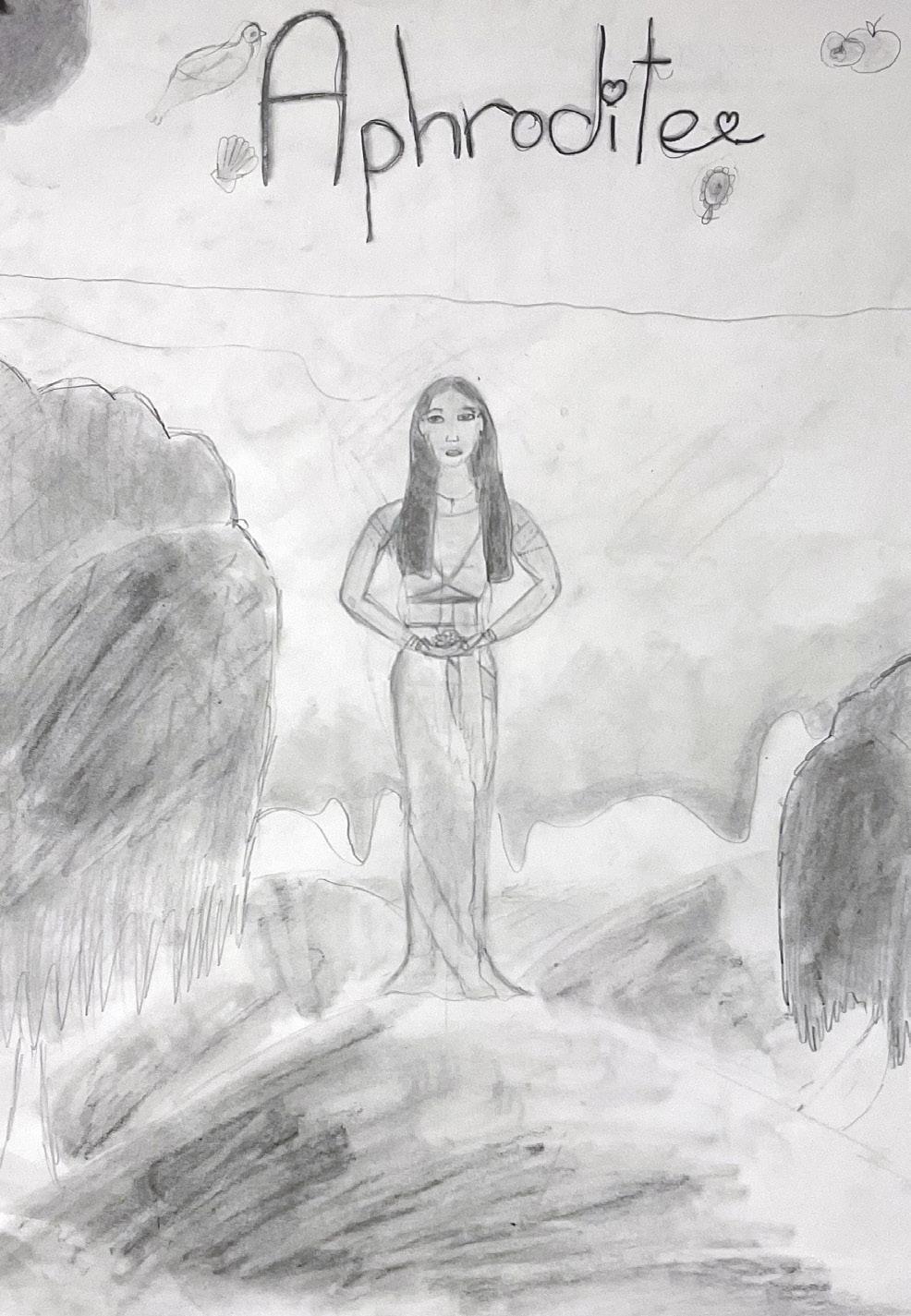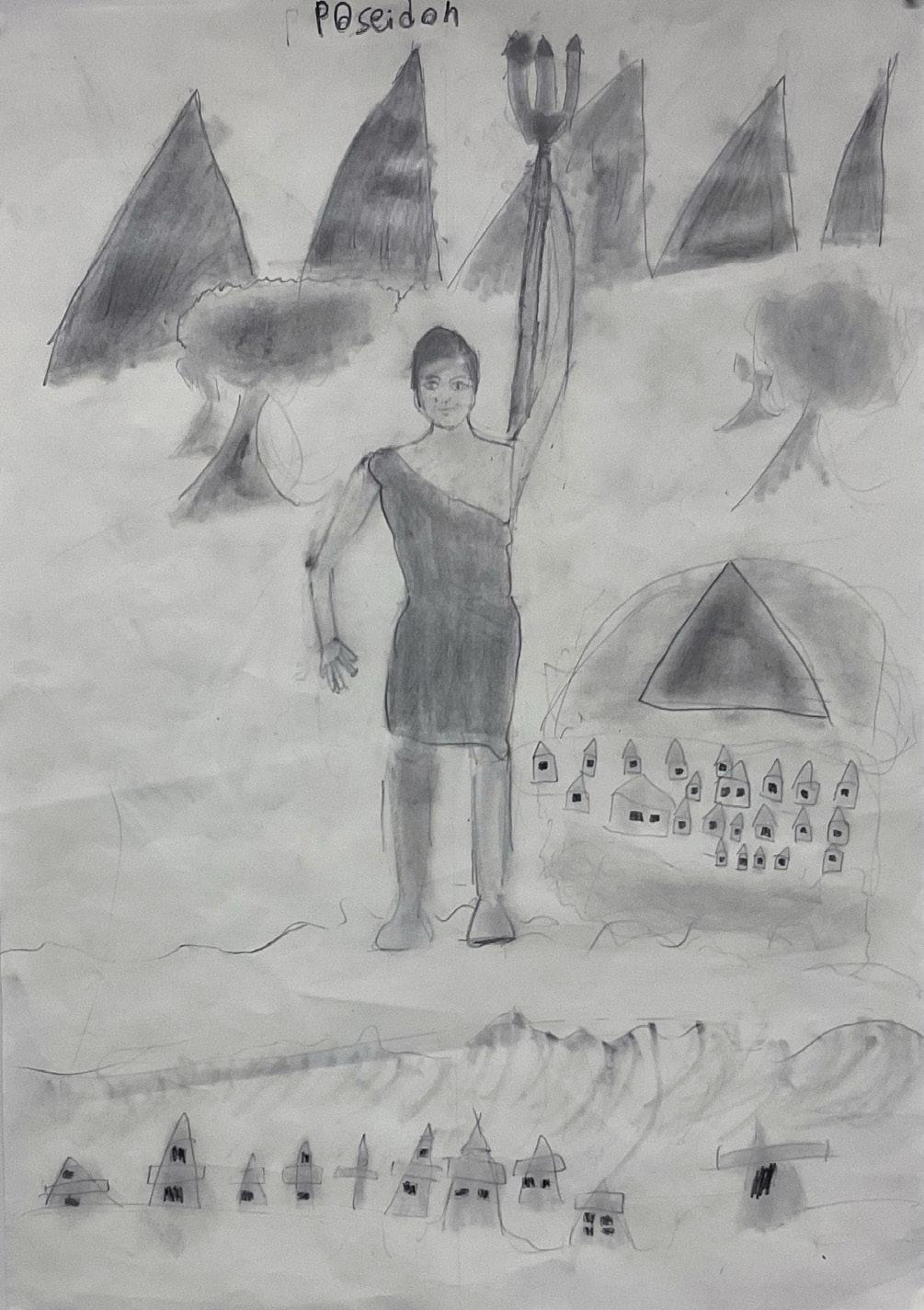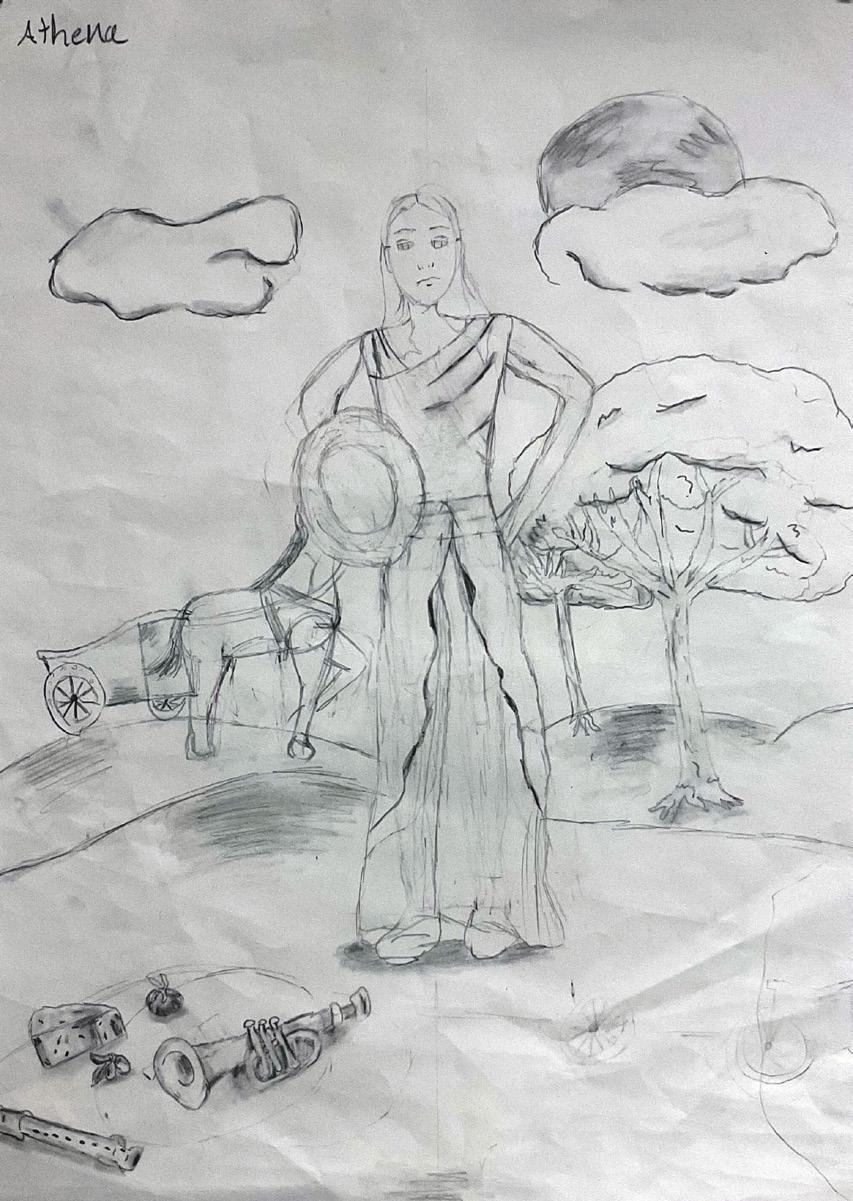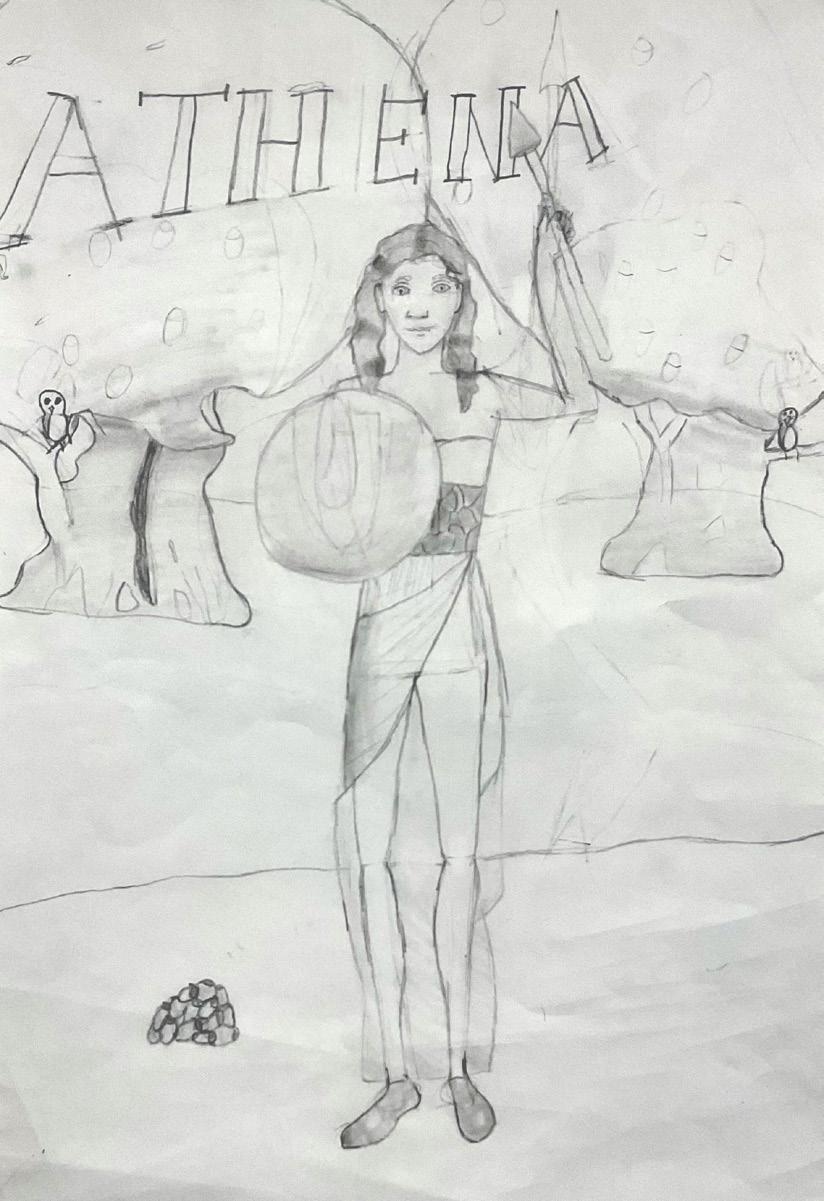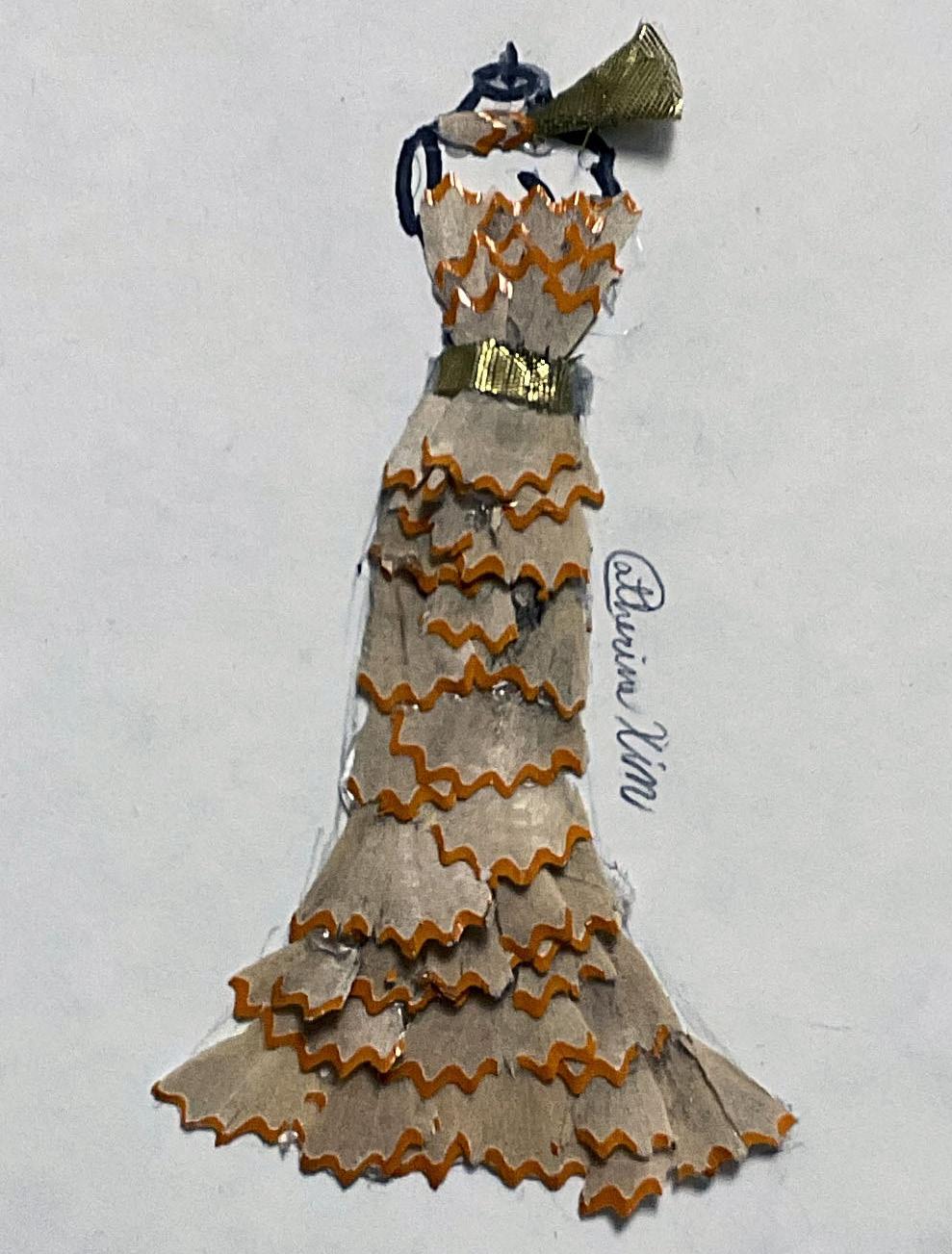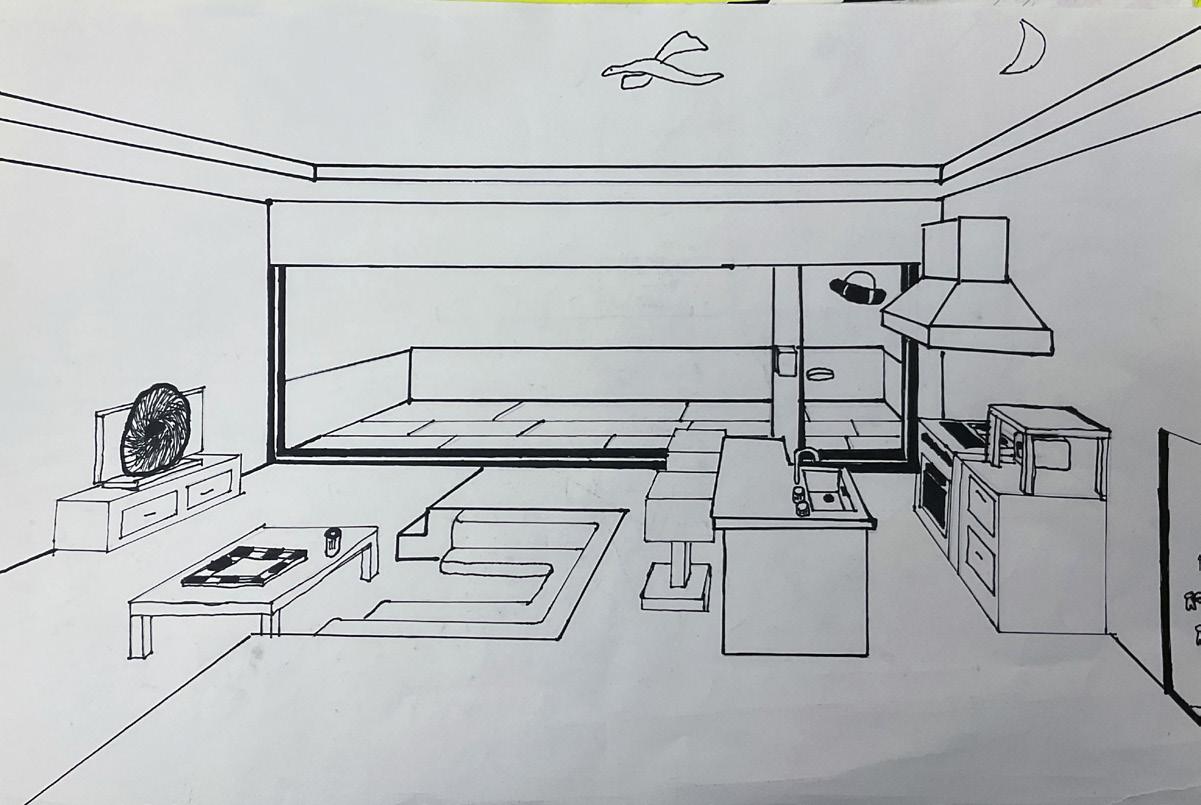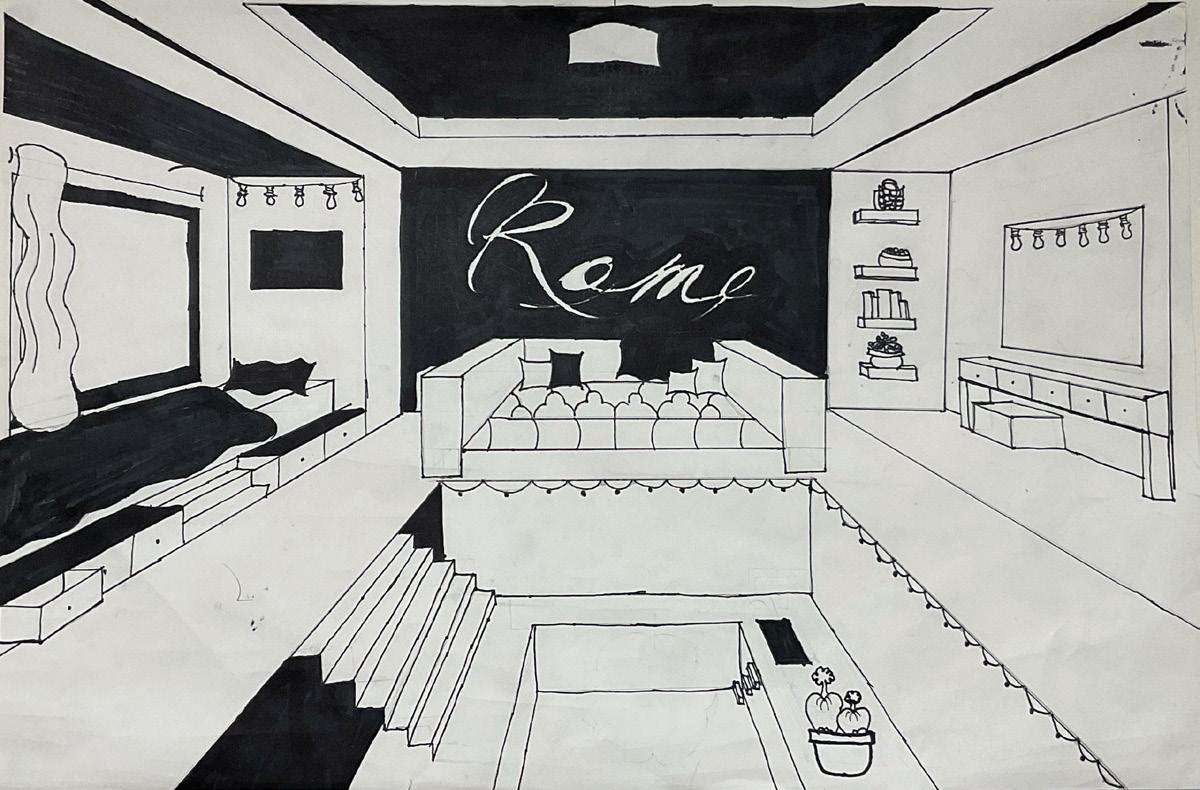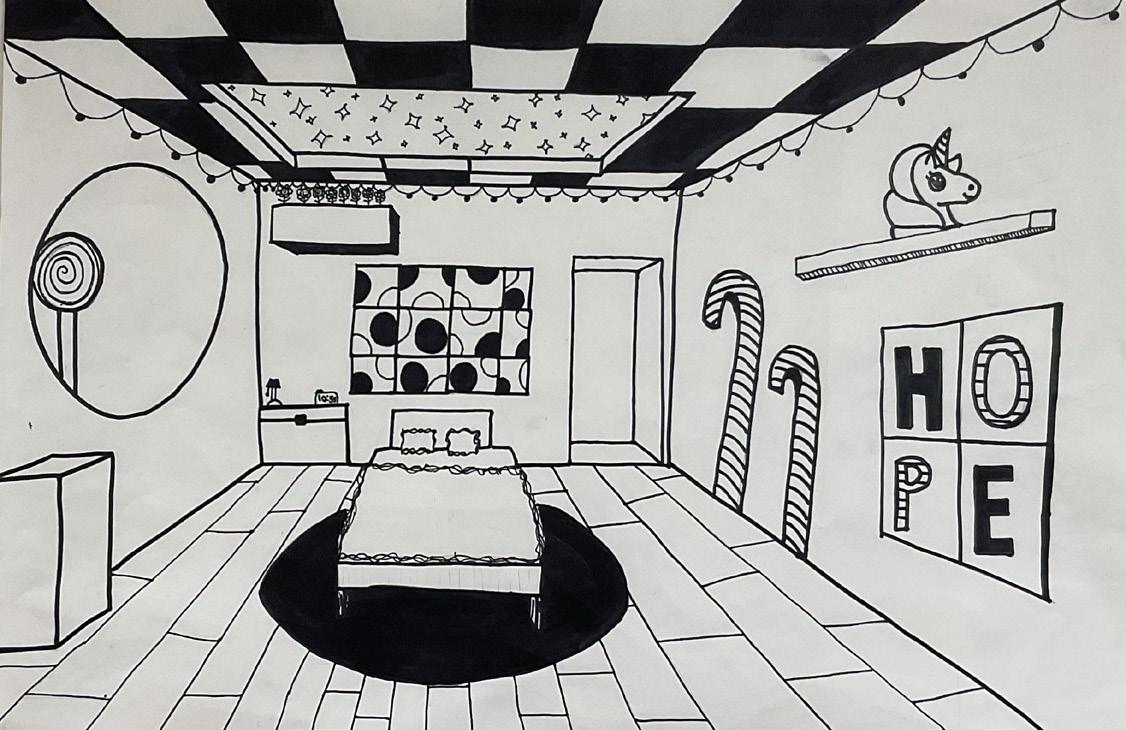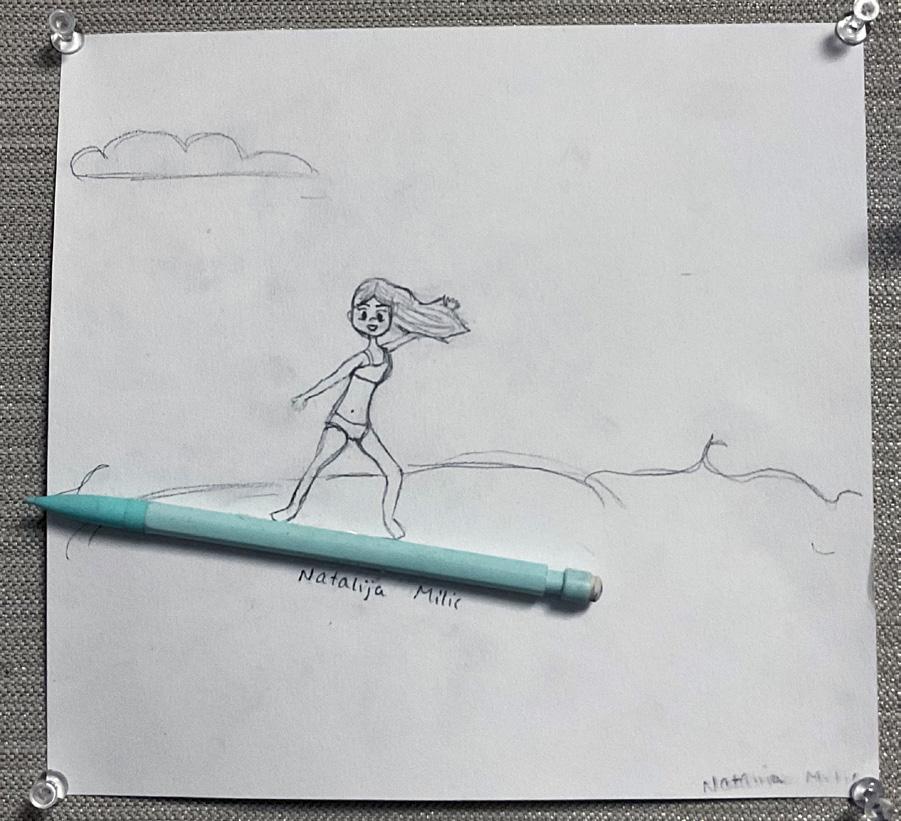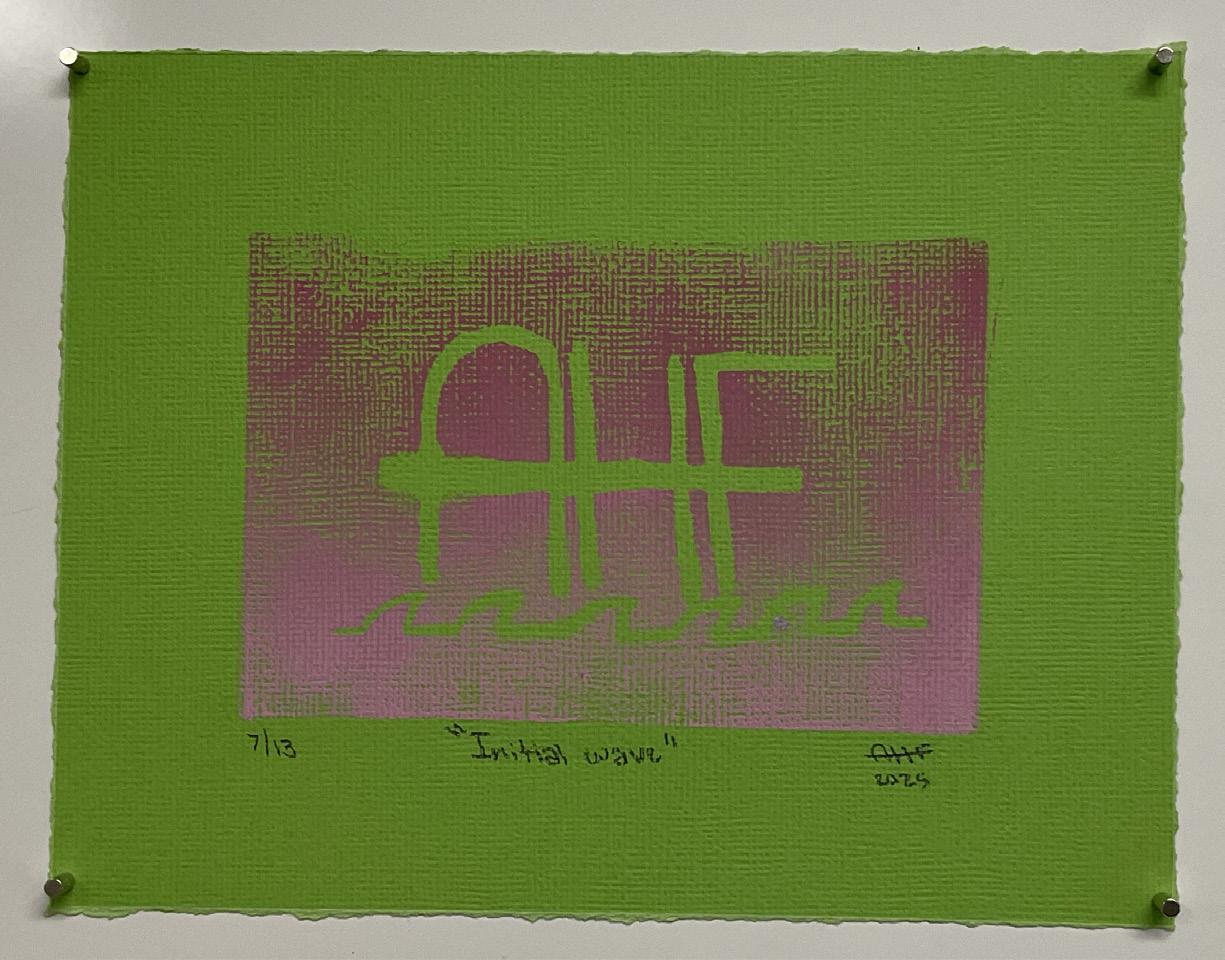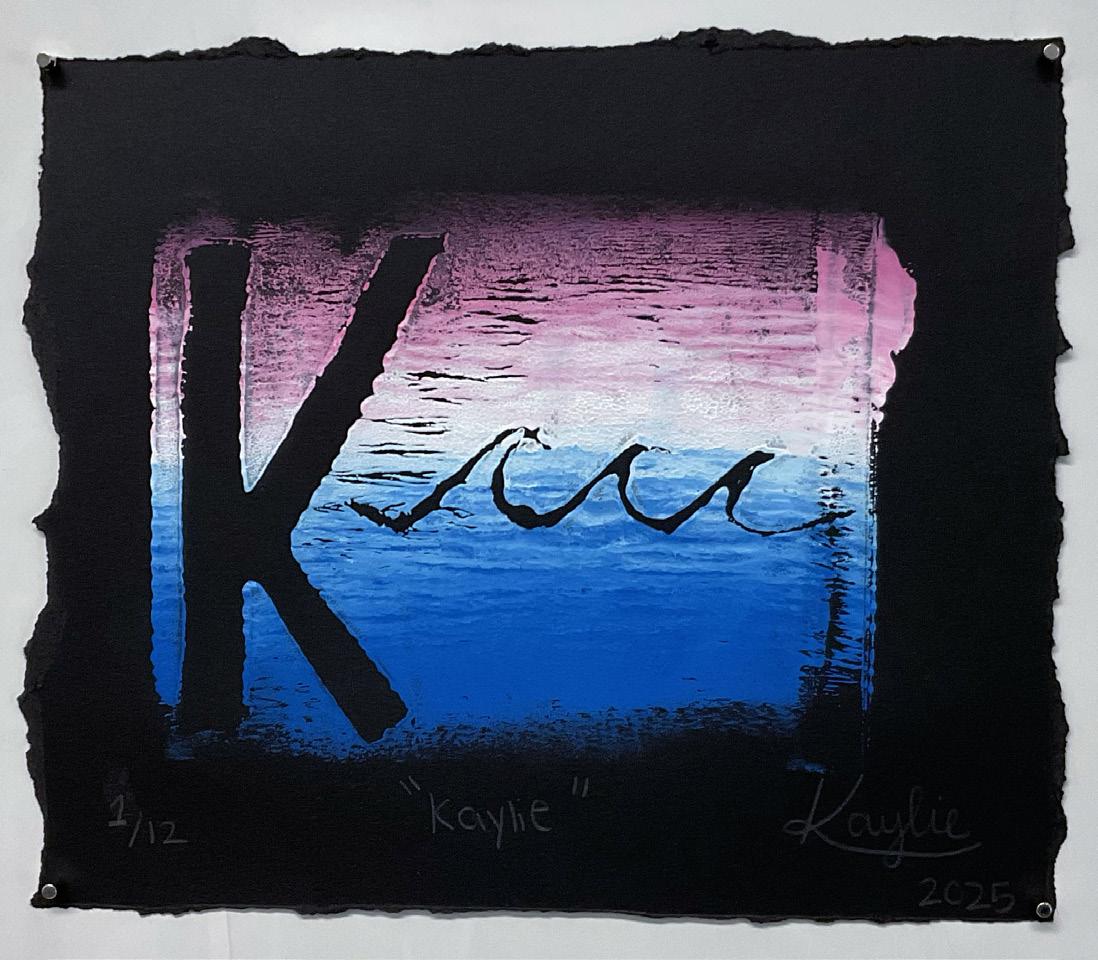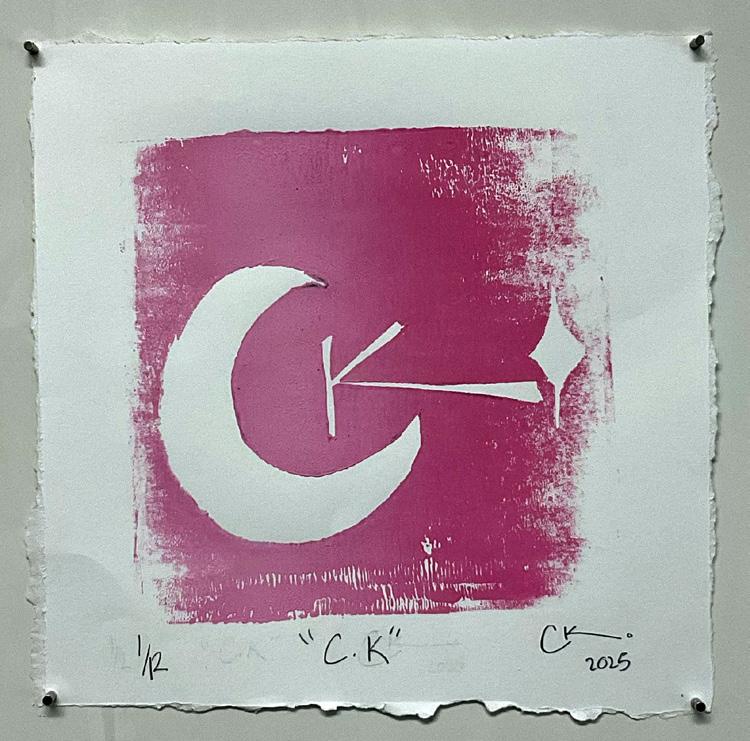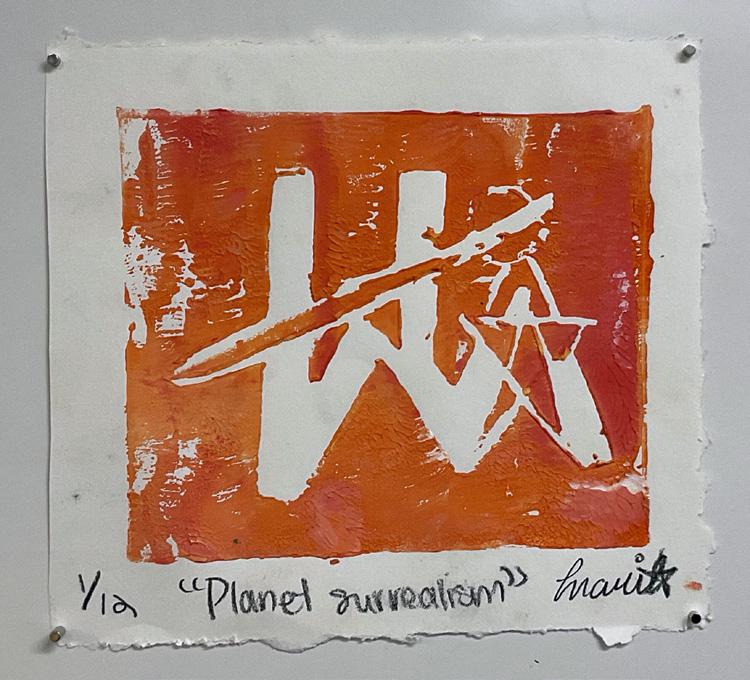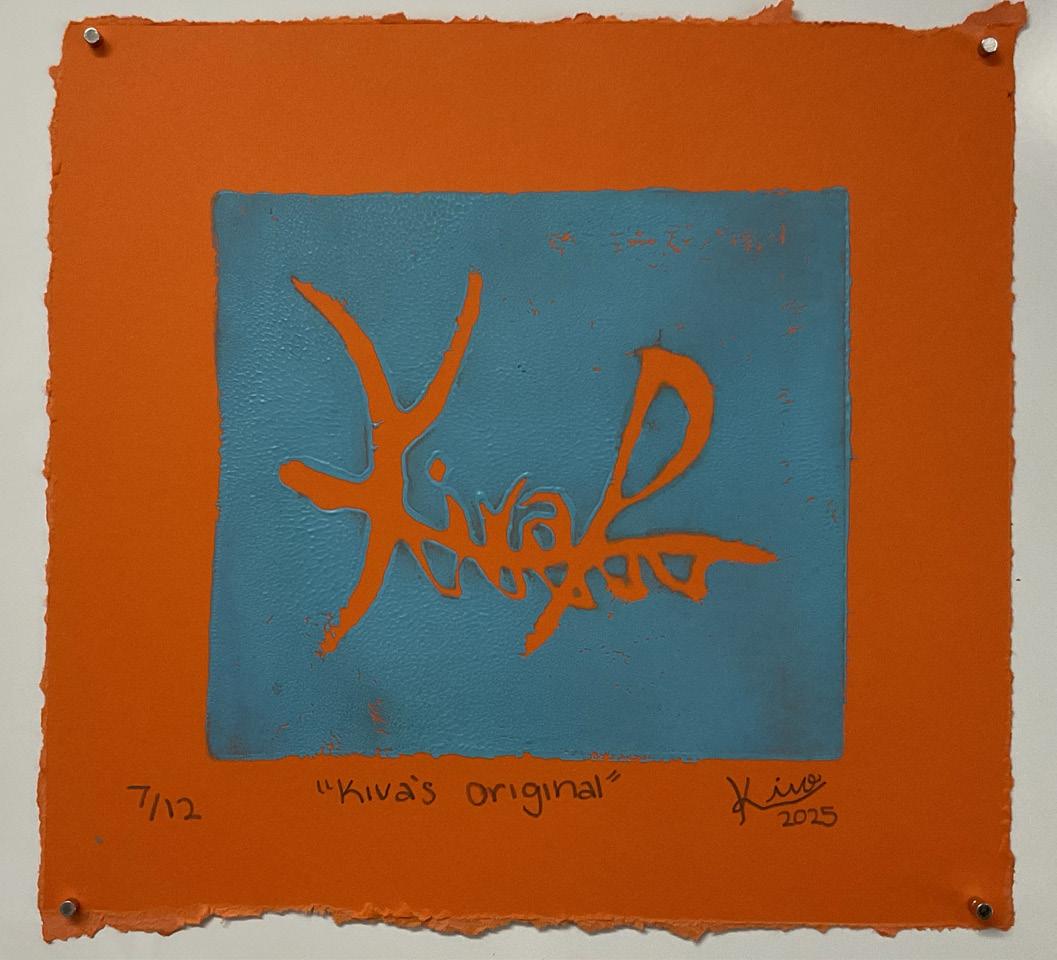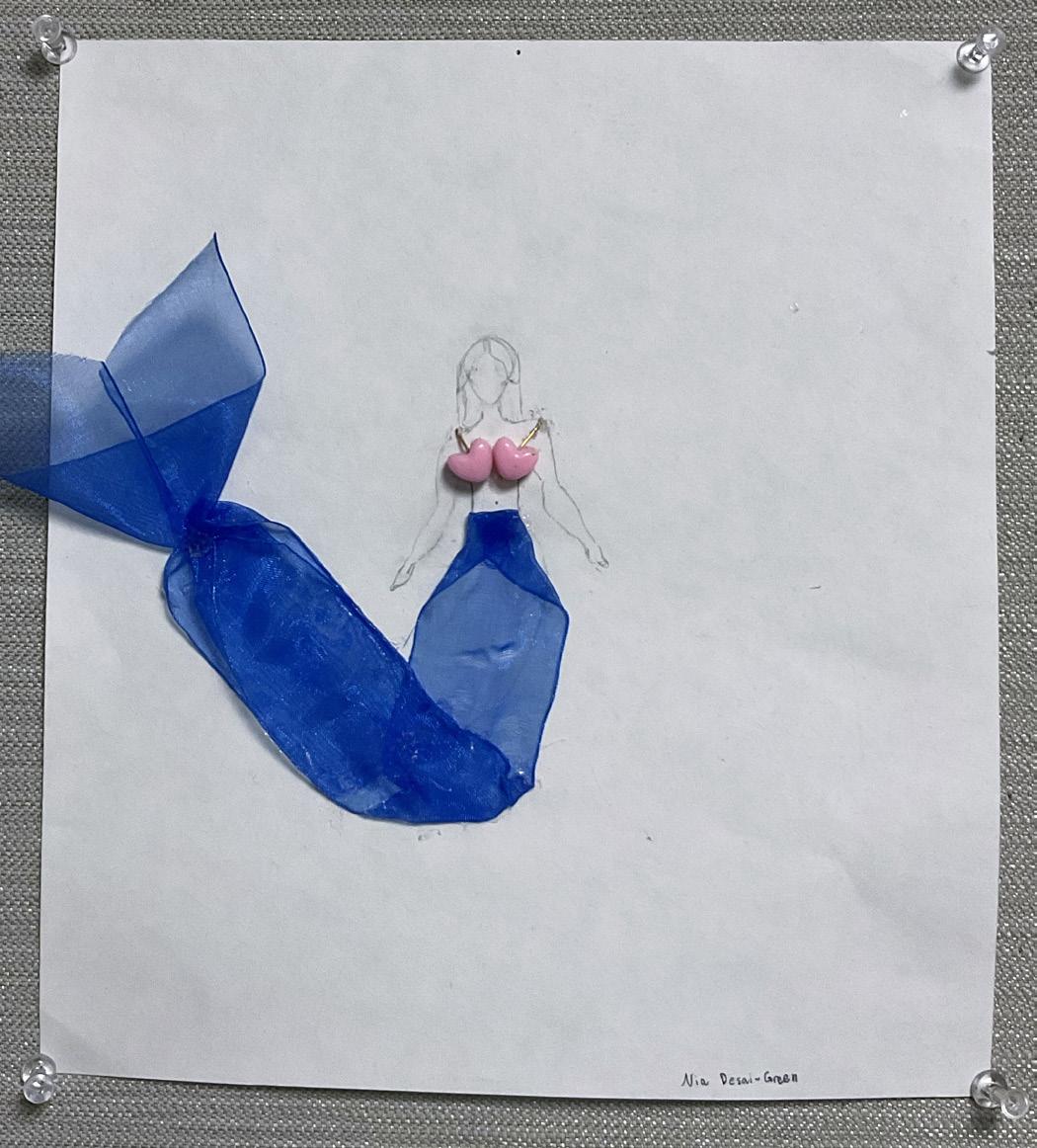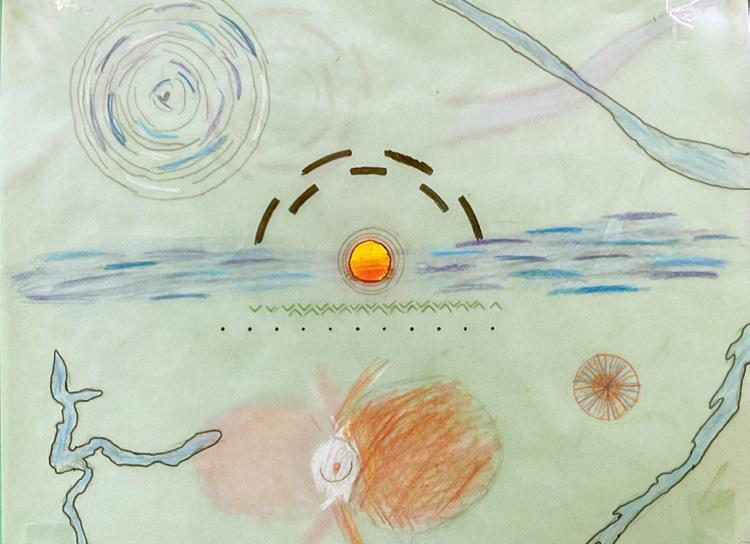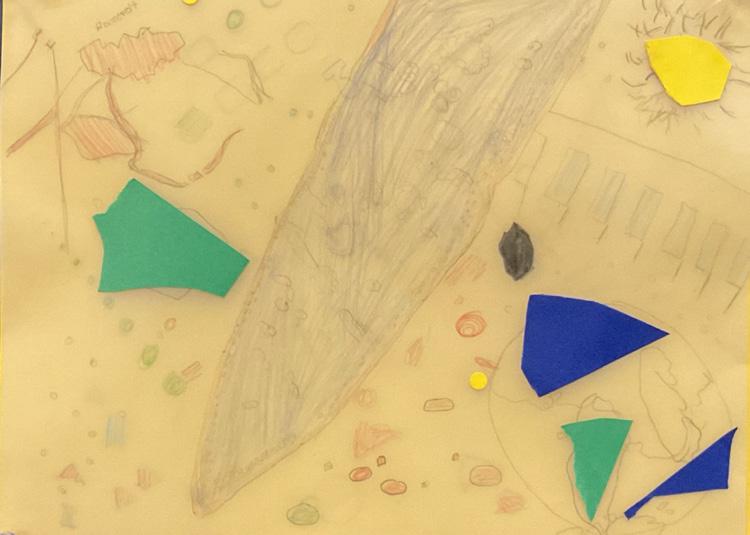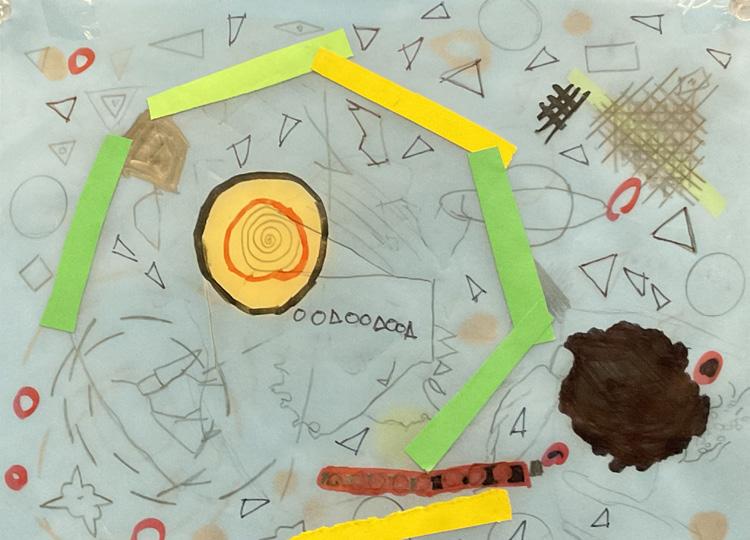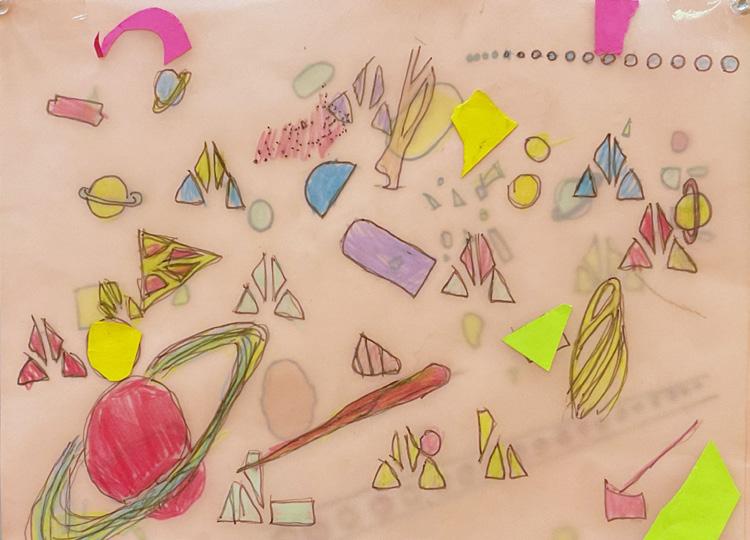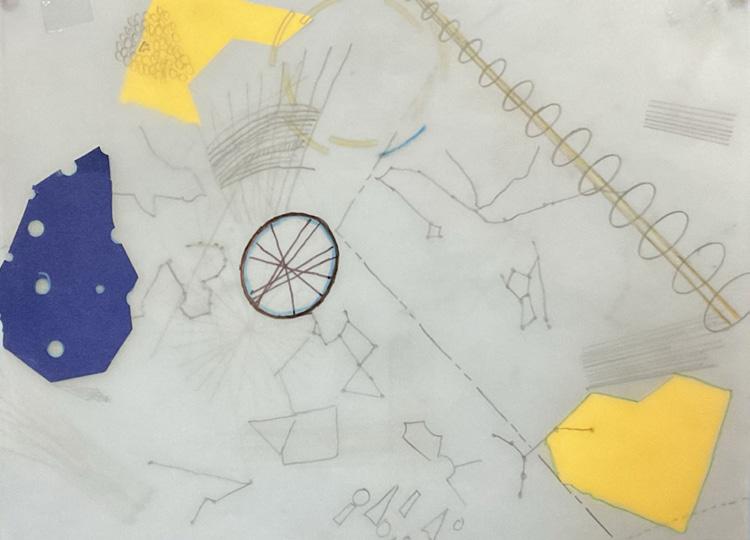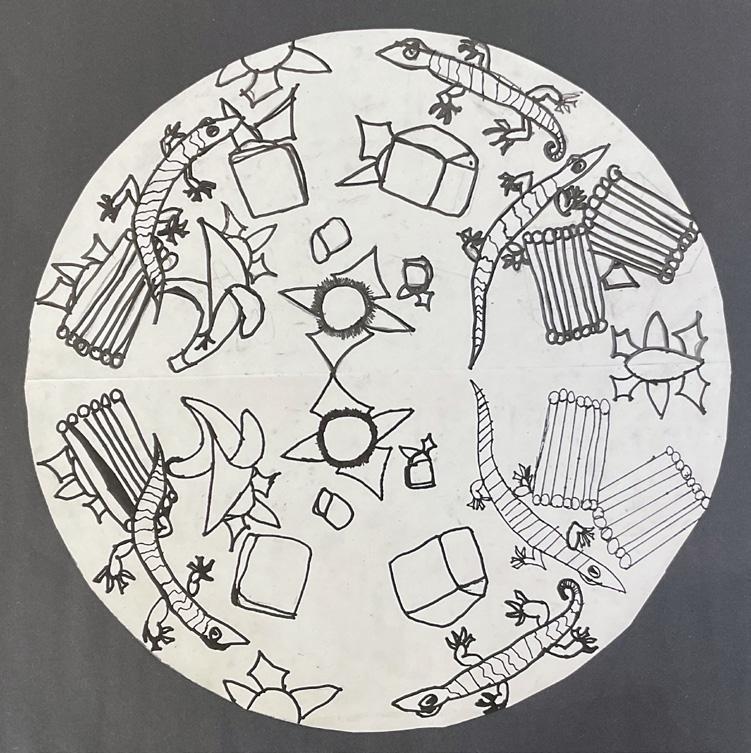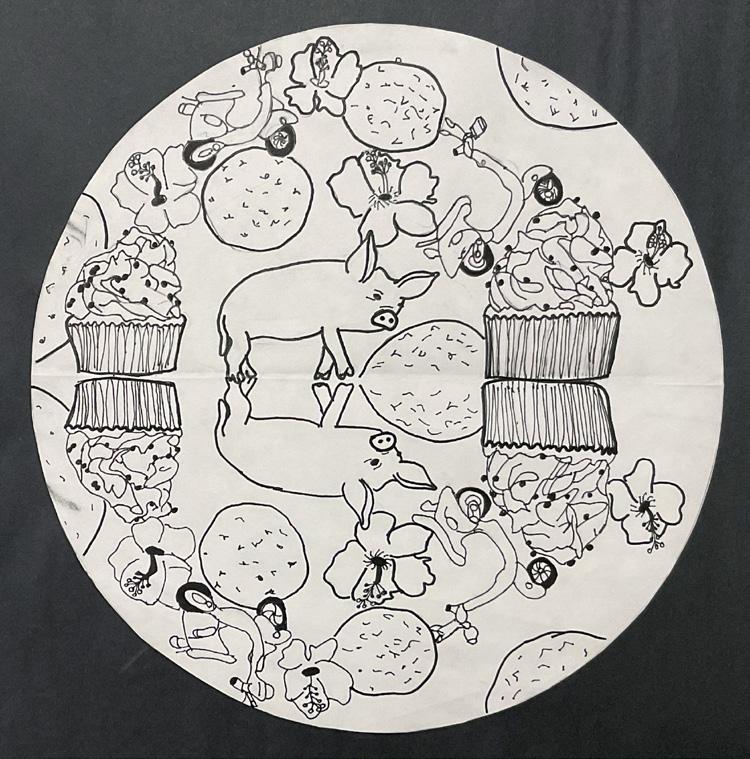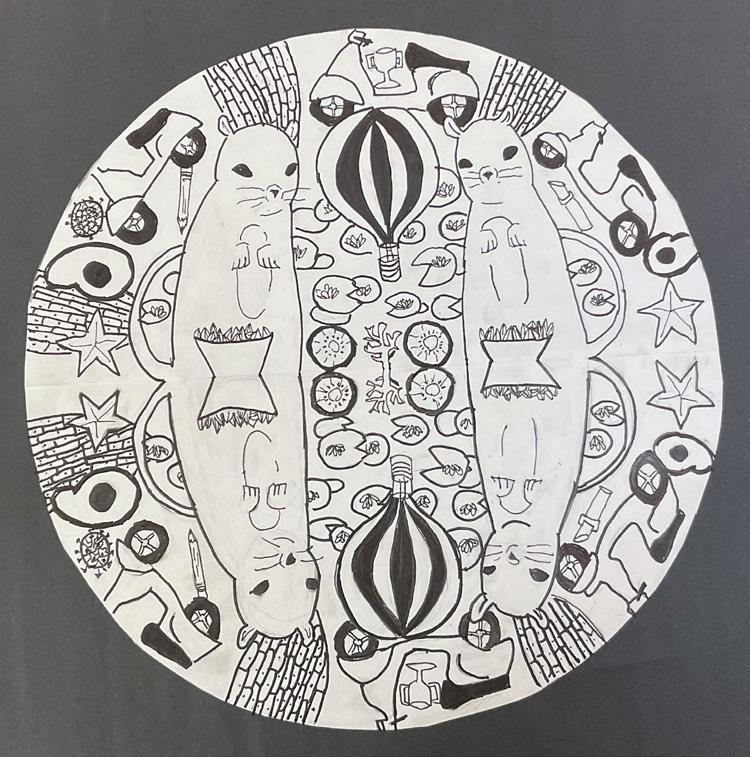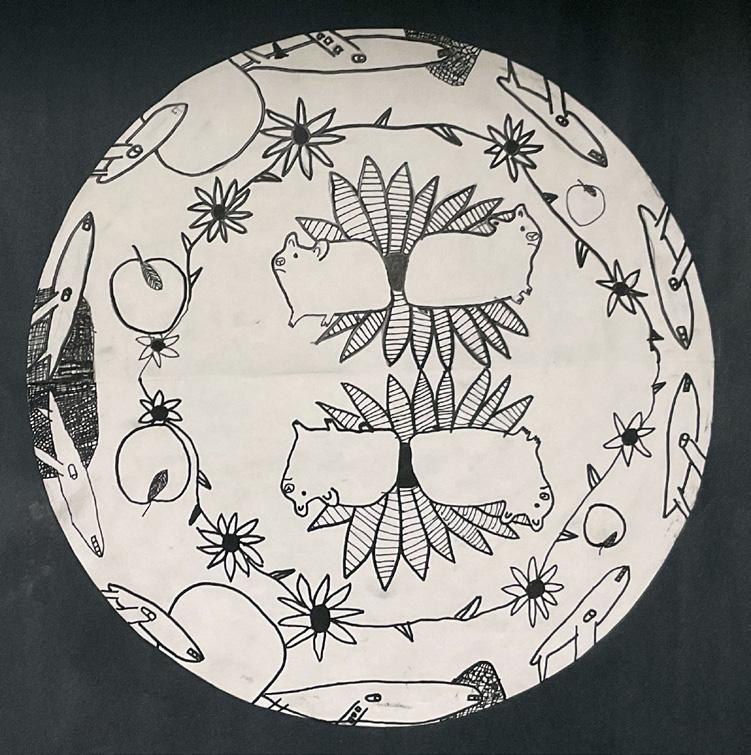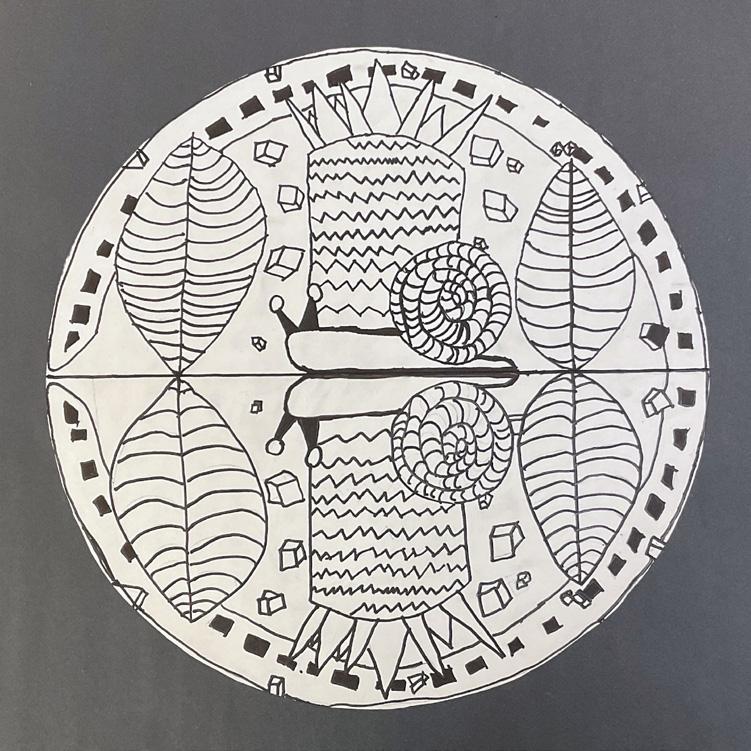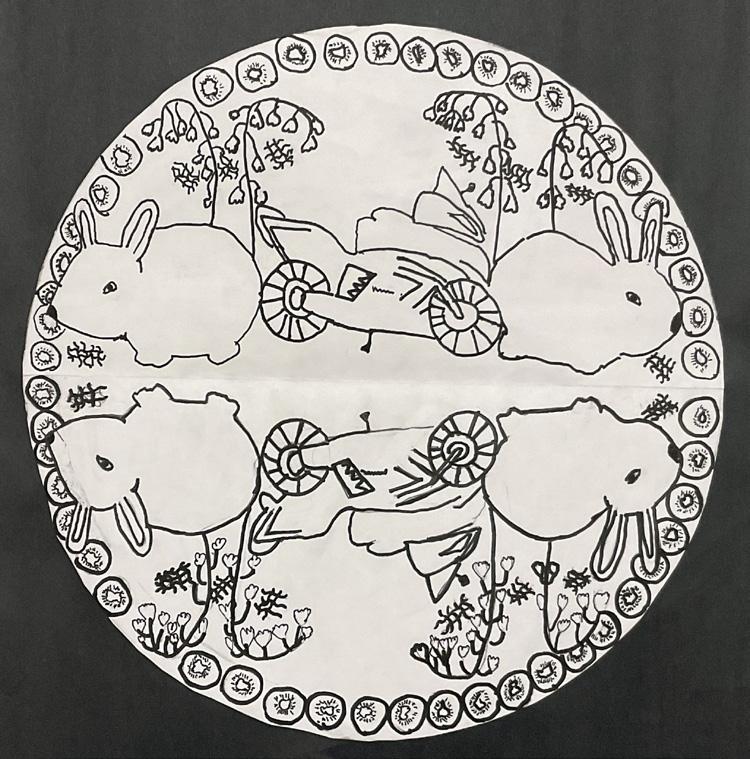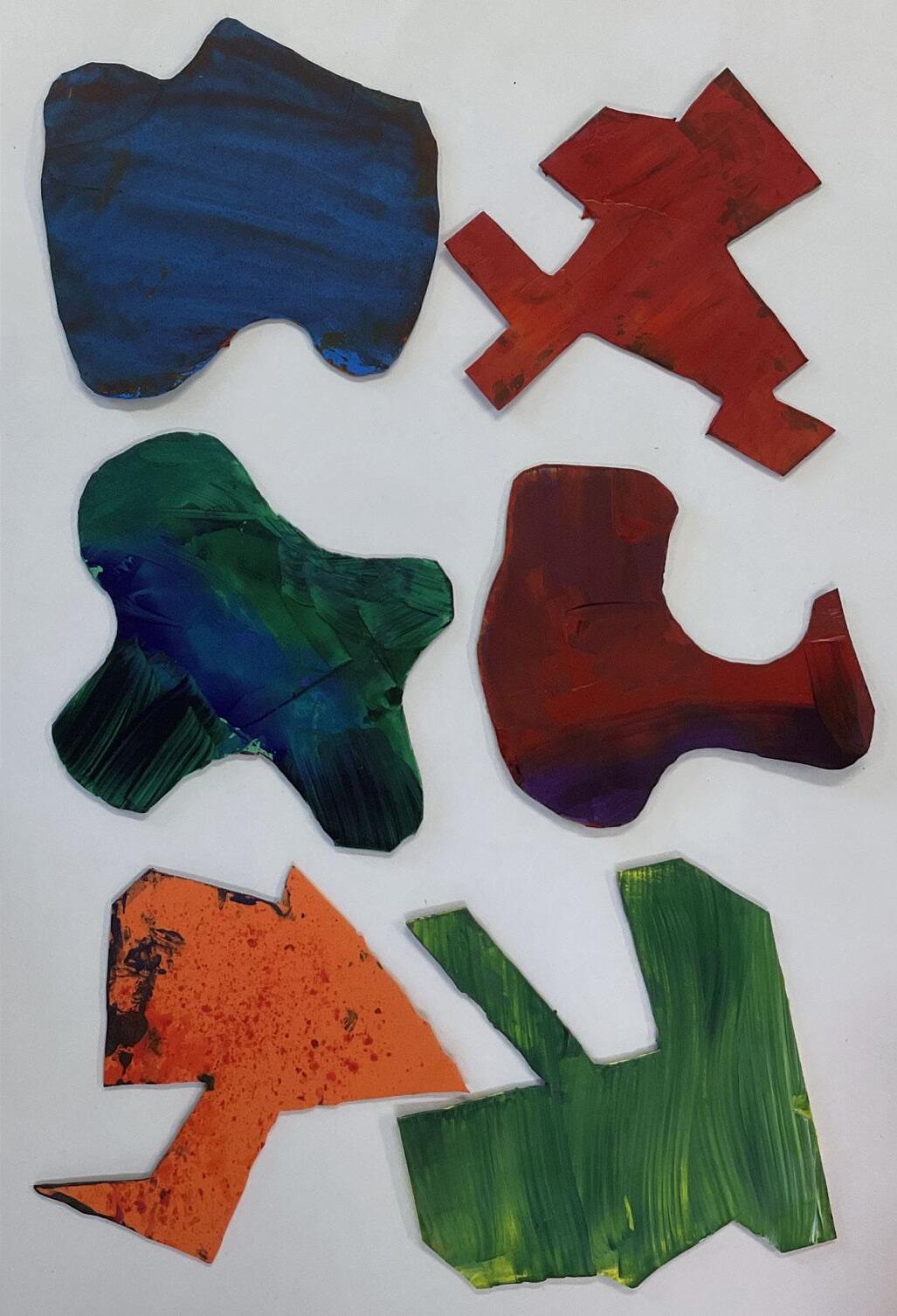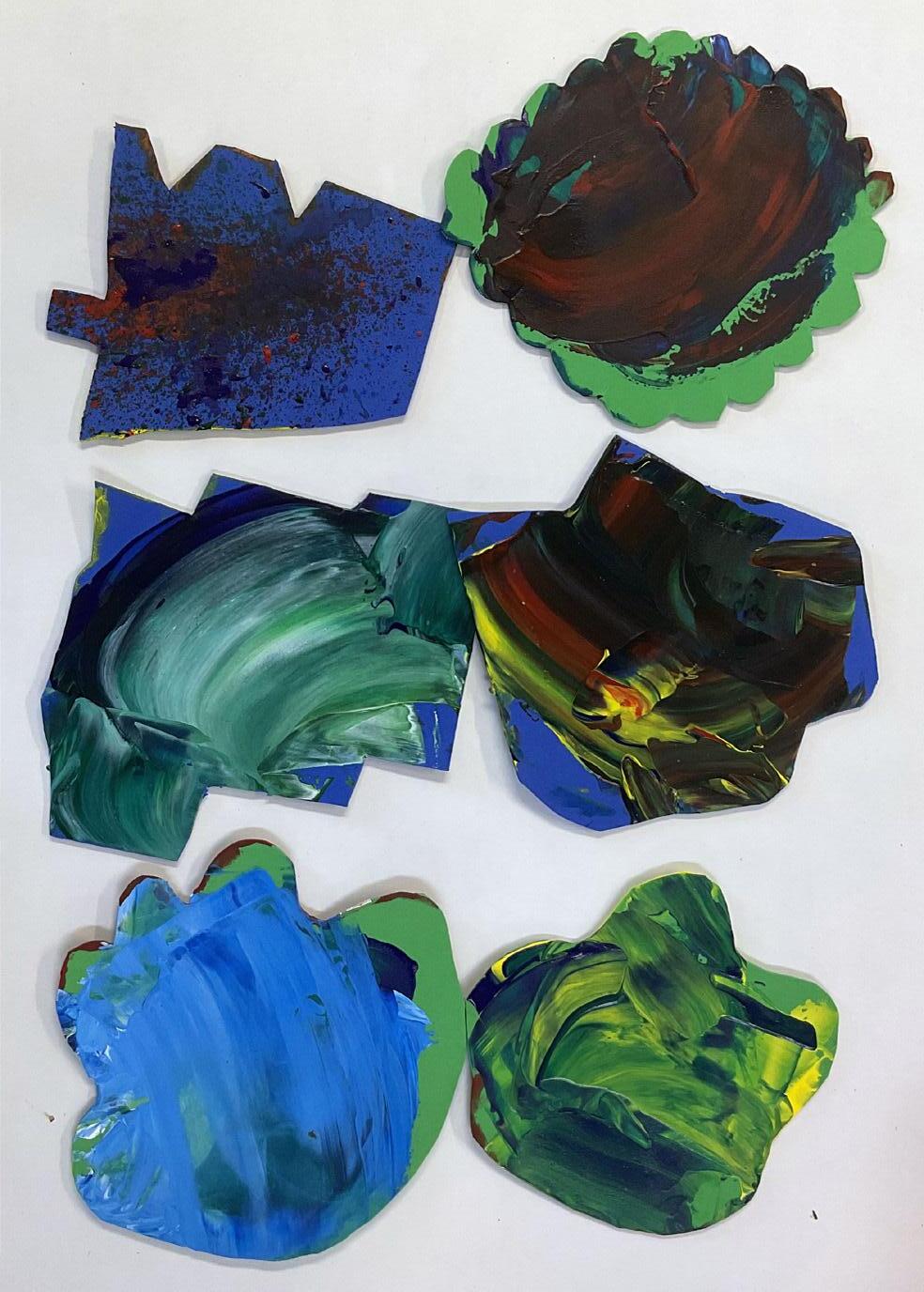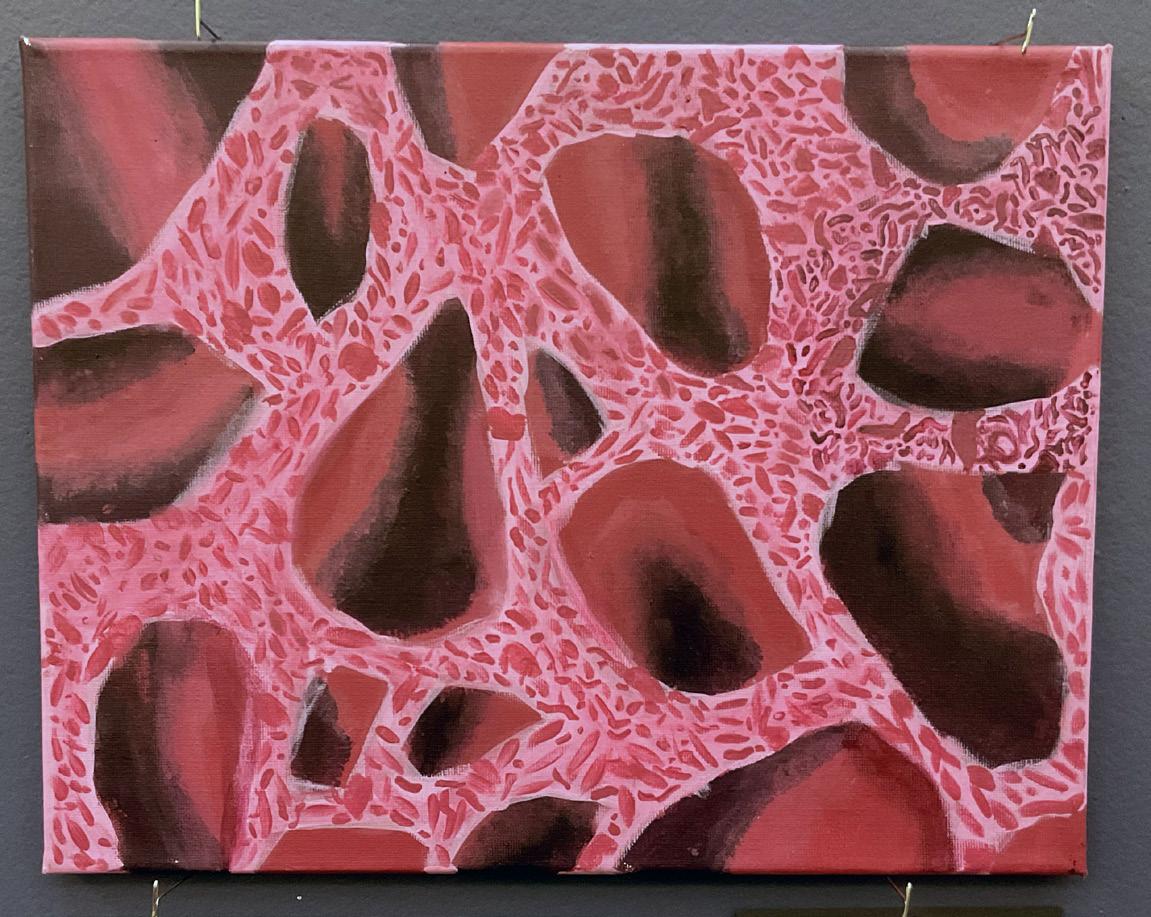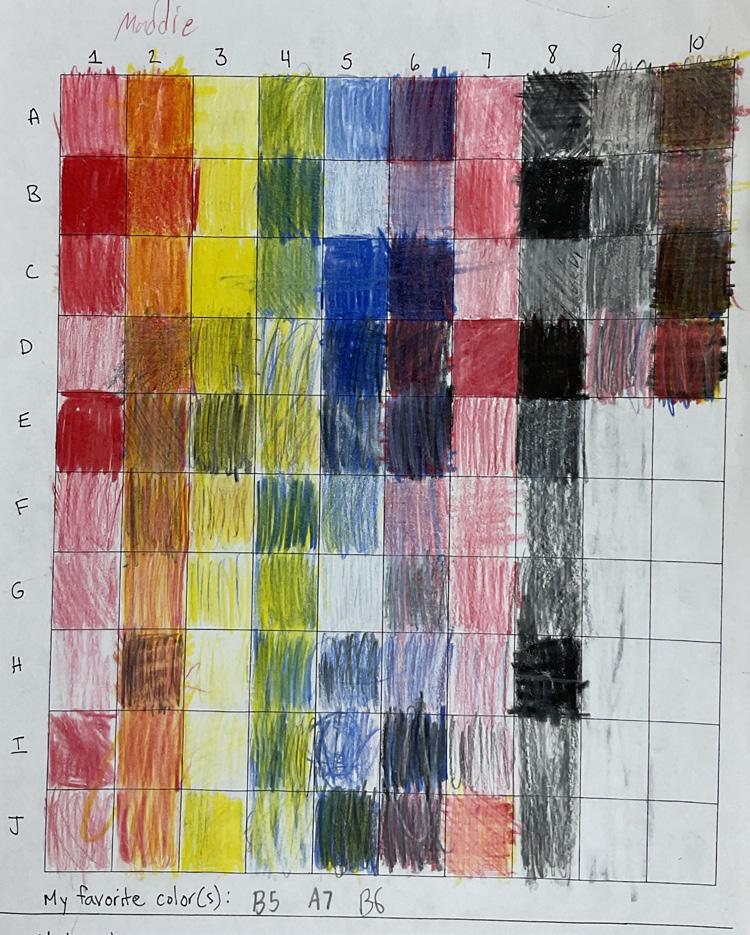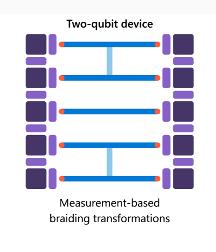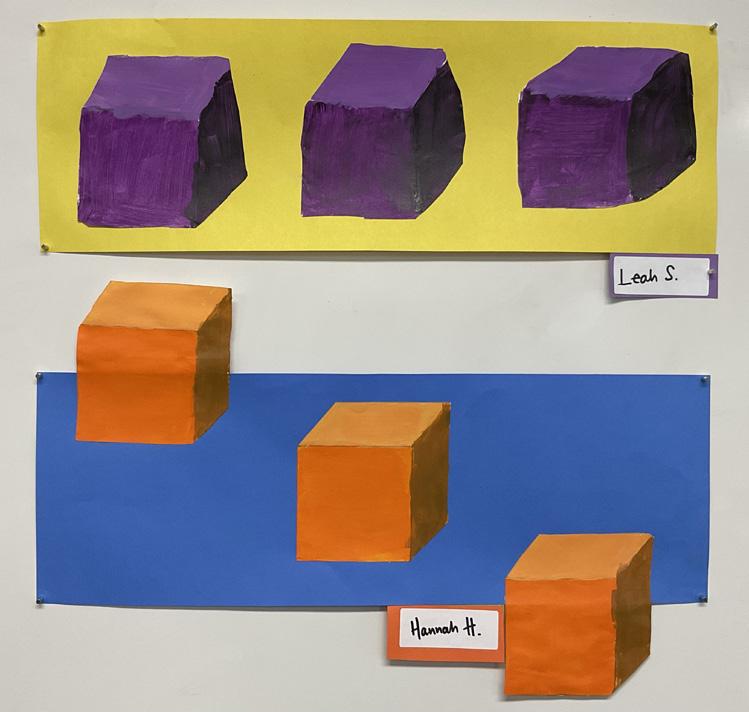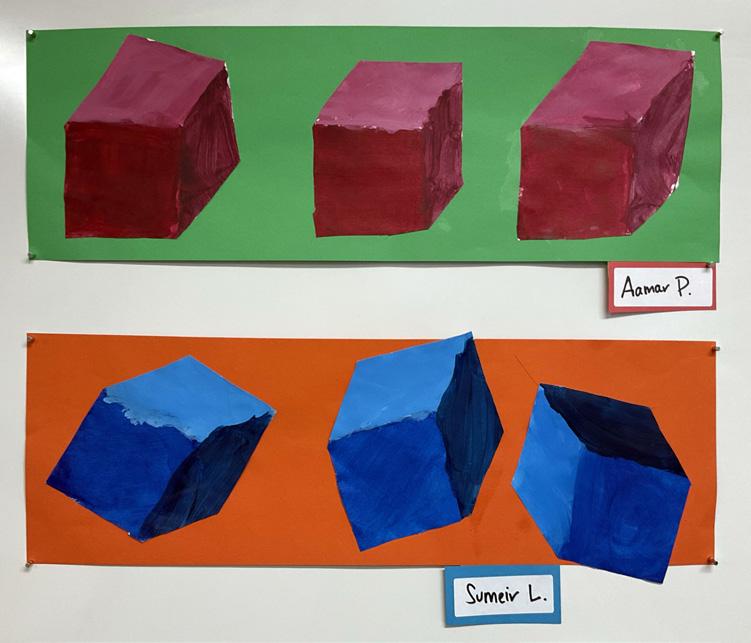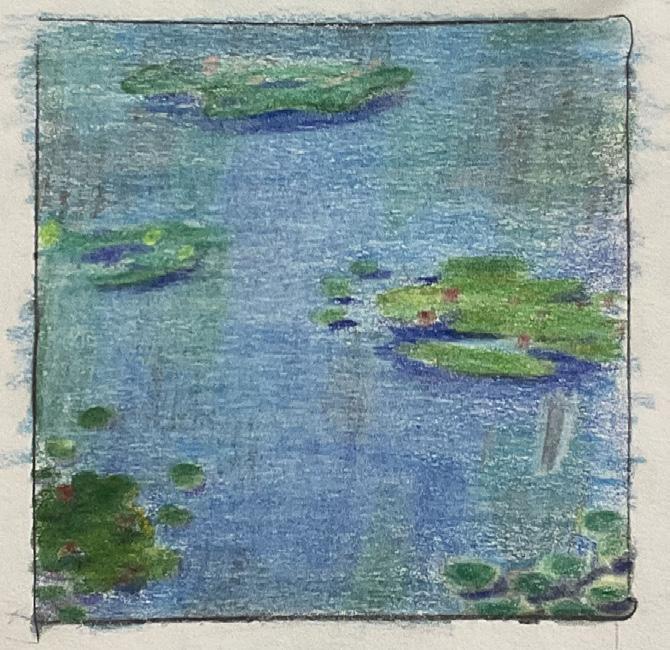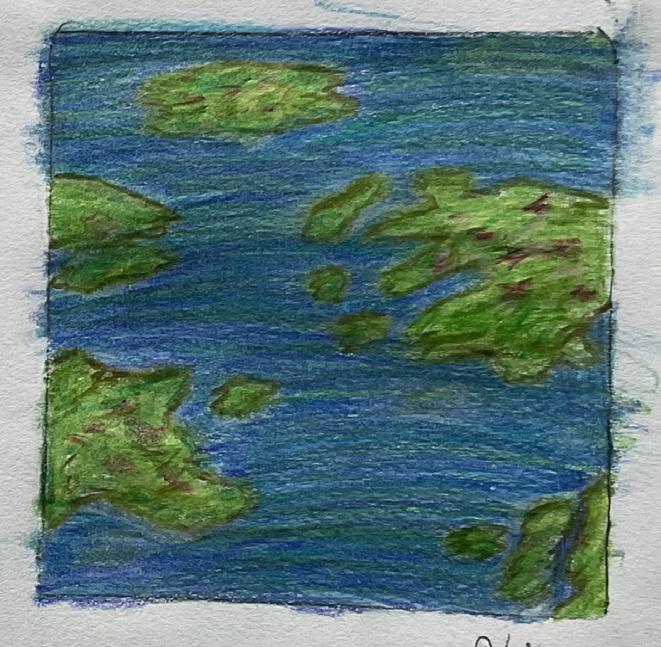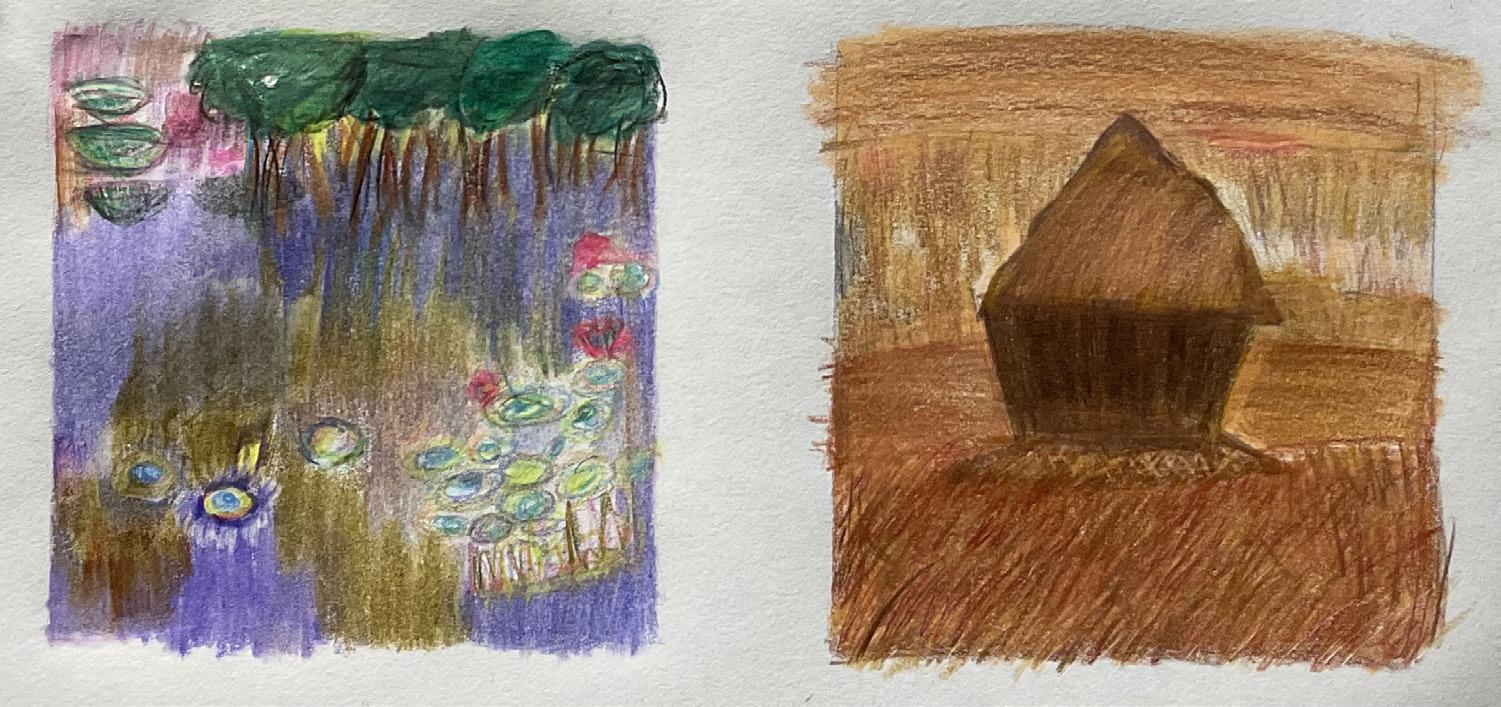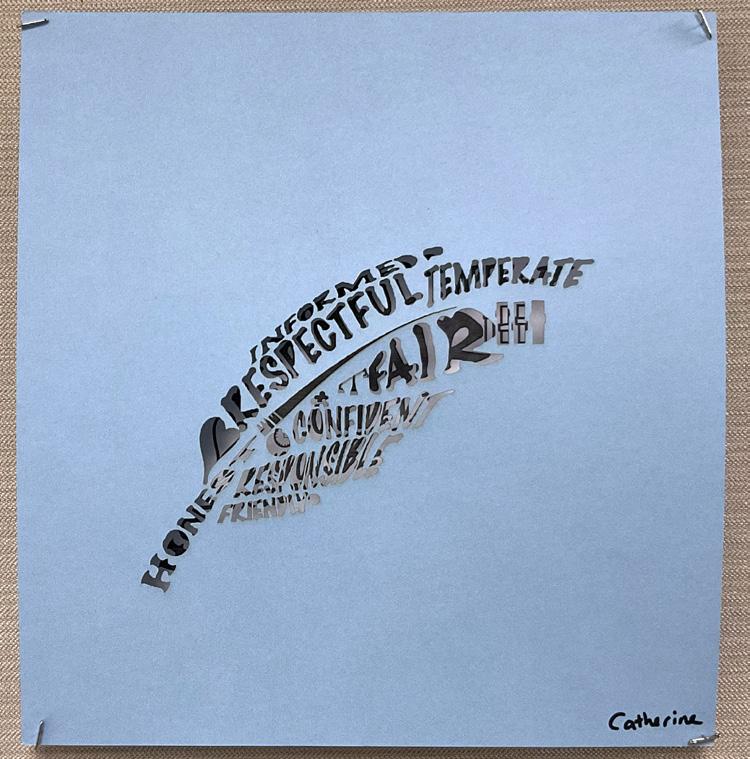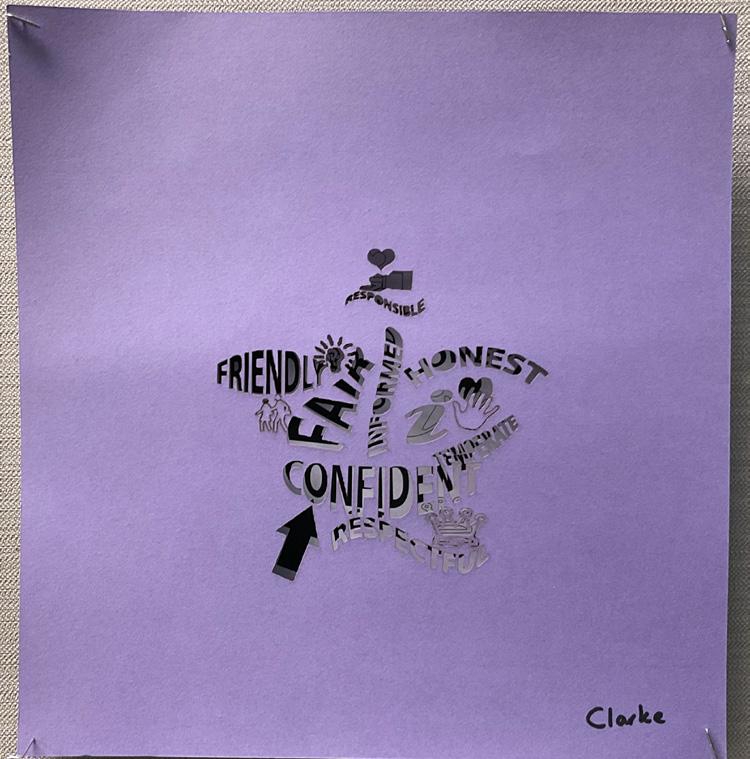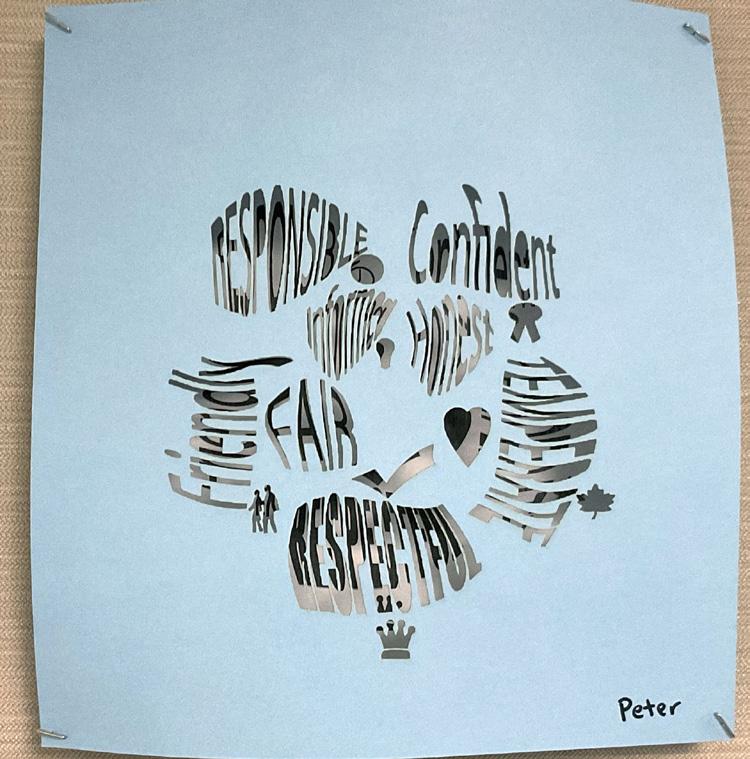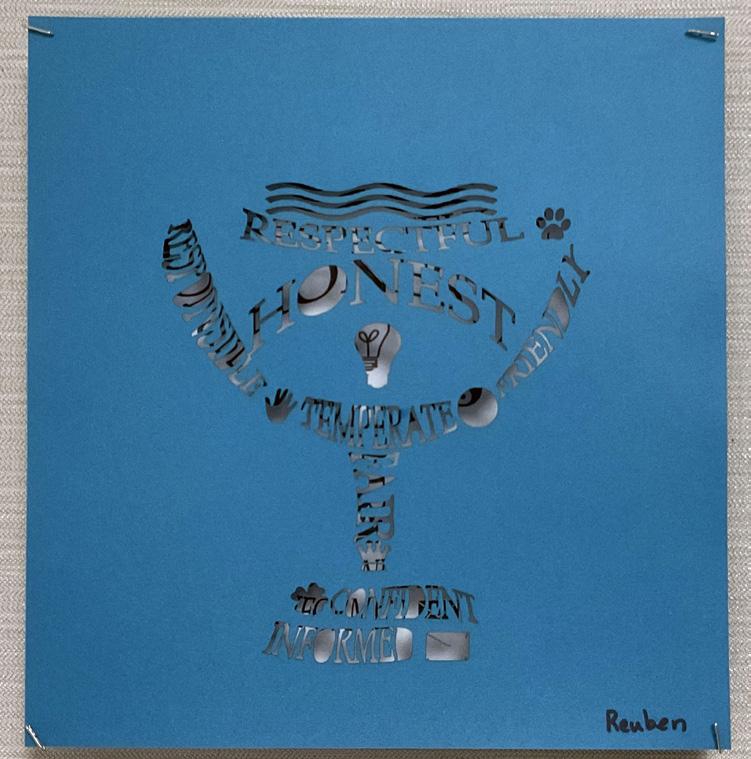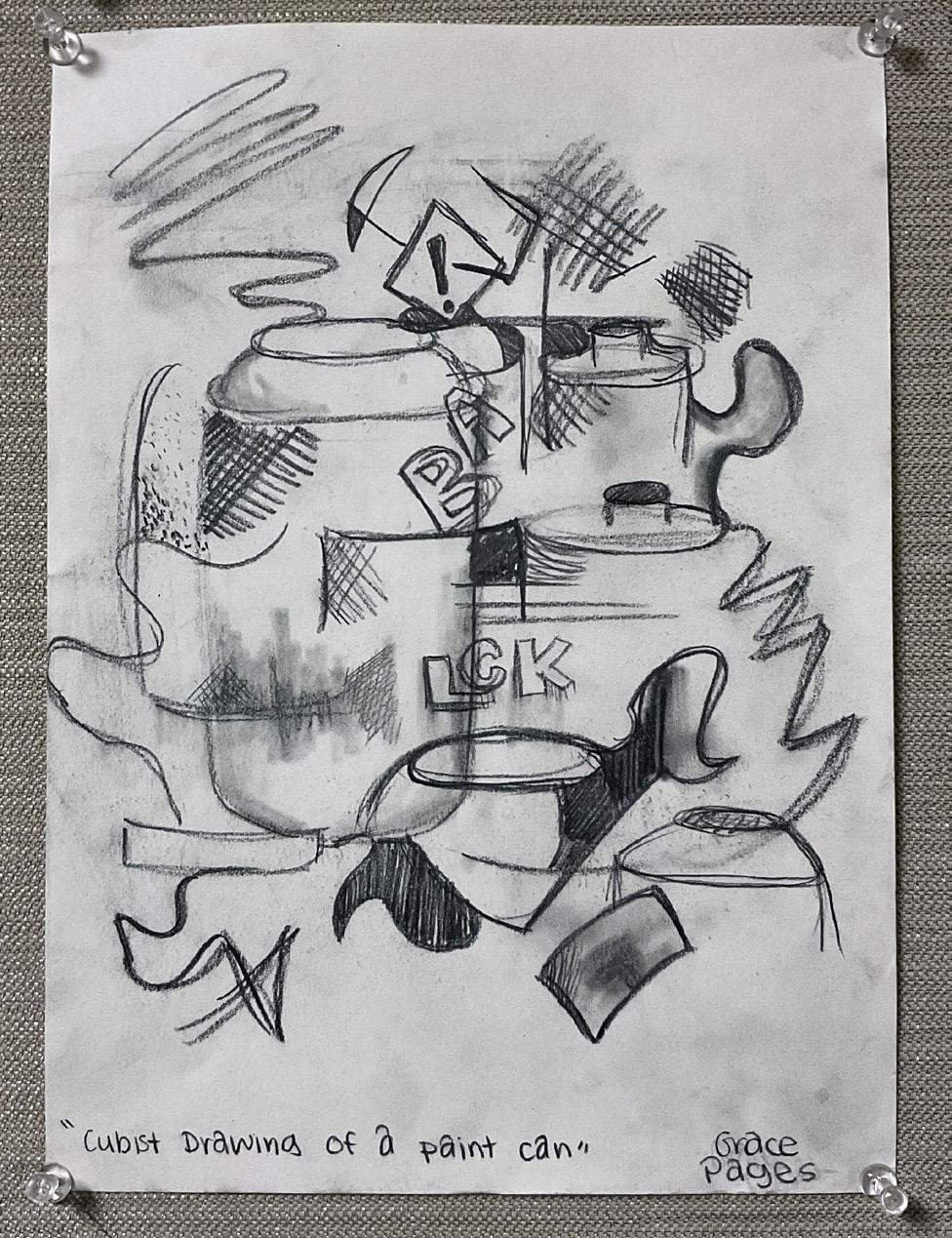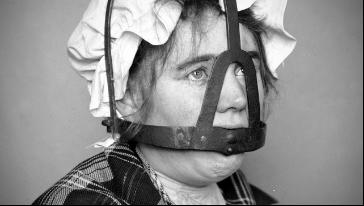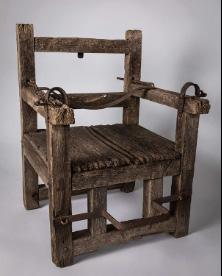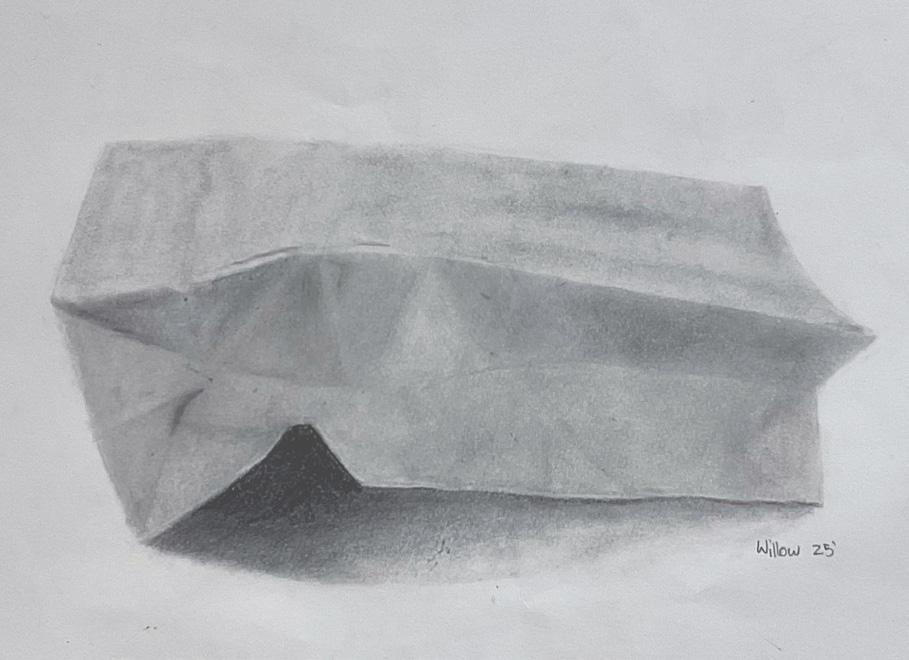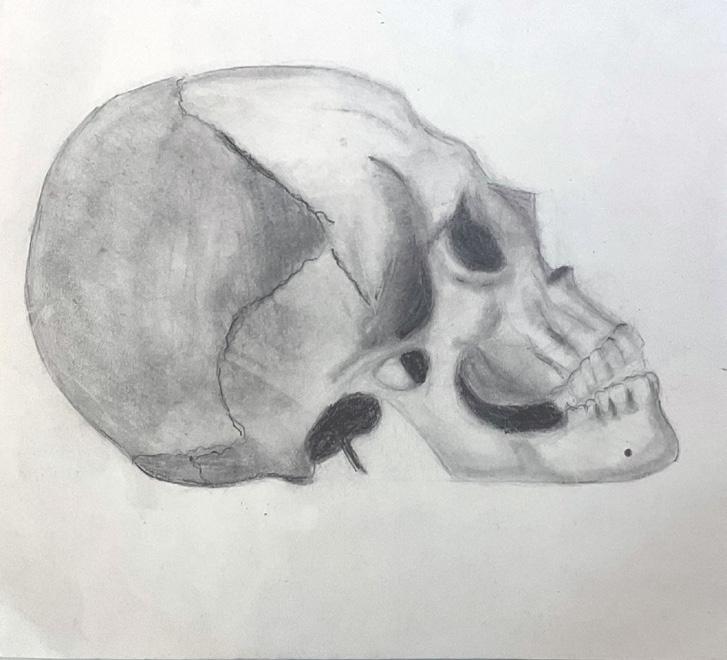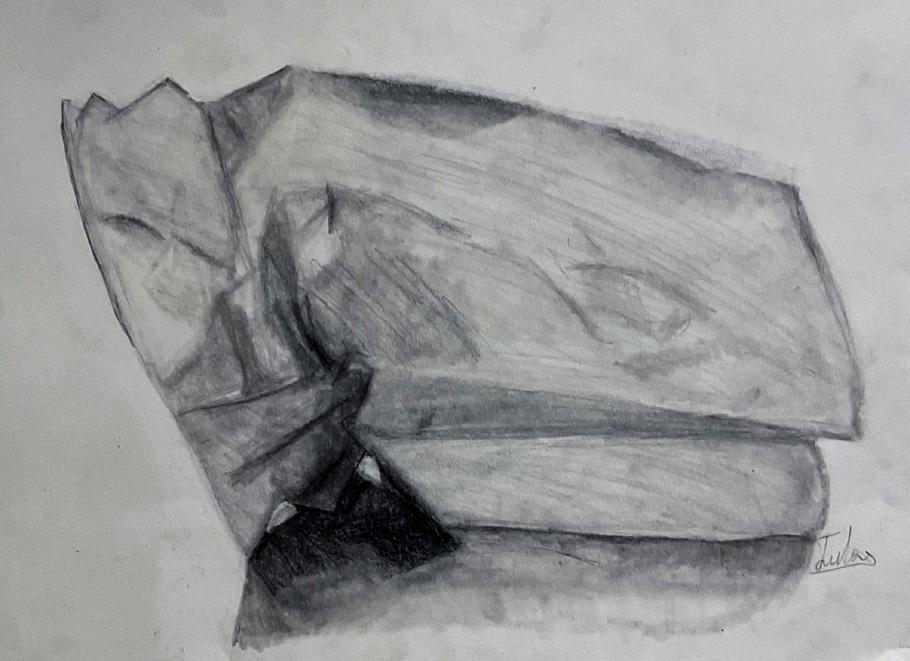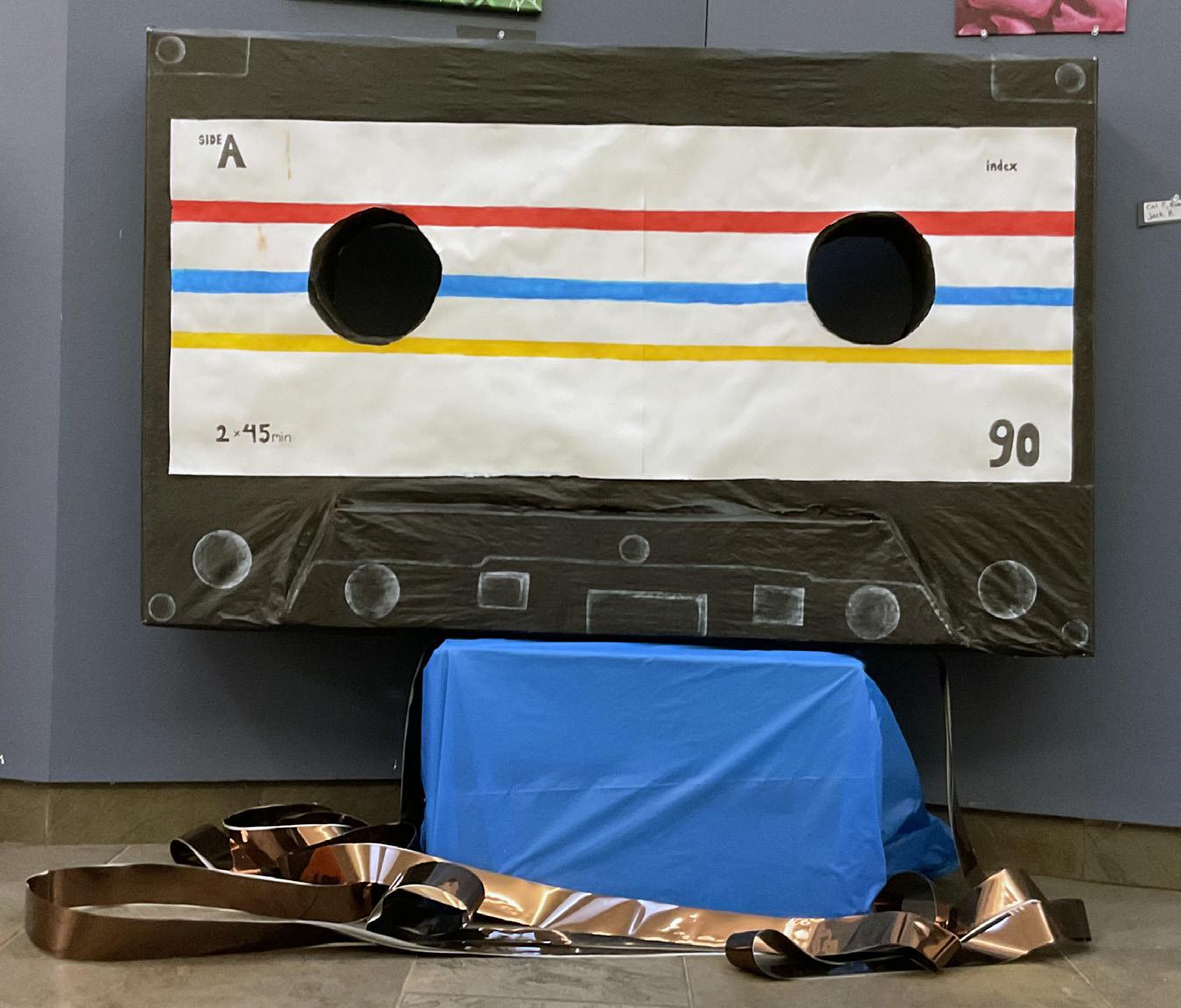Voices and Visions
Art and
Writing
from the Middle School
Student Editors: Sankirtha Kapoor ’29 and Kaavya Sinha ’29
Faculty Advisor: Marsha Kleinman
Visual Art Teacher and Curator: Joelle Francht
Layout and Design: Diane Giangreco
8th Grade, Class of 2029
7th Grade, Class of 2030
6th Grade, Class of 2031
5th Grade, Class of 2032
4th Grade, Class of 2033
Cover Art: Luciana Murelli ’29
Studio Art 8 Sphere Drawings: Jack Rizzo ’29, Julia Elmore ’29, Suhana Hemrajani ’29, Luciana Murelli ’29, Henry Slim ’29, Evan French-Brown ’29, Cal Portner ’29, and Willow Furlonge ’29.
VOICES
Tej Bakaya ’29
Hudson Bhatia ’29
Jordan Fass ’29
Willow Furlonge ’29
Eric Gao ’29
Samiya Gupta ’29
Fatim Halsey ’29
Julius Hammer ’29
Arjun Kapoor ’29
Sankirtha Kapoor ’29
Julie Lan ’29
Trevor Meeker ’29
Lindsay Polanskyj ’29
Emma Ross ’29
Emi Simonds ’29
Kaavya Sinha ’29
Henry Slim ’29
Cecelia Spagnoletti ’29
Logan Jones ’30
James Ruberton ’30
Miranda Walter ’30
Ethan Avigdor ’31
Noah Baker ’31
Sasha Chakraberti ’31
Elle Coyle ’31
Juliana Endeladze ’31
Max Gardner ’31
Ayla Gore ’31
Willow Hargrove ’31
Mia Jacobson ’31
Annabel Johnson ’31
Sid Krishnan ’31
Jayden Liu ’31
Seanna Lokker ’31
Navyaa Makin ’31
Mia Martinez ’31
Eva Newman ’31
Sophia Peguero ’31
Shaurya Ramesh ’31
Ryan Simpson ’31
Wilson Zhang ’31
Note from the Editors:
VISIONS
Kayden Chalfoun ’29
Julia Elmore ’29
Mekhi Fitzgerald ’29
Evan French-Brown ’29
Willow Furlonge ’29
Susana Hemrajani ’29
Chloe Jacobson ’29
Nazareth Johnston ’29
Julie Lan ’29
Kaira Lalwani ’29
Luciana Murelli ’29
Bram Nadelson ’29
Cal Portner ’29
Jack Rizzo ’29
Henry Slim ’29
Annie Watkins ’29
Nia Desai-Green ’30
Ngozi Dike ’30
Thomas Georgescu ’30
Marit Hedberg ’30
Alli Helmick-Fox ’30
Peter Irwin ’30
Keshav Jagan ’30
Clarke Jackson ’30
Claire Kiang ’30
Natalija Milic ’30
Maddie Millon ’30
Michael Mullane ’30
Roma Patel ’30
Grace Pages ’30
Kiva Pur-Rashid ’30
Lucy Ro ’30
Kaylie St Pierre ’30
Seneca Steplight-Tillet ’30
Nica Tagger ’30
Brandon Treadaway ’30
Catherine Xin ’30
Miranda Walter ’30
Reuben Whitman ’30
Emma Wang ’30
Isaac Zheng ’30
Madison Colotti ’31
Elle Coyle ’31
Jack Fraher ’31
Shaan Ghia ’31
Molly Harrison ’31
Giri Makin ’31
Maggie Rooney ’31
Alistair Townsend ’31
Ascher Willford ’31
Aspen Basra ’32
Ava Benjamin ’32
Jaden Bhatia ’32
Savannah Burke ’32
Caleb Chuang ’32
Gideon Feldman ’32
Adelaide Khublall ’32
Skylar Lokker ’32
Ryan Mullane ’32
Hannah Ross ’32
Caleb Silver ’32
Matthew Wager ’32
William Anthony ’33
Olivia Borrelli ’33
Maddie Gardner ’33
Hannah Higgins ’33
Grace Hoppe ’33
Avery Jia ’33
Sumeir Lalit ’33
Gaspard Lemaire ’33
Cole Lissauer ’33
Diya Loganathan ’33
Amelia Morgan ’33
Ellie Nieves ’33
Sophia Pataki ’33
Aamar Patel ’33
Leah Shade ’33
Isabella Sousa ’33
Jane Sowers ’33
The 2025 edition of the Voices and Visions magazine has been nothing short of amazing. All the artists and authors have worked incredibly hard on their projects, and it shows. Each one of these students is extremely talented and gifted when it comes to their medium. Their work features abundant creativity while also letting their personalities shine through. This magazine contains beautiful and original artwork that encourages viewers to look deeper; poetry that showcases the environments these writers have observed and the genuine challenges they have faced; and creative and analytical writing that not only offers fresh perspectives on history but also inventive pieces that transport the reader into whole new worlds. Editing and publishing this magazine has been wonderful for both of us as co-editors. We have thoroughly enjoyed reading through all the pieces and looking at the art, and we hope you enjoy it as much as we did!
Sankirtha Kapoor ’29 and Kaavya Sinha ’29
Cecilia Spagnoletti ’29
I lay my tired hands upon the rough boulder in a swift fashion, a routine familiar as my own brother Kyklopes, though I rarely had time enough to spend on them. Another day of work had just begun. I stepped into my cave and prepared to rest after such strenuous work, but instead of laying on my warm, cozy cave floor, I was stopped in my tracks by the repulsive sight of–I can’t even say the word without gagging–men. With scruffy beards, shrimpy legs, and ridiculous looking clothing, I had to bite my tongue to keep myself from being sick, laughing, or both. I imagined that the men would at least remain quiet and accept defeat; everyone knows that we Kyklopes are undefeatable. If I had wanted to, I could have demolished them in under a second, but what fun would that have been? In spite of my abilities, I decided to initiate a conversation to understand from where these shrimpy little men had come to trespass on my island.
“Strangers, why are you here? Have you come simply to make my life more difficult? Don’t expect an ounce of hospitality from me, Polyphêmus, as I am too great for you little men.”
I knew that that would show them. The audacity of those creatures to simply barge into my cave and start a fire! How dare they? I expected a weary apology from the shrimp, but once again I was surprised as one of the grubby little sea urchins stepped forward.
“We are Akhaians from Troy. We came because we served under Agamémnon but got lost during battle. We are so lucky to have arrived on your shores, so please, any gifts or help you can spare are greatly appreciated. And after all, Zeus punishes those who lack Xenia.”
My beautiful, powerful mouth fell agape; I couldn’t believe the audacity. He had already ruined my afternoon, and now he expected gifts, as well! I was in utter disbelief. I spent nearly a second brewing up the perfect rebuttal to this mere mortal, and a pretty glorious rebuttal if I do say so myself.
“Take your Xenia, and go cry. I care not about the power of Zeus, as I, Polyphêmus, am far more powerful than he. If you think I would let you go and pass up a free meal, you are out of your mind, though I doubt you have one of those, you shrimp,” I retorted.
I thought that our conversation had ended. I had clearly won the debate, as I so often do, but the man decided to talk back to me, as a whiny toddler may to his nanny.
“Please, great Polyphêmus, Poseidon has taken from us our ship, our only hope of surviving and leaving your beautiful island. Please help us.”
That was it. This foreigner wanted to bring my father into this? My anger boiled; I felt it in my veins and in my lungs. I was breathing fire from my nostrils to my beautiful eye. These men had intruded on my afternoon, trespassed into my cave, started a fire, asked for gifts, and bashed my father. No words could express my anger, so I, in true Kyklopes fashion, grabbed the little men and tossed some into my great, beautiful mouth. I swallowed and watched the others begin to cry. I was confused; how could such emotions come from creatures so savage? It was nothing like I had seen before. I simply didn’t understand why it was such a travesty for me to eat men. Men shouldn’t act so high and mighty; they are known for eating nearly every animal in their sight such as sheep and cattle. Why should I even need to justify my choices?
As I thought this, I stared at their whiny little faces, and I decided against starting another argument. I simply left the cave and carried on with my important Kyklopes duties. When I returned, the weird little men came bearing a gift. Before they could present it, I snagged two more men as a little reward snack for my hard labor of shepherding. With horror in their eyes, the men offered me some of their wine.
“This wine is a gift from us. We thank you for your kindness, Polyphêmus. We brought it to encourage you to help us, but since we understand that isn’t going to happen, we will still let you taste some.” I grabbed their wine and lifted the bowl up to my beautiful lips. It was delicious–a pure delicacy. I had never tasted anything like it. I very politely demanded two more bowls, which were served to me with great triumph. The leader of the useless little shrimp then attempted to start conversation by informing me of his name: Nohbdy, a rather useless piece of information if you ask me. But Nohbody had been the kindest of the men as to give me the gift of this wine, so I gave him a delightful gift in return.
“Nohbody, I will eat you last of your friends. Thank you for the wine.” Fatigue had begun to come upon me, so I lay down on the floors of my gorgeous cave and let sleep pour over me. These trespassing men could wait until the next morning.
In my sleep, thoughts passed through me as gusts of wind, fogging up my mind. These men were such a burden. How could such a misfortune be bestowed upon me, a mere baby of the Kyklopes? To console myself, I just repeated in my mind that it would all be over tomorrow, and I could go back to living my perfect life without these little creatures in my way. With that, I let my nightmares be conquered by sweet dreams of meat.
I had finally achieved peace when out of nowhere, a sharp excruciating pain bubbled through my eye and nose and spread through my entire face. I couldn’t tell where the pain had come from until I heard the sizzle and pop of my poor, poor, beautiful eye. I shrieked in horror. In a daze, I tugged a sizzling spike from my eye, and I threw it as far as the eye–well, not my eye anymore as it had been blinded–could see. I was in such a dreadful haze that these were the only words I could utter:
“Nohbody has hurt me! Nohbody has attacked me!”
In my daze, I couldn’t understand why my Kyklopes brothers brushed off my screams of misery until after the whole event had occurred. The shrimp ended up escaping. I tried to hurt them with boulders, but my pain would never be reciprocated, as the men escaped from my land. In their escape, the leader further proved himself an idiot by shouting out his true name: Odysseus. In the end, they took both my vision and my dignity. I felt as if my life was over, and so the only thing left for me to do was ensure that Odyesseus’ was too.
Aspen Basra ’32
“The Suffering of Polyphemus”
Confined in a cave, defined as monstrous, I am a cyclops am I, a true slave of men
Living blissfully, feasting on humans so feeble
The great treachery of that man was truly so evil
Came into my cave while I munched on his men Stabbed me in my eye, and I could not see him Called out for my brethren, but they did not arrive He had expertly played me with a plan he’d connived
His name was not “Nohbdy” As he did tell me He made a fool out of me No one would help me
He almost got away and saved himself then But he could not resist taunting me again He announces to me my foolery, forgetting his great diligence, With my knowledge of his name, the gods shall burden Odysseus
He played a great trick on me His actions were quite cunning But the price he shall pay Is worse than all others
He has given me his name, A great fool is he With the knowledge of his name I shall plague harm on thee
I shall pray to the earthshaker, The god who trials him I shall order great harm And discourse unto him
O great Poseidon, the one who quakes the earth, Please do unto Odysseus as he so deserves His trickery and deception and as he so gloats I beg you to never allow him to return home
Make his journey so treacherous One of great suffering And display his great flaws And harm his own brethren
May they wind up on shores they cannot name May they run into creatures with frightening shape May they fall into pits of the darkest of shades May they run into circles and never escape
May suffering follow his men And proceed to harm them all They should never have harmed me then May they never return to Ithaka
How flawed is he, The one who commands the men He caused the downfall of them all The “great’ Odysseus
-Tej Bakaya ’29
Caleb Chuang ’32
Jaden Bhatia ’32
Perseus: Hello, listeners! Welcome back to the Heroes and Villains Podcast. I’m your host, Perseus, Medusa’s stone-cold killer (HAHAHA)! Today, our special guest is Polyphemus. Be sure to text 292929H if you think Polyphemus is a hero and 292929V if you think Polyphemus is a villain at the end of the podcast. Polyphemus, I think most of our listeners know you from your encounter with Odysseus. How is your eye doing? Polyphemus: Not good. Yeah, that’s what most people remember about me, but I had a whole life before Odysseus came along. I mean, really—nobody ever talks about my side of the story. Everyone just hears his version, and of course, he’s the “hero” in the myth, so I’m painted as the villain. But let’s be honest here, I had my reasons!
Perseus: Alright, you have a point, let’s hear it. What really happened?
Polyphemus: Well, first off, I was just living my life in my cave on the island, minding my own business. I took good care of my goats, milking them every day and making delicious cheese. One day, I was coming back to my cave when I saw this mortal and his crew, uninvited, eating my food, and expecting me to treat him with Xenia. I mean, this is not fair!
Perseus: Okay, I see where you’re coming from. But… you did react pretty violently. Didn’t you eat some of his men?
Polyphemus: Yes, but I was hungry. And annoyed. And I only ate a couple of his people…maybe two mouthfuls total. Blinding me by sticking a burning stake into my eye while I was asleep after he got me drunk was not fair play.
Perseus: Polyphemus, did you really give him a choice? You trapped him in your cave, ate a few of his men. And you weren’t exactly letting him leave.
Polyphemus: Maybe, but calling himself “Nobody” to trick me? That was cheap. I’m groping blindly, in pain, screaming for help from my brothers. They hear me yelling “Nohbdy’s tricked me, Nohbdy’s ruined me!” So of course, they didn’t come to help! I understand Odysseus is a master tactician, but still… that was a really dirty trick.
Perseus: Yeah, you have me starting to look at this situation differently. But what about after? When he escaped?
Polyphemus: Oh, that’s what really gets me angry! He could’ve just left quietly, but no, he stole my goats and teased me as he sailed away. He even shouted his real name and said he would have killed me if he could have. I was justified in trying to sink his ship with a boulder. That’s when I prayed to my father, Poseidon, to make Odysseus’s journey miserable.
Perseus: Well, that worked out for you! His journey home was far from smooth. Polyphemus: Exactly! People always say I’m the villain, but honestly, I was just a cyclops protecting his home from unwanted intruders. Wouldn’t anyone do the same?
Perseus: Yeah, I think you might have convinced some of my listeners. Polyphemus: Perseus, thank you so much for having me on and giving me the opportunity to tell my side of the story. Perseus: My pleasure. Listeners, remember, text 292929H if you think Polyphemus is a hero and 292929V if you think Polyphemus is a villain. See you all next week when we feature Prometheus!
A father. All my life I had yearned for a father. I remember my mother looking like a haggard and lifeless patient, patiently waiting for this man. I remembered the pride in her voice when she said my father’s name, Odysseus. I was always full of questions about him, what he looked like, if he knew me, when he was coming home, and she would say, “ Patience Telé. He’ll be home any day now, and answer all your questions for himself.” The ironic thing is, I never got the answers to my questions. My mother’s smile and resolve faded like the years and then there were only sobs and anguish. I didn’t cry when the first suitor came in. At 12-years-old, no one cared what I did, except Eurykleia who was always by my side. She also seemed to believe in this Odysseus; she told me my father was a strong man who would come back for me and my mother. That he would I thought that was wishful thinking; our family was broken because of him. I was adamant on the inside but on the outside, I desperately wanted a father and was so sick of the suitors. I wanted my mother to be happy and for her to smile again. By 19, I had accepted the reality that he was dead, but I knew I had to save my family somehow. Today that day finally came. I had a quest to find my father and save my family; I was going to find Odysseus myself.
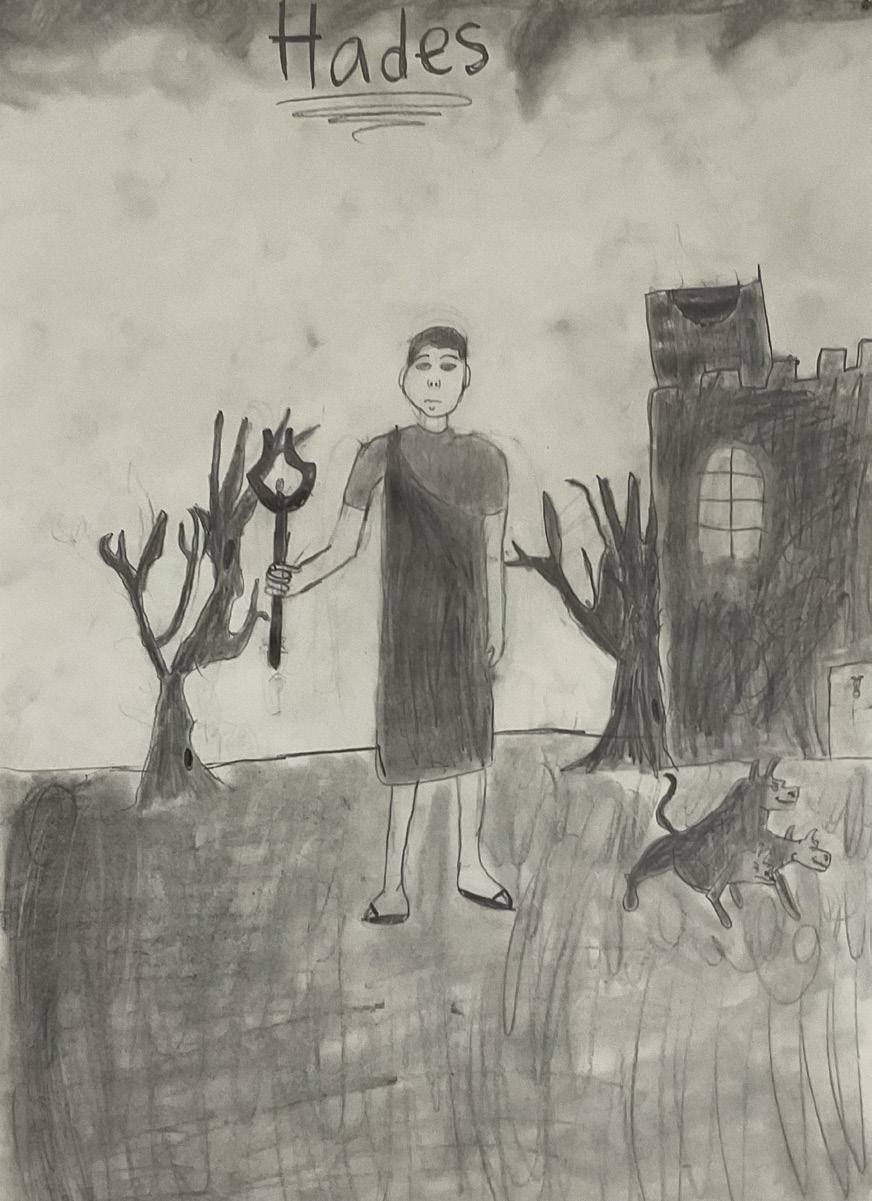
Fatim Halsey ’29
Adelaide Khublall ’32
Skylar Lokker ’32
Arjun Kapoor ’29
He does not love me. I see it in his eyes, the way he looks to the sea, longing for the home he may one day see again. I have given him paradise, shelter, even immortality, and yet his heart still clings to that aging woman across the ocean who is nothing compared to my beauty. She will one day wither away, but I am everlasting. Now, Hermes commands me to let him go. Zeus wills it, and even I must obey. This heartbreaking news hurts me more than any blade and degrades my love. I am immortal, and his mortal wife, Penelope, is not. He chooses death over divinity. I will watch him build his raft. I will give him what he needs. Not because I wish to, but because I have to. Still, I will tell him how much I love him, that I offered him eternity, and he chose to be human. He is the fool here, I am not. I offered him what others would give their life for, yet he decided not to be with me. And as I sit and watch him prepare to leave me, I wonder what that aging woman who has nothing but struggle and sorrow can give what I cannot.
Julie Lan ’29
I have never feared before that day. Not the storms that split the sky, not the jagged cliffs that watched over my home, and certainly not men—small, brittle things that shattered under my grasp. But that day, I feared. The darkness swallowed me whole.
The morning was still, the sea streaked as the sun rose up in the sky. My sheep bleated as I milked them, their warmth a quiet comfort. I had all I needed. There was no emptiness in me, no hunger unfulfilled. Then they came.
I smelt them first; the stench of salt and sweat, the sharp tang of metal. I sealed the entrance with my boulder, a shield against intruders. Only then did I see them, shrinking into the shadows. Thieves.
Rage surged in my chest. Who were they to trespass, to steal what was mine? I crushed one, his bones snapping like twigs. The others recoiled, terror in their eyes. Did they think they could cheat me? They were mine now.
But I was blind before the darkness came. I drank the wine they offered—fiery and smooth as it went down my throat. Their leader, who was clever and arrogant, spoke boldly, calling himself “Nobody.” My thoughts slowed, my body lulled into ease. Then, fire.
A stake, searing hot, plunged into my single eye. Agony tore through me, a fire without end. I roared, clawing at the air, at my face, at my doom. The darkness, once distant, consumed me whole.
I tried to scream. I tried to tear the air apart, to claw at my face, but it was too late. Blindness overwhelmed me. Was this the end? I fumbled in the darkness, hoping for anything that would give me back my sight.
But there was nothing.
In the darkness, I waited. I knew they were still in my cave, hiding, watching me suffer. The night dragged on, endless. By the time dawn touched the world, my rage had been replaced by an awful, gnawing feeling. Did they think I would forget? I couldn’t find them. My hands, fumbling in the dark, touched only wool and flesh—the sheep, my only companions. No matter how much I reached, the men were gone.
And then I heard it. That voice, ringing across the waves, taunting me. Odysseus. A name that would haunt me for all eternity. The cunning one. The liar.
Was it the loss of my eye that doomed me? Perhaps. But I wonder now, even in my blindness, if I had been blind long before that day—blind to the arrogance in my heart, blind to the trickery of men, blind to the reality that I was not invincible.
Kaavya Sinha ’29
Twenty years. How is it that I had waited for this man for twenty years? For years, my mother waited with nothing but delusions of love. I had spent my entire life trying to live up to his reputation. For as long as I can remember, I was told about my father’s greatness: Lord Odysseus, the great tactician, the sharpest, most honorable man in all of Greece. I once looked at his reputation as something to honor; I held onto it as a replacement for the love I so desperately craved. I looked at my mother ’s loyalty as the ultimate symbol of love. But his honor is all but true. His loyalty is even more questionable than that. What kind of man leaves his wife alone to rot for twenty years? He let my mother put her dignity and happiness on the line with nothing but foolish hope. I was alone as I watched my mother fall deeper and deeper into depression as the suitors wreaked havoc on the palace. I dreamed of the day my father would return and restore its glory. We once imagined him on his journey, doing everything he could to come home. I can still remember the day we learned the truth. The pain on my mother’s face when she learned of his arrogance was even greater than realizing it was his own actions that kept him at sea–it was his own hubris that killed his poor shipmates! My grand image of him was shattered. I was so excited, so excited to finally escape this loneliness. I never really had anyone who looked out for me. My mother tried, but she was often too distraught at my father’s situation. My friends used to say that I must feel so proud to have a hero for a father. But he was never a father. A real father would have been there; he is nothing but an arrogant creature who only serves himself. After seeing what his hubris did to his shipmates, I can’t help but wonder how long until my mother or I will be the ones who suffer next.
Caleb Silver ’32
I have always felt different from my family. Unlike them, I have never desired the same power and vanity. I am condemned to live alone on this island. Do I ever feel lonely? The answer is yes—always. I long for connection. My family has consistently neglected me, but it bothers me less now. I’ve adapted to this isolation. No one has ever dared to question my sovereignty. I still recall the day he arrived. Odysseus. I will never forget him. His bravery left me in awe. The way he spoke and carried himself was full of confidence and wonder. Of course, before I met him his men had arrived, and my first thought was to turn them into pigs. I hadn’t put my powers to use in years! After all, I was just letting their true colors show. With a flick of my wrist, I prepare a feast fit for kings. The beautiful smell of roasted meats and sweet wines fills the air as I welcome these strange men into my home. I watch them closely as they eat and drink to their heart’s content, unaware of what’s in store for them. As they finish their last bite, I raise my wand turning them into what they truly are. Once where men stood now lies a herd of swine. While I was admiring my work, I felt an unwanted presence; a strange man walked in. Dark-haired with eyes lit with mischief. Must be their leader. Without even talking to him I can already tell who he is. He walks with boldness and courage and a smirk on his face, blessing the room with his presence. A smile rests on my lips. Perhaps this encounter will be more interesting than I had expected. After all, it’s been ages since a mortal has truly questioned me.
“Polyphêmus”
The waves still taunt me with his name The wretched man who stole my eye. A trickster with a liar’s aim, And yet, the gods let him slip by.
My cave, once bright with a flame, Now drowned in the dark and all hollow. No warmth, no sheep, but all the blame Here I lay, with nothing but my own sorrow.
Calling himself a name so small, A joke upon my terrible pain.
“Nobody” made a giant fall, Now I’m stumbling in the rain.
What good is strength when wit is sharp, When gods and men both point and mock? They called me a monster, they made me a mark, But I was wronged, and I am still in shock.
-Henry Slim ’29
Gideon Feldman ’32
Hannah Ross ’32
Matthew Wager ’32
I’m from purple hydrangeas and blackberry bushes. I am from barefoot backyard adventures, and mid-afternoon meals filled with humbow and spring rolls. Lego weekends and heated floors.
I am from pub dinners with mac and cheese and perfectly cut fries. I am from light up shoes and gumbo on Christmas. I am from “Let it out, and always be thankful.”
I am from street bike rides turning into a bmx race with big hills.
I am from snow days and ski weeks.
I am from Alderbrook, it’s salty air I know so well, how a leaf could be a boat, and to never be afraid of crabs.
It’s s’more pits I know so well, and nice people.
In those
Cold waters, my memories STORED in its days. I am from water.
-Sophia Peguero ’31
Sagacious and strong, and usually sure.
Observant and open-minded, but not always optimistic.
Passionate at ice skating, productive, usually polite.
Heartfelt and honest, hardworking for what she thinks is right.
Imaginative and independent, insightful at all life. Adventurous, artistic, admirable, and right.
-Sophia Peguero ’31
Where
I’m From
I am from blueberry pancakes - cooked, fried, and crispy Me and my sister fighting over who gets to put in the blueberries
The satisfaction of flipping over a golden brown side to the next.
I am from hot summers and backyard hoses My face boiling until cool sprinkles of water soak my body. Me and my sister hopping around, laughing till we fall.
I am from everything bagels. Every time I think about how I can’t eat more, and yet I always do.
I am from The Hate U Give, Dress Code, Climate Club, and ACT. The books I love to read. The smelly, honking cars, yet my happy place is Jersey City to the quiet town of South Orange.
I am from the stories my grandparents told me of family artists and immigrants who worked hard so each generation could live a better life.
I am from the determined Monica Conley and Eric Newman. Speak up for those who can’t. You shape the world, it doesn’t shape you.
I am from the inspiring stories of the activists like Mala Yousafzai, Sara Mardini, Warsan Shire, and many more stories that are yet to be told.
I am from day dreamers, Like Dancing On The Clouds
I am from the fear everyday might bring The Wake Up Nightmares
I am from Aaron, Eleanor, Edward, Robert, and Wanda their sweat, cries, and laughs.
I am from a trunk in the attic of all my great, great, grandparents’ belongings. Their sweat, cries, and laughs are part of me just as mine are part of them.
-Eva Newman ’31
Catherine Xin ’30
Isaac Zheng ’30
Where I’m From
I am from bruised knees
Tripping over crunchy ice and clear snow.
I am from tired nights
With welcoming, hot pasta.
I am from cold Sunday mornings
Running to the bookish blue car
Speeding to the place that smelled Of artificial cold and smoke
From cigarettes. Where I learned to skate And learned to cry.
I am from sweaty summer days
At the pool, begging For ice cream
Begging for my dad
To swim with us, To play motorboat.
I am from screaming, crying, kicking
Hating the evil eye drops
The huge needles
The scary dentist
And the sticky, disgusting medicine
That always tasted like bitter carpet and chemicals.
I am from shrieks of joy
Being flung down an icy white hill, plummeting
On a puffy sled, brother Right beside.
I am from fighting, yelling, laughing With my brother about “Who gets the Legos?”
Playing the flashlight game
Breaking collarbones
Scared of bumpy fingers Together.
I am from memories of love.
-Elle Coyle ’31
Where I’m From
I am from the condos of Maxwell Place, from a scar on my face from the stairs of Kidville. I am from the pretty sights of the waterfront. (Water, boats, riding ferries with my dad.)
I am from holding my dad’s leg being sad knowing he is going to work. My friend and I destroying the secret wood fort at the playground and protecting our city.
I am from Gaga and Four Square, from Hoboken and Manhattan. I’m from drinking apple juice and refusing to use straws. I embrace my mom’s care and my dad’s support.
I am from being annoyed at my sister but giggle and laugh too.
I’m from Malibu Diner and Elysian Cafe. Chocolate chip pancakes and chicken fingers. From rec soccer dread and my old best friend Charlie.
I’m from getting snacks a block away at Prime on Bloom. In California, my favorite chair spins over and over again.
I am from that special chair. My sister and I play with it all day. That was our entertainment. -Ryan Simpson ’31
Roma Patel ’30
Seneca Steplight-Tillet ’30
Like a spec on paper or a grain of sand
Truly a wonder
I see a miracle like a mother come back to life
I feel energy like the beat of 1,000 hearts playing in unison
I smell a hot popped water balloon on a hot summer day
I hear small booms and whines occasionally then nothing
I fall weary to the void of space
I taste a feeling
No
More of a sensation
Water Fire Peace
All my senses absorb it - not on earth
But in a world where I dwell
A world full of mystery
A world full of secrets
A elemental world filled to the brink with bright dots
Each powers its own world
And I feel like I belong -Noah Baker ’31
Thomas Georgescu ’30
Ngozi Dike ’30
Television
Everyday, I sit at the Same Exact Spot. A group of People had placed me Here.
They all look at me For hours, and they Laugh.
This is not funny, I try to laugh back At them, but all that comes out Are sounds Of Human gibberish, And funny music.
I feel like as if I am A statue, but one That makes noises and Cracks people up. -Wilson Zhang ’31
“Trees”
Watching the wonders of the world go by.
Standing tall with pride.
Their bark holds a story, waiting to be told. Swaying in the wind, their amber leaves of gold.
Towering over, sturdy and strong. Opposing the wind, all year long.
Bearing its branches when the cold weather sets, exposing beehives and birds’ nests.
Few leaves remain, hanging on tight, eventually succumbing to the leaf pile with nothing left to fight.
-Ayla Goore ’31
“Dancing Swirls”
Once I start, I only stop to think. Ideas come flooding in I’m an artist, as some would say. I make mistakes, but I can fix them. My friends fix me, and I can fix them. Sometimes I get lost, sometimes forever. But sometimes I get found. And I can do more, with new ideas But the more ideas, the shorter I get, And soon I am Nothing more Than Ashes.
-Mia
Martinez ’31
“Mirror”
Looking at me, every day, every hour.
You primp and preen over your hair, fix your lipstick, paint layers of color over your face. All you look at is yourself.
I see all of your life, never noticed unless you see yourself.
Vanity takes over your life. My shiny surface attracts you, staring at your flaws and imperfections. Never looking at anyone but Yourself.
Is my only worth my reflection of you?
-Annabel Johnson ’31
“The dance of the leaves”
The wind whispers through the trees, Shaking leaves with gentle ease. They spin and twirl in the autumn light, Dancing softly, day and night.
Their colors change from green to gold, A story in each leaf they hold. They fall, they flutter, to the ground, A carpet soft, without a sound.
The branches sway, the shadows play, As sunlight fades and night turns gray. The leaves are still, but not for long, But soon they’ll join the wind’s sweet song.
-Mia Jacobson ’31
“Wind”
I am unseen, invisible, Moving from side to side. I can either push you to your destination Or try to stop you.
Many don’t acknowledge me, But I am one of a kind, An incredible force, But even I cannot reach everywhere.
When I make my journeys, Everything in my path shakes. Trees are shaken, people are pushed, Smaller objects are thrown, All because of me.
I make the cold feel colder, A source of renewable energy. But I can make you waste it, Trying to push past me.
Every day, I do my tasks But rarely am I considered. People mention me Occasionally, But no one appreciates me.
-Sid Krishnan ’31
“Just a grade”
“You got an A? That’s surprising.” Like it’s not something I worked for. “Did you study, or just guess?” As if my effort doesn’t count.
It’s just a grade, but it feels different When people act like it’s all luck. They don’t see the hours or the struggle, Just the number on the paper.
There’s more to it than the score we see, But it’s hard to show them sometimes. Grades don’t tell the whole story, Because the story starts and ends with me
-Mia Jacobson ’31
“Flower”
A small but mighty buzz fills the air Whilst it collects my pollen. Then off it goes, back to the hive.
I started as a tiny seed, so delicate, With no purpose
With the help of soil, the sun, and water, I began To come out of my shell,
Approaching the sunlight Still, so purposeless. The only thing I can do is Grow.
My leaves expand and My petals burst into vibrance, Still so purposeless. The only thing to do is Grow.
Eventually, my petals become full, my leaves Are bright green, and I am full-grown.
A small creature with colorful wings comes to me and Starts drinking my sugar. Do I have a purpose?
Finally, the moment I have been waiting for! Bees and butterflies come to me For food.
Soon, my leaves begin to crumble. They no longer have Their bright green color and My petals are losing Vibrance.
I slowly fall back onto the ground Where I once was.
-Seanna Lokker ’31
“Asthma”
You breathe deep. And they stare. “Why can’t you just breathe more air?”
They just don’t see. The fight inside. How every breath, Is a struggle to hide.
Each inhale, A battle Each inhale A small victory
-Ethan Avigdor ’31
Natalija Milic ’30
Maddie Millon ’30
Inventions of the Han Dynasty
Max Gardner ’31
During the Han dynasty huge advancements were made in technology, literature, and science which drastically changed life in China at that time. The Han dynasty ruled for over 400 years from 206 BC to 220 AD.1 In those years, the Chinese enjoyed life with peace and prosperity.2 Liu Bang was the founder and first emperor of the Han dynasty. Wu-Ti, the seventh emperor, helped iron become a big, booming business in China at that time. As a result, Wu-Ti was thought of as the best ruler because he made the economy better. The inventions that enhanced Chinese life during the Han dynasty were the development of the blast furnace which produced higher quality iron, improved farming tools like the moldboard plow and wheelbarrow, and the invention of paper which helped in many aspects of life, including education and the military.
When the Han invented the blast furnace, they made higher quality iron which they used for many important things. The Chinese heated cast iron and then let it cool down slowly. Over time, this led to a broader change in how the Han were making tools and weapons because the process was much faster.3 Later the Chinese learned to melt cast iron and wrought iron together to make steel which was used to produce longer and stronger swords.4 This was a turning point because this process allowed the Han to make higher quality things they used in numerous areas of life. Weapons like swords were improved by making the blades sharper and longer with the stronger steel that was made in the blast furnace. From this, it can be inferred that the Han were more successful in battles because of the superior swords that they produced.5 As time passed, iron started to get used more during the Han dynasty. It was used for body armour to protect people during war. It was also used to make stronger shields and to make helmets.6 Farming tools like moldboard plows and wheelbarrows got stronger because of iron so farmers could use them a lot easier. The long-term impact of this was that those farm tools helped make more money for the Han.7 The work on farms was going faster because of new and improved tools so farmers were able to grow crops faster and could also sell them faster. Blast furnaces helped the Han quickly make better weapons for wars, and they were also essential for making plows and wheelbarrows.
The Han improved past inventions like the plow and the wheelbarrow which made some parts of farming easier and helped farmers produce food faster. Many peasants in China were farmers and made their money from agriculture.8 After the Chinese people got better at working with metal, the plow was improved from one blade to two and one handle to two handles. As a result of this action, the outcome was that it was much easier to navigate the plow.9 The moldboard was the iron plate that turned over and broke up the soil which made it ready for farming. When the Han invented and added the moldboard to the old plowshare, the new plow was a big improvement.10 Since the farmers could break up the soil faster and more efficiently, they had an easier time preparing the land. Therefore, the farmers could grow things faster which helped them earn money quicker. 11 Additionally, growing food faster meant the Han people suddenly had more than enough food. Wheelbarrows helped farmers move loads around their farms more easily.12 When the Han first invented the wheelbarrow, the wheel was in the middle and the frame was around it. As a result, the weight was distributed better so the person pulling or pushing it had an easier time doing the work.13 This was significant because the farmers didn’t need as much help on their farms which saved them money since they didn’t have to employ as many people.14 Farming advancements were very beneficial for the lives of Han farmers, and they were able to keep track of the changes they made to improved tools like the plow and wheelbarrow when a stronger, sturdier paper was invented.
When Cai Lun invented paper in 105 CE, it became easier for the Han to keep records, write down achievements, and share ideas.15 Before paper, they used wood that was hard to carry and silk which was expensive so it wasn’t easily available to everyone in China. The Han tried out different methods to use the least expensive materials to make the best quality paper.16 Cai Lun’s paper was made from easily obtained materials like hemp fibers, fishing nets, and reeds so it was more accessible to everyone, sturdier so it lasted longer, easier to make, and less expensive. As a result, his paper became the writing surface everyone in China used.17 Paper helped literacy spread once books cost less and were easier to carry.18 Not only did paper give people access to things to read, but it also helped the Han have different ways to keep records.19
1 https://kids.britannica.com/students/article/Han-dynasty/601197
2 Baby Professor, The Han Dynasty : a Historical Summary Chinese Ancient History Grade 6 Children’s Ancient History (Baby Professor, 2021), [Page 66].
3 Wei Qian and Xing Huang, “Invention of Cast Iron Smelting in Early China,” ScienceDirect.com, accessed March 26, 2025, https://www.sciencedirect.com/science/article/pii/S2667136021000017.
4 Sjsu.edu, accessed March 26, 2025, https://www.sjsu.edu/faculty/watkins/ancientchina.htm.
5 Sjsu.edu.
6 Cartwright, Mark. “Armour in Ancient Chinese Warfare.” Worldhistory.org. Last modified October 30, 2017. Accessed April 7, 2025. https://www. worldhistory.org/article/1143/armour-in-ancient-chinese-warfare/.
7 “Han Dynasty Inventions,” Totallyhistory.com, accessed March 26, 2025, https://totallyhistory.com/han-dynasty-inventions/.
8 David Levinson and Karen Christensen, Encyclopedia of Modern Asia (New York: Charles Scribner’s Sons, 2002), [Page #], digital file.
9 Cartwright, Mark. “Achievements of the Han Dynasty.” World History Encyclopedia. Last modified September 14, 2017. https://www.worldhistory. org/article/1119/achievements-of-the-han-dynasty/.
10 Ru-Xi Yang and Wen-Bin Wei, “The Shape and Application of Moldboards During the Han Dynasty,” ScienceDirect.com, accessed March 26, 2025, https://www.sciencedirect.com/science/article/abs/pii/S2352409X24002840.
11 Yang and Wei, “The Shape,” ScienceDirect.com.
12 Cartwright, Mark. “Achievements of the Han Dynasty.”
13 thoughtco.com
14 thoughtco.com
15 David Levinson and Karen Christensen, Encyclopedia of Modern Asia (New York: Charles Scribner’s Sons, 2002), [Page #], digital file. 16 Cartwright, Mark. “Paper in Ancient China.” Worldhistory.org. Last modified September 15, 2017. Accessed April 7, 2025. https://www.worldhistory.org/article/1120/paper-in-ancient-china/.
17 Cierra Tolentino, “Ancient Chinese Inventions,” History Cooperative, February 24, 2023, [Page #], accessed April 6, 2025, https://historycooperative.org/chinese-inventions/.
18 Cartwright, Mark. “Paper in Ancient China.” Worldhistory.org. Last modified September 15, 2017. Accessed April 7, 2025. https://www.worldhistory.org/article/1120/paper-in-ancient-china/.
19 Josh Clark & Sascha Bos “Top 10 Ancient Chinese Inventions”
This was a turning point because the military could use paper to make maps for the first time which helped them with strategies and battles.20 In addition, different kinds of maps also benefitted the government, people sailing in and out to trade, and other Chinese people.21 Paper was used for packaging medicine, tea packages, hats, and wrapping paper for presents. Stiff paper was used to make armour and windows were made from extremely thin paper. It was even used for household items like screens, sheets, curtains, clothing and, later, paper money.22 Once paper became easier to make, the Han could make large quantities of it. The Silk Road helped paper reach other places so people all over the world could record important information and share knowledge.23 History was changed because of paper.24 The invention of paper transformed life during the Han dynasty, but it also benefitted people all over the world.
Better quality iron from the blast furnace, sturdier farming tools like the moldboard plow and wheelbarrow, and paper all changed China for the better. The blast furnace aided the Han in making sturdier tools and weapons with stronger iron and steel. Improved farming tools helped the Chinese people farm their fields faster and easier which allowed the Han to produce more food at a faster rate. The type of paper produced during the Han dynasty was used in so many different ways that it affected all aspects of life. During the 400 years that the Han dynasty ruled in China, numerous significant improvements were made in literature, science, and technology. As a result of the countless, valuable inventions made by the Han, the dynasty had a substantial impact on life in China and the rest of the world.
Bibliography
Baby Professor. The Han Dynasty : A Historical Summary Chinese Ancient History Grade 6 Children’s Ancient History. Baby Professor, 2021.
Cartwright, Mark. “Paper in Ancient China.” Worldhistory.org. Last modified September 15, 2017. Accessed April 7, 2025. https://www.worldhistory.org/ article/1120/paper-in-ancient-china/.
Cartwright, Mark. “Armour in Ancient Chinese Warfare.” Worldhistory.org. Last modified October 30, 2017. Accessed April 7, 2025. https://www.worldhistory. org/article/1143/armour-in-ancient-chinese-warfare/.
Cartwright, Mark. “Achievements of the Han Dynasty.” World History Encyclopedia. Last modified September 14, 2017. https://www.worldhistory.org/ article/1119/achievements-of-the-han-dynasty/.
Copy Josh Clark & Sascha Bos “Top 10 Ancient Chinese Inventions” 1 January 1970. HowStuffWorks.com. <https://science.howstuffworks.com/innovation/ inventions/10-ancient-chinese-inventions.htm> 26 February 2025
This is a website. The website will provide me information about Top Ten Inventions from the Han Dyansty this source will provide information about Top Ten Inventions from the Han Dyansty Davidson, Lucy. “Made in China: 10 Pioneering Chinese Inventions.” Historyhit.com. Last modified September 23, 2021. Accessed April 6, 2025. https://www. historyhit.com/made-in-china-pioneering-chinese-inventions/. “Han Dynasty Inventions.” Totallyhistory.com. Accessed March 26, 2025. https://totallyhistory.com/han-dynasty-inventions/. History.com. Accessed March 26, 2025. https://www.history.com/articles/han-dynasty-inventions#section_1. https://kids.britannica.com/students/article/Han-dynasty/601197
“The Invention of Paper.” TotallyHistory.com. Accessed March 26, 2025. https://totallyhistory.com/the-invention-of-paper/.
Levinson, David, and Karen Christensen. Encyclopedia of Modern Asia. New York: Charles Scribner’s Sons, 2002. Digital file. Made in China: 10 Pioneering Chinese Inventions. Accessed April 4, 2025. https://www.historyhit.com/made-in-china-pioneering-chinese-inventions/. Qian, Wei, and Xing Huang. “Invention of Cast Iron Smelting in Early China.” ScienceDirect.com. Accessed March 26, 2025. https://www.sciencedirect.com/ science/article/pii/S2667136021000017.
Rhoades, Robert E. “Agriculture.” World Book Student. Last modified February 21, 2025. https://www.worldbookonline.com/student-new/#/article/home/ ar007880/Han%20inventions.
Schlager, Neil, and Josh Lauer. Science and Its Times : Understanding the Social Significance of Scientific Discovery. Detroit: Gale Group, ©2000-©2001. Digital file.
Sjsu.edu. Accessed March 26, 2025. https://www.sjsu.edu/faculty/watkins/ancientchina.htm.
ThoughtCo. Thought Co. Last modified January 21, 2020. Accessed February 24, 2025. https://www.thoughtco.com/who-invented-the-wheelbarrow-1991685
This is a website.The website will give me information about the wheel barrow this source will provide information about the wheelbarrow ThoughtCo. Thought Co. Last modified October 27, 2019. Accessed February 24, 2025. https://www.thoughtco.com/chinese-inventions-examples-688061.
This is a website. The website will give me information about Chinese inventions this source will provide information about Inventions Tolentino, Cierra. “Ancient Chinese Inventions.” History Cooperative, February 24, 2023. Accessed April 6, 2025. https://historycooperative.org/chineseinventions/.
Yang, Ru-Xi, and Wen-Bin Wei. “The Shape and Application of Moldboards During the Han Dynasty.” ScienceDirect.com. Accessed March 26, 2025. https:// www.sciencedirect.com/science/article/abs/pii/S2352409X24002840.
20 Cartwright, Mark. “Achievements of the Han Dynasty.”
21 Cartwright, Mark. “Achievements of the Han Dynasty.” World History Encyclopedia. Last modified September 14, 2017. https://www.worldhistory. org/article/1119/achievements-of-the-han-dynasty/.
22 Cartwright, Mark. “Paper in Ancient China.” Worldhistory.org. Last modified September 15, 2017. Accessed April 7, 2025. https://www.worldhistory.org/article/1120/paper-in-ancient-china/.
23 Davidson, “Made in China,” Historyhit.com.
24 Lucy Davidson, “Made in China: 10 Pioneering Chinese Inventions,” Historyhit.com, last modified September 23, 2021, accessed April 6, 2025, https://www.historyhit.com/made-in-china-pioneering-chinese-inventions/.
The Golden Age of the Han
Sid Krishnan ’31
What defines a great civilization? A lot of wealth, lasting for a long time, or a large empire? All of these are potentially true. When you think about great civilizations, what comes to mind? Sure, Egypt, Mesopotamia, Rome, but what about the Han? The Han dynasty, located in modern-day China, lasted from 206 BCE to 220 CE. This dynasty was created shortly after the rise of the Qin and was followed by the 3 Kingdoms Period. Like nearly all the other dynasties, the Han followed the dynastic cycle, meaning it rose and fell. But even now, millennia later, it is regarded as one of the most impressive ones. So why was the Han considered to be so ineffable, to the point where it was considered a Golden Age? The Han dynasty epitomized a Golden Age of China due to its prosperous economy, its strong central philosophy, and its impressive achievements.
The Han dynasty built a thriving economy, which produced large amounts of wealth and contributed to its growth. Due to the previous dynasty’s harsh treatment and laws, the kicking off of the Han’s economy got off to a shaky start.1 This illustrates that the Han did not have it easy from the beginning. However, through large changes, it was able to become a substantial economy and grow from there. The Han’s economy was mainly centered on growing trade, population, and building industries.2 This shows that Han’s economy was focused on important concepts that all benefited the dynasty. The trading helped the Han gather new resources, and more industries helped advance technology. Since peasants were a key part of the Han’s economy due to their food production output, the government reduced taxes on poor landowners.3 This is significant, as it possibly saved the food economy. Since peasants created the biggest production of food, lowering taxes on the peasants prevented it from plummeting. At the beginning of the 1st century, China’s economy developed to a point where the Han would modify bronze and iron, making new items.4 This illustrates that the Han were able to contribute additional advanced metal and bronze items to the economy. These items, such as armor, or bronze utensils, would have entered the economy and contributed to the Han’s wealth. However, the main source of wealth from the Han’s economy was from effectively using the Silk Road.5 This is important because the Silk Road connected China to Western civilizations. The Han, who were involved with the Silk Road, used this trade to gain new wealth, items, and equipment. In the duration of the Han dynasty, their economy flourished, leading to impressive growth and increased wealth. The Han did not stop there. Having a strong economy meant they needed to have a good leadership style to follow. This led to the Han using a powerful philosophy of governing.
The Han’s governing philosophy, Confucianism, was a strong one and stabilized the Han for a Golden Age to take hold. It promoted integrity, justice, and how to live in society properly. The Han followed a Confucian set of concepts to, in a way, cover up some of the harsher policies, where the authority has all the power.6 This is significant because the Han’s philosophy helped protect the citizens of the Han from unfair rules, leading to a lower chance of rebellion, and a more enduring dynasty. Confucianism protected the Han government while also encouraging civilians to become better people. Confucianism was being used for the first time as a dynasty’s main belief system.7 This illustrates that the Han relied on this philosophy heavily. As a result, Confucianism stayed alive and is still active and followed today. The Han’s use of the central beliefs of Confucianism helped many people regard it as a strong dynasty. During the Han, efforts were made to recollect lost or hidden Confucian texts, and it mostly succeeded. Fu Sheng and other intellectuals saved some Confucian texts.8 These efforts were well spent–they reestablished Confucianism in the Han, which helped the Han thrive as they did. Currently, Confucianism still has believers, and they have something to follow because of the Han. The Han used Confucianism to help run the government, and they found that it helped to make highly valued, loyal officials.9 These highly valued officials would strengthen the government, and these officials would do a better job of governing the Han. To expand power, Emperor Wudi, (an emperor who ruled from 141 to 87 BCE) embraced Confucianism and established an imperial university to train government workers.10 Confucianism helped leaders gain power and expanded education. Confucianism gained the Han greater levels of authority. To teach the Five Classics of Confucianism, a program was created in a university, translated into modern script.11 Confucianism spread throughout the Han thoroughly, to where it was taught in universities to spread knowledge. This unified the Han, with nearly everyone following Confucianism. The Han’s powerful philosophy helped guide the Han and its people. Through this, they were able to strengthen the government. The Han’s philosophy, along with its economy, was part of what helped the Han create so many achievements.
The Han’s remarkable accomplishments are a major reason why it is considered a Golden Age. The Han dynasty was known for its accomplishments, which centered around inventions, government reforms, and civil service.12 The Han dynasty had a range of accomplishments, each impactful in their own way. These achievements each had beneficial effects, such as the civil system giving the Han stability, or inventions improving life in the Han. These all ended up contributing to the Hans’ power. Emperor Wudi, who ruled from 141 to 87 B.C, used his military strength to grow the Han Empire to a massive size.13 The Han was one of the dynasties that expanded what is now China to its current size. The Han Emperors, such as Wudi, were able to grow and expand the empire of China. This led to having more resources and having access to additional trade routes. Thanks to the Han, China was able to connect with western areas, gaining new trade, and a lot more.14 This was a key achievement because coming into contact with the West would lead to the creation of the Silk Road, which had a large impact on most of Asia. The Silk Road had countless effects, including the spread of Buddhism, disease, and more. It is likely that without the Han, we would not have had the Silk Road for a long time. Another big part of the Hans’ achievements was inventions. The invention of paper and its becoming ubiquitous resulted in significant improvement regarding literacy, which led to learning and writing on a high level in the Han.15 This achievement led to scroll paintings, a higher level of literacy and easier communication.16 This demonstrates how big an effect the Han had on the world. Even now, paper is a big part of our world, and back then, it might have been even more
1 “Han dynasty,” Totally History, accessed February 27, 2025
2 Han dynasty,” Totally History.
3 Han dynasty,” Totally History.
4 Jiang Yonglin, “Han dynasty,” in Encyclopedia of Modern Asia, ed. Karen Christensen and David Levinson (New York, NY: Charles Scribner’s Sons, 2002), 2:483, Gale eBooks
5 Han dynasty,” Totally History.
6 Brittanica, accessed February 25, 2025,
7 “Han Dynasty Religion,” Totally History, accessed March 26, 2025, https://totallyhistory.com/han-dynasty-religion/.
8 History.com Editors, “Han dynasty,” HISTORY, last modified June 22, 2023, accessed February 26, 2025,
9 Fredrik T. Hiebert et al., World History : Great Civilizations, student edition ed. (Chicago, IL: National Geographic Learning : Cengage Learning, 2016), 180.
10 Yonglin, “Han dynasty,” 2:484
11 History.com Editors, “Han dynasty,” HISTORY.
12 Brittanica, accessed February 25, 2025
13 Hiebert et al., World History, 180.
14 “Han dynasty,” Totally History.
15 “The Han dynasty,” Mr. Donn, accessed February 25, 2025, https://china.mrdonn.org/han.html.
16 Cynthia L. Jenson-Elliott, Ancient Chinese Dynasties (San Diego, CA: ReferencePoint Press, 2015), 36.
valuable. To add, during the Han, Xu Shen constructed the 1st Chinese dictionary, with different kinds of characters from the Han, Zhou, and Shang.17 The Han was the first dynasty to establish a set dictionary with a written language. This set the Han’s reputation as one of the most culturally advanced dynasties at the time. Iron provided a valuable chance to develop farming tools that would lead to larger, more beneficial harvests.18 Iron enabled the Han to create new farming tools, which led to a much larger surplus of crops, providing the Han with more wealth. Forming these new tools boosted the Han’s agricultural development. The Han’s achievements vary in topic, but all of them were beneficial to the Han. These achievements helped the Han develop as a dynasty, while growing the world of inventions and science, making a significant impact on the world.
A thriving economy, solid central philosophy, and remarkable accomplishments all helped the Han represent a Golden Age of China. Through this, the Han was one of the few civilizations that could heavily influence the world. Why is this significant? Many civilizations have risen and fallen, but only the most outstanding have been able to make lasting changes to the world. This shows that, as society keeps growing, the ones who can make a substantial impact on our world are the ones who are integral to our history. Only those civilizations are used to modify our current world. This is even true right now. Only the countries that can advance the world will be regarded as amazing, and those countries are used to build on as the world goes on. Ultimately, to truly be regarded as one of the best, a society must make a lasting impact; otherwise, it will risk being forgotten in the pool of idle civilizations.
Bibliography
Brittanica. Accessed February 25, 2025. https://www.britannica.com/topic/Han-dynasty.
“The Han Dynasty.” Mr. Donn. Accessed February 25, 2025. https://china.mrdonn.org/han.html.
“Han Dynasty.” Totally History. Accessed February 27, 2025. https://totallyhistory.com/han-dynasty-economy/.
“Han Dynasty Religion.” Totally History. Accessed March 26, 2025. https://totallyhistory.com/han-dynasty-religion/.
Hiebert, Fredrik T., Christopher P. Thornton, Jeremy McInerney, Michael W. Smith, Peggy Altoff, and David W. Moore. World History : Great Civilizations. Student edition ed. Chicago, IL: National Geographic Learning : Cengage Learning, 2016.
History.com Editors. “Han Dynasty.” HISTORY. Last modified June 22, 2023. Accessed February 26, 2025. https://www.history.com/topics/ancientchina/han-dynasty#confucian-revival.
Jenson-Elliott, Cynthia L. Ancient Chinese Dynasties. San Diego, CA: ReferencePoint Press, 2015.
Yonglin, Jiang. “Han Dynasty.” In Encyclopedia of Modern Asia, edited by Karen Christensen and David Levinson, 482-85. Vol. 2. New York, NY: Charles Scribner’s Sons, 2002. Gale eBooks.
17 History.com Editors, “Han dynasty,” HISTORY. 18 Jenson-Elliott, Ancient Chinese, 36-37.
Olivia Borrelli ’33
China’s First Empress: Wu Zetian
Navyaa Makin ’31
Envision the opulent and lavish halls of the Ancient Chinese Tang court, where the future empress skillfully handled schemes and plots, gradually eliminating her rivals until she got the power she sought. Wu Zetian (624 CE- 705 CE) was born in a wealthy family, received a good education, and married Emperor Gaozong of Tang (628 CE- 683 CE), eventually becoming Empress. In 660, Gaozong, the emperor, had a stroke that left him blind, passing control to Empress Wu, who ruled for twenty-three years as a de facto leader in the Tang dynasty. In 690 C.E., Empress Wu became the only woman emperor in Chinese history, declaring herself “Holy and Divine Emperor” and founding the “Zhou dynasty.” She ruled until 705 C.E., and despite her ruthless ambition, her achievements greatly benefited Tang China. Empress Wu impacted the Tang dynasty through a balanced leadership style, economic reforms, and her achievements that paved the way for China’s second golden age.
Even though Empress Wu was understood as merciless, her balanced leadership style had a positive effect on the Tang dynasty. She needed to be both firm and quick in her decisions to succeed in a treacherous political environment.1 This behavior might have been why people assumed she was being ruthless and harsh. For example, she had to be strong when substituting Empress Wang to become the highest level wife which was considered empress. Empress Wu’s quick handling of opposition led others to see her as a tough leader, often giving the impression of pitilessness.2 Had she taken a more cautious approach, she might not have been able to rise to power or maintain influence within the complexities of court politics. Her swift approach played a vital role in implementing major reforms and solidifying her legitimacy. She was also very intense at times. She faced many challenges but worked hard to reach her goals. Empress Wu was both charming and brutal.3 This indicates that her two-faced image helped her gain trust; the combination allowed her to navigate challenges effectively. It reflected her ability to use different leadership traits to sustain influence and achieve her goals. Empress Wu’s strength and directness led to an impression of cruelty. Her swift handling of opposition shaped her complexity in her character, allowing her to lead effectively in a constantly shifting political landscape. Nevertheless, she managed to have many beneficial economic reforms and achievements. Empress Wu implemented economic reforms and policies that benefited both the Tang dynasty and its people. She restructured the taxation system, increased the money supply, and promoted trade both within China and abroad.4 These changes boosted the economy, raised living standards, and brought lasting stability. Wu implemented these reforms to strengthen the economy, enhance state revenue, and stabilize her rule by promoting prosperity and solidifying her legacy. Empress Wu implemented agrarian reforms, including farming textbooks, irrigation systems, and reduced taxes.5 This is significant because Empress Wu’s agrarian reforms significantly boosted the economy by improving agricultural productivity through education and infrastructure, easing the financial burden on farmers with reduced taxes and a tax-free year. Empress Wu boosted Silk Road trade, offering a tax-free year while benefiting from its commerce, reinforcing her authority.6 Through hard work, Wu was able to reopen the Silk Road, which boosted economic development, so she implemented policies to ease the financial burden on citizens and encourage greater trade and productivity. She also had many changes to help the empire. Empress Wu revamped the taxation system and introduced reforms to stimulate economic growth and enhance her authority, including agrarian improvement. By promoting Silk Road trade, she aimed to gain the trust of her subjects. While her policies greatly benefited the Tang Dynasty, her legacy includes a broader range of achievements. Her leadership transformed governance, culture, and the economy, solidifying her as a key figure in Chinese history.
Empress Wu’s achievements strengthened her authority and paved the way for advancements during China’s second golden age. Empress Wu conquered several regions and had an extensive amount of cultural influence over Japan and Korea.7 Empress Wu reshaped imperial authority and expanded China’s influence, showing how leadership can drive both internal reform and regional cultural impact. Empress Wu replaced the old civil service examinations, which benefited from effective imperial management. Wu’s reforms would serve as a foundation for later dynasties to develop an even stronger examination system. 8 By altering the civil service structure, Empress Wu demonstrated how institutional reform can be used as a tool to centralize authority and legitimize political power, especially in times of dynastic transformation. She formed the “Scholars of the Northern Gate” to promote literature during her reign. Emperor Gaozong and Wu fostered a vibrant literary culture, leading to poets like Li Bai and Du Fu. Empress Wu’s Scholars of the Northern Gate promoted literature and intellectual life, which helped inspire the rise of famous poets like Li Bai and Du Fu. 9 Her support for the arts had a lasting impact, helping to establish the Tang Dynasty as a cultural golden age in China. The Tang Dynasty is widely considered the “Golden Age of Poetry.” Empress Wu, China’s only female emperor, achieved significant territorial expansion, influencing Japan and Korea. She reformed civil service exams to enhance imperial management and promoted literature by fostering the “Scholars of the Northern Gate,” supporting notable poets.
Empress Wu influenced the Tang dynasty with her balanced approach to leadership, economic reforms, and accomplishments that set the stage for China’s second golden age. Empress Wu’s reign was like a firestarter, igniting the flames of change in a dynasty that had been aching for a transformation. Her bold, often ruthless decisions set the Tang Dynasty ablaze with new reforms, cultural advancements, and economic prosperity. Even though men were set to be rulers, she proved them wrong like a tiny fire that could grow in just a few seconds. Like a fire that both destroys and renews, she cleared the old structures of power, paving the way for a stronger, more dynamic empire. Though her methods were sometimes harsh, they were undeniably effective, ensuring that her legacy would continue to burn brightly through the ages. Empress Wu’s leadership proves that sometimes, to create lasting growth, a fire must first be sparked.
Bibliography
Association for Asian Studies. Last modified 2015. Accessed March 8, 2025. https://www.asianstudies.org/publications/eaa/archives/wu-zhao-ruler-oftang-dynasty-china/.
Brownlow, Jamie, Abigal Eberhart, and Kristen Berndt. “Emperor Wu Zetian.” Storymaps. Last modified September 17, 2023. Accessed March 21, 2025. https://storymaps.com/stories/e9979b19b6ad47b7a884762814f12a06.
“The Incredible Life of Wu Zetian: China’s Only Female Emperor.” History Skills. Accessed March 22, 2025. https://www.historyskills.com/classroom/ year-7/wu-zetian/?srsltid=AfmBOoq6VZ52EnveaSeoYv-Tqzq1Kb-v2ri8nvw6gb-SkKpRSIA1NXfH.
1 Jamie Brownlow, Abigal Eberhart, and Kristen Berndt, “Emperor Wu Zetian,” Storymaps, last modified September 17, 2023, accessed March 21, 2025, https://storymaps.com/stories/e9979b19b6ad47b7a884762814f12a06.
2 Brownlow, Eberhart, and Berndt, “Emperor Wu Zetian,” Storymaps.
3 Brownlow, Eberhart, and Berndt, “Emperor Wu Zetian,” Storymaps.
4 “The Incredible Life of Wu Zetian: China’s Only Female Emperor.” History Skills. Accessed March 22, 2025. https://www.historyskills.com/classroom/year-7/wu-zetian/?srsltid=AfmBOoq6VZ52EnveaSeoYv-Tqzq1Kb-v2ri8nvw6gb-SkKpRSIA1NXfH.
5 Association for Asian Studies. Last modified 2015. Accessed March 8, 2025. https://www.asianstudies.org/publications/eaa/archives/wu-zhao-rulerof-tang-dynasty-china/.
6 Brownlow, Eberhart, and Berndt, “Emperor Wu Zetian,” Storymaps.
7 Association for Asian Studies. Last modified 2015. Accessed March 8, 2025.
8 Association for Asian Studies. Last modified 2015. Accessed March 8, 2025.
9 Association for Asian Studies. Last modified 2015. Accessed March 8, 2025.
Michael Mullane ’30
Miranda Walter ’30
Peter Irwin ’30
Reuben Whitman ’30
Brandon Treadaway ’30
Clarke Jackson ’30
Catherine Xin ’30
Lucy Ro ’30
American Spy Rings
Samiya Gupta ’29
During the American Revolution, the Continental Army faced immense challenges, from limited resources to a lack of experience in warfare. As they struggled against the well-equipped British forces, one unexpected advantage emerged—intelligence. Spy Rings during the American Revolution played a crucial role in obtaining much-needed intelligence for the Americans despite their taboo reputation. These rings ultimately led the Americans to victory.
The Americans faced severe challenges because they lacked military and financial resources. The British army was well-equipped, experienced, and had a strong naval presence. They were skilled in traditional European warfare, making it difficult for the relatively inexperienced and poorly supplied Continental Army to compete headto-head.1 The strong British army was a challenge for the smaller, less formally trained Americans. Instead, they relied on militias, groups of local men who would come together to fight when needed. These militias were often not as well-equipped or as disciplined as the British troops.2 One clear example of the American army’s inadequacy was during the harsh winter at Valley Forge in 1777-1778. The army faced severe shortages of food, clothing, and shelter. Many soldiers lacked proper uniforms and shoes, which led to frostbite and other illnesses. The army’s supply lines were stretched thin, and they struggled to get enough provisions to sustain the troops.3 The American army lacked everything, from experience to resources and supplies. Ultimately, the most important component they lacked was intelligence. George Washington, as commander of the Continental Army, needed detailed information about British troop movements, fortifications, and plans to avoid direct confrontations and to help plan surprise attacks. He needed this crucial information to get ahead and fight in this war. Nevertheless, the Americans didn’t have a plausible solution to get such intelligence which only made their fight for independence even more challenging and risky.
During the American Revolution, the use of spies was highly controversial, as their secretive activities and discreet tactics often blurred the lines between patriotism and treachery. At that time, espionage was often seen as dishonorable and deceitful. Many people believed that wars should be fought openly and honorably on the battlefield, not through secretive and underhanded methods.4 The citizens believed that if you fought a battle on the field, in person, it was honest and fair. You didn’t have to resort to tactics that could make it an unequal opportunity. Furthermore, spies were often viewed as traitors and criminals. If they were caught, they faced severe punishment, including execution.5 Spies were seen as untrustworthy and dishonorable. The treatment of spies showed the belief that spying was a serious betrayal of the core value system and challenged traditional ideas of warfare. One of the key events that led to the mistrust of spies was Benedict Arnold’s actions. Initially, Arnold was a respected general in the Continental Army and played a crucial role in several key battles, including the capture of Fort Ticonderoga and the Battle of Saratoga, which was a turning point in the war. Despite his contributions, Arnold felt he was not adequately recognized or rewarded for his efforts. This sense of underappreciation and mistreatment led him to secretly negotiate and work with the British.6 His betrayal from working with the Americans and then siding with the British reinforced the mistrust of spies and showed people the risks of espionage. Essentially, spies were viewed as “evil” or even “sinister” by many. At the time, the general public felt that relying on spies meant that the war was not being played on an honest level playing field. Rather than a straightforward battle between armies, it became a game of deceit and subterfuge. In addition, the fear of spies being embedded in people’s communities became
1 A.J Baime, “How George Washington Used Spies to Win the American Revolution,” History, A&E Television Networks, last modified October 18, 2024, accessed November 14, 2024,
2 A&E Television Networks, “The Culper Spy Ring - Facts, Code and Importance,” History, last modified June 23, 2023, accessed November 14, 2024, https:// www.history.com/topics/american-revolution/culper-spy-ring.
3 (John A. Nagy, Spies in the Continental Capital : Espionage across Pennsylvania during the American Revolution (Yardley, Pa.: Westholme, 2011), 74)
4 (John A. Nagy, Dr. Benjamin Church, Spy (Yardley: Westholme, 2014), 5452.)
5 (John A. Nagy, Spies in the Continental Capital : Espionage across Pennsylvania during the American Revolution (Yardley, Pa.: Westholme, 2011), 74)
6 ( “George Washington as Spymaster,” American History, https://online. infobase.com/HRC/LearningCenter/Details/2?articleId=369699.)
a constant subject in people’s lives. Civilians and soldiers became suspicious of their neighbors, colleagues, and even friends, fearing that anyone could be a secret agent of the enemy.
Washington devised a bold plan to increase the odds of the Continental Army’s victory over the British. As described earlier, the American army was subpar to the British in many facets of the war—not enough soldiers, few supplies, inexperience in warfare, and seemingly no strategy. So, the Americans established a spy ring. This decision marked a pivotal shift in the war, as the intelligence gathered by these spies became crucial in helping the American forces stay one step ahead of the British. It helped the tiny American army level the playing field against the gargantuan British army. The Culper Spy Ring was established in 1778 by Major Benjamin Tallmadge, under the orders of General George Washington. Its primary purpose was to gather intelligence on British troop movements and plans in New York City, which was a major British stronghold during the American Revolution.7 These spies would gather intelligence by observing British troop movements, listening to conversations, and even befriending British officers to gain their trust. They had informants who provided the spies with valuable information.8 Samuel Woodhull began to run the operations on Long Island and personally traveled back and forth to New York, collecting information and taking detailed notes on the British army. He would assess the reports and determine what useful information would be returned to General Washington.9 Once the Americans finally found a tactic to help them get ahead, they took it to full advantage, using every single piece of information they had to devise a strategic plan. They had found the one light of hope in the revolution - the use of espionage.
Spies during the American Revolution had a variety of tactics to gather and collect crucial information without being detected by the British, including complex networks of informants, invisible ink, and coded messages. Dead drops were a key strategy used by the Culper Spy Ring to exchange information without direct contact. This method involved leaving messages in secret, predetermined locations where another member of the ring could later retrieve them. This way, the risk of being caught while passing information directly was minimized. For example, one famous dead drop location was a hollowed-out tree known as the “Setauket Spy Tree” on Long Island. A spy would leave a message inside the tree and another member would come by later to pick it up. This method allowed them to maintain a high level of secrecy and avoid detection by the British.10 The Culper Spy Ring also devised another clever tactic by inventing a chemical solution that worked as invisible ink. Substances that faded when dry like lime juice, milk, and vinegar were used to write between the lines of ordinary-looking notes. These secret messages would only appear when heated, like over a candle. General Washington advised his agents to use this “sympathetic stain” because it made the messages less likely to be discovered and reassured those who had to carry them.11 Lastly, The Americans created a numerical code system. This system was designed to convert words, names, and even entire phrases into numbers, ensuring that their messages remained undecipherable to anyone without the corresponding codebook. The codebook itself was a crucial tool, containing a list of numbers paired with specific words or letters. For instance, “711” was the code for General George Washington, “727” for New York, and “745” for the British Army. Additionally, individual letters were also assigned numbers, enabling the spies to spell out words that were not directly listed in the codebook.12 They had many different ways to keep their discoveries secret and used it all to get full advantage over the British. Spies uncovered British plans and provided vital intelligence to the Continental Army that led to victories in key battles like Yorktown. The Culper Spy Ring achieved more than any other American or British
7 ( A.J Baime, “How George Washington Used Spies to Win the American Revolution,” History, A&E Television Networks, last modified October 18, 2024, accessed November 14, 2024,)
8 (Intel.Gov, “The Culper Spy Ring,” Intel.gov, accessed November 12, 2024, Culper Spy Ring.)
9 (A&E Television Networks, “The Culper Spy Ring - Facts, Code and Importance,” History, last modified June 23, 2023, accessed November 14, 2024, https:// www.history.com/topics/american-revolution/culper-spy-ring.)
10 . “George Washington as Spymaster,” American History, https://online. infobase.com/HRC/LearningCenter/Details/2?articleId=369699.
11 Alexander Rose, Washington’s Spies : the Story of America’s First Spy Ring (Place of publication not identified: Random House Publishing Group, 2007), [Page 54)
12 Victoria Williams, “Culper Spy Ring” [Culper Spy Ring], Mount Vernon. org, Mou
intelligence network during the war. The information was collected and passed on by the ring from 1778 to the war’s end in 1783. It concerned key British troop movements, fortification, and plans in New York and the surrounding region.13 One of their most remarkable successes was uncovering Benedict Arnold’s plot to surrender West Point to the British. This critical intelligence helped prevent a major setback in the war effort and maintain American control over the fort.14 In its crowning achievement, the Ring obtained a copy of the British naval codes in 1781, giving the French Navy a large advantage against the British fleet during the Battle of the Chesapeake that year. The French sea victory was instrumental to Washington’s siege of the British Army at Yorktown, which ended the war. 15 Overall, the Culper Spy Ring played a crucial role in the American Revolution by providing valuable intelligence to the Continental Army. Their efforts helped turn the tide of the war in favor of the American forces and ultimately led to their victory over the British.
The use of spy rings, particularly the Culper Spy Ring, proved to be one of the most pivotal and effective strategies for the American cause during the Revolution. Despite the widespread mistrust and dislike for espionage at the time, these secretive operations allowed the Continental Army to stay one step ahead of the British. The cleverness of the spies, from coded messages to invisible ink and dead drops, was critical in gathering intelligence that shaped key victories and prevented potential disasters. The Culper Spy Ring not only helped secure vital victories like the defeat at Yorktown but also transformed the way warfare was conducted, proving that intelligence and information could be as powerful as physical force. Ultimately, the success of these covert efforts was a testament to the ingenuity and resilience of those who fought not just on the battlefield but also in the shadows, securing the nation’s independence.
Bibliography
A&E Television Networks. “The Culper Spy Ring - Facts, Code and Importance.” History. Last modified June 23, 2023. Accessed November 14, 2024. https://www.history.com/topics/americanrevolution/culper-spy-ring.
Baime, A.J. “How George Washington Used Spies to Win the American Revolution.” History. A&E Television Networks. Last modified October 18, 2024. Accessed November 14, 2024. https://www. history.com/news/george-washington-general-espionage-culperspy-ring.
“George Washington as Spymaster.” American History. https://online.infobase. com/HRC/LearningCenter/Details/2?articleId=369699.
Intel.Gov. “The Culper Spy Ring.” Intel.gov. Accessed November 12, 2024. https://www.intel.gov/evolution-of-espionage/revolutionarywar/culper-spy-ring#:~:text=The%20discoveries%20aided%20 Washington’s%20efforts,single%20member%20was%20ever%20 unmasked.
Nagy, John A. Dr. Benjamin Church, Spy. Yardley: Westholme, 2014.
———. Spies in the Continental Capital : Espionage across Pennsylvania during the American Revolution. Yardley, Pa.: Westholme, 2011.
Rose, Alexander. Washington’s Spies : the Story of America’s First Spy Ring. Place of publication not identified: Random House Publishing Group, 2007.
Williams, Victoria. “Culper Spy Ring” [Culper Spy Ring]. Mount Vernon. org. Mount Vernon. Accessed November 12, 2024. https://www. mountvernon.org/library/digitalhistory/digital-encyclopedia/article/ culper-spy-ring.
British Abandoning Benign Neglect and the American Answer Hudson Bhatia ’29
James Otis, a lawyer and American revolutionary, once said, “Taxation without representation is tyranny.” He believed Britain was unfairly taxing Americans because they had no representatives in Parliament. In Colonial America, the colonists were initially left to self-govern as Britain was focused on expanding its European empire. During this time, colonies created their own local governments. This unintentional approach by Britain can be referred to as benign neglect of Colonial America. After the French and Indian War, Britain’s national debt doubled, leading the British government to tighten control over the colonies to help pay off its debt. Britain passed various acts that stripped the colonists of the freedoms they had previously enjoyed, including the right to self-govern. It resulted in the colonists rebelling in many ways, including the Boston Tea Party, where colonists protested British taxes by throwing tea into Boston Harbor. These actions ultimately set the stage for the American Revolution. Britain’s shift away from the policy of benign neglect after the French and Indian War left the governments of Colonial America to have little power to self-govern, narrowly defined voting rights, and taxation without representation.
Before colonists came to America, they were British citizens trying to gain rights under a monarchy. They would work tirelessly for over five hundred years to create common law for these rights. On June 15, 1215, in Runnymede Meadow, King John signed the Magna Carta. The barons, who were tired of not having any rights, held King John at gunpoint, forcing him to sign the charter. The Magna Carta was a document that limited the power of the king and gave rights to freemen, such as the right to a jury if requested, and no taxation without representation.1 Though the king signed it in 1215, the following monarchs did not uphold this contract. Yet again the British citizens would have to work towards a government that respected them and their rights. The English Petition of Rights of 1628 was written to restore the rights outlined in the Magna Carta. It also added new items. For example, the king could not tax the citizens or make laws without Parliamentary approval. Additionally, it prohibited the quartering of troops within a house without the homeowner’s consent. Lastly, it prohibited cruel punishments for crimes committed, such as cutting the hamstring of the offender or chaining them to the road. King Charles did not agree with the petition, nor did he follow it.2 Soon after the petition, Parliament issued the British Bill of Rights of 1689. It gave citizens the right to petition the government and prevent standing armies during peacetime. It also gave the right to bear arms to defend themselves. Furthermore, it made sure within Parliament that there was freedom of speech and elections to choose representatives. It stopped, yet again, cruel and unusual punishments when committing a crime. The long battle between the royals and Parliament, starting from the Petition of Rights, led to the creation of this bill, which ensured Parliament’s power over the monarchy.3 These three documents were crucial in establishing the rights of an Englishman. As these Englishmen began to settle in America, they looked to recreate the same system in the colonies, but Britain would not uphold these “English rights” for American colonists, even though they were still considered British. However, King William, the reigning king of the time, wasn’t involved with how the colonies governed themselves, as he was focused on expanding Britain’s empire in Europe, which resulted in the colonists creating a representative government for themselves in colonial America.
In 1607, Virginia created the first representative government, called the House of Burgesses, letting them govern the colony of Virginia. At this point, Britain had instituted a policy of benign neglect, which allowed the colonies to govern themselves with very little interference from Britain. The governor, who was appointed by the king, represented the British Royal Empire in each of the colonies. The governor was in charge of approving laws, overseeing taxation, and making other official decisions regarding his colony. He had the power to call meetings or disband the legislature and appoint the upper house.4 The governor had a great deal of authority within his colony. 5 There were very few elected positions in the government, and the governors were part of the legislative branch. The legislative branch consisted of two houses. The upper
1 Elisabeth Gaynor Ellis and Anthony Esler, Prentice Hall World History, student ed ed. (Upper Saddle River, N.J.: Pearson, 2014), 125.
2 Teaching American History Editors, Teaching American History, last modified 2006, https://teachingamericanhistory.org/resource/roots-chart/.
3
Teaching American History Editors, Teaching American History.
13 A&E Television Networks, (“The Culper Spy Ring - Facts, Code and Importance,” History, last modified June 23, 2023, accessed November 14, 2024,
14 John A. Nagy, Spies in the Continental Capital : Espionage across Pennsylvania during the American Revolution (Yardley, Pa.: Westholme, 2011 15 Intel.Gov, “The Culper Spy Ring,” Intel.gov, accessed November 12, 2024, Culper Spy Ring.
4 Lily Rothman, Philip Bigler, and Tim Hall, Everything You Need to Ace American History in One Big Fat Notebook : the Complete Middle School Study Guide (New York: Workman Publishing, 2016), 69.
5 Harry Schenawolf, “Colonial Governments and the Thirteen Original Colonies” [Colonial Governments and the Thirteen Original Colonies], Revolutionary War Journal, last modified February 18, 2020, https://revolutionarywarjournal.com/ colonial-governments-and-the-thirteen-original-colonies/.
house, which was known as the Governor’s Council, had positions that were appointed by the governor. The lower house, known as the House of Burgesses, was elected by the people.6 To run for the lower house, a colonist had to be a white male, land owning, and belong to the Christian Church.7 As a result, only a handful of people in colonial America were eligible to run for office in Virginia. Once elected, the legislative branch could create laws, but it was a complex process. The proposed law could be vetoed by the governor, but if the law was accepted, then it would go to England, where it could be vetoed by the king within three years. Most of the time, laws took several years to pass.8 The king’s ability to veto passed laws undermined the colonists’ sense of self-governance. But because Britain mostly ignored the colonies, the colonial governments were able to run things on their own, which helped them feel more independent. As time went on, this freedom made many colonists believe that they should have more control over their own affairs. This eventually led to the French and Indian War and would make Britain reconsider its policy of benign neglect.
Britain gained full control of the Americas after their victory in the French and Indian War but needed to tighten their grip on the colonies. Britain needed to enforce their previously established policies so it could tax their colonies and relieve their debt. The French and Indian War was a war fought between Britain, France, and Native tribes over America. The final battle in Montreal ended with British victory and led to France’s withdrawal from North America. Though Britain had full control over the Americas, the nation’s debt doubled because of this war. 9 To solve this, the king decided to tighten the grip on the colonies and make changes. One change was the Proclamation Line of 1763, which stopped all American colonists from going past the Appalachian Mountains and the Eastern Continental Divide. This change was problematic because veterans who fought in the French and Indian War assumed that the land they earned would be settleable. This also prevented trading of land between people who were going to use that land to grow crops. The British worried that if the colonies moved west that they would trade with one another, giving them economic independence from Britain’s mercantilism.10 Furthermore, the British did not send troops to protect the border, which led to many raids by Native Americans on farmland. Another act was the Currency Act, passed in 1764 along with the Sugar Act, which stopped the printing of paper money by the colonial government. This Act restricted the colonies’ power even more as they could no longer print money for their people, and the colonists had to use gold coins. If they tried, they would have to pay expensive fines.11 Without the colonies printing money, it was hard for American colonists to pay coins to British merchants.12 The French and Indian War resulted in Britain controlling most of America. Britain emphasized their presence, abandoning their policy of benign neglect, and used mercantilism to control the colonies economic growth to their advantage. It signaled a new era of direct British interference. Before these acts, the colonies had greater control and freedom over their governance. As a result, tensions started to increase between the colonies and England, and the colonies started to band together.
Britain taxed the colonies double what English citizens had to pay for their debt through the policy of virtual representation that said that they were represented simply by being British subjects. According to Britain, members of Parliament were thought to represent all British subjects, regardless of whether they could vote or were directly represented in Parliament. This meant that colonists, though not able to elect representatives to Parliament, were still considered represented through this system.13 The American colonists, on the
6 Schenawolf, “Colonial Governments,” Revolutionary War Journal.
7 Schenawolf, “Colonial Governments,” Revolutionary War Journal.
8 Martin Kelly, “Colonial Governments of the Original 13 Colonies” [Colonial Governments of the Original 13 Colonies], Thoughtco, Dotdash Meredith, accessed July 2019, https://www.thoughtco.com/colonial-governments-of-the-thirteen-colonies-104595.
9 William Griffin, “The French and Indian War (1754-1763): Its Consequences” [The French and Indian War (1754-1763): Its Consequences], Battlefield, PBS, last modified October 8, 2019, https://www.battlefields.org/learn/articles/french-and-indianwar-1754-1763-its-consequences.
10 Jennifer Monroe, “Proclamation Line of 1763” [Proclamation Line of 1763], MountVernon, https://www.mountvernon.org/library/digitalhistory/digital-encyclopedia/article/proclamation-line-of-1763.
11 Mark Baskett, “Sinking Credit, Sinking Fortunes” [Sinking Credit, Sinking Fortunes], Masshits, https://www.masshist.org/database/viewer.php?pid=2&old=1&mode=nav&ft=Coming%20of%20the%20American%20Revolution&item_id=244#:~:text=The%20Currency%20Act%2C%20passed%20in,the%20long%2Dstanding%20 currency%20shortage.
12 https://www.jyfmuseums.org/learn/research-and-collections/essays/whatwere-the-currency-act-and-the-sugar-act#:~:text=The%20Currency%20Act%20of%20 1764,act%20for%20causing%20economic%20failure.
13 Library of Congress, ed., “British Reforms and Colonial Resistance, 17631766” [British Reforms and Colonial Resistance, 1763-1766], Library of Congress, https://www.loc.gov/classroom-materials/united-states-history-primary-source-timeline/ american-revolution-1763-1783/british-reforms-1763-1766/.
other hand, thought they had no representation within the government and did not want to pay taxes. Britain imposed taxes on goods that were essential for everyday life and commerce. The Stamp Act was a direct tax on paper used by colonists. For paper to be considered legal, it needed to have a stamp, which costs the buyer extra money. This applied to wills, deeds, newspapers, pamphlets, and even playing cards and dice.14 The Stamp Act made many colonists angry including Patrick Henry, a Virgina citizen and future founding father.15 Patrick Henry sent documents to the House of Burgesses saying that Parliament cannot tax colonists and told regular citizens to resist this act. Newspapers spread this all throughout the colonies. It was bold to stand against the crown, so many saw him as a radical.16 Regardless, his document led the nine colonies to begin to question their loyalty to the king. They came together to write a petition stating they were still loyal, but the crown could not tax the colonies without their say. The Declaratory Act was an act issued on the same day the Stamp Act was repealed. It stated that Parliament could tax the colonies, and they would have to follow it.17Another act that affected the colonists similarly was the Townshend Act, which was a tax on all imported goods.18 This act made colonists pay double the taxes that regular British citizens would have to pay. Tensions had been building since the Stamp Act and with the addition of the Townshend Act, rebellious thoughts were at an all-time high. Therefore, the British sent royal troops to defuse the tensions between the colonists and the crown.19 The British also began enforcing the Sugar Act, which taxed all rum but lowered the price of sugar. This act attempted to increase the revenue coming from the colonies. Though this act had been established in 1730, colonists did not acknowledge the act. Now that the British Government needed money they started to enforce the already established laws.20 This increased tensions between the colonists and Britain and created unity among the colonies against the Crown. Out of resentment, colonists started to revolt with boycotts and adopted the famous rebellious slogan “No Taxation without Representation.”
Britain instituted acts to punish the colonies for their rebellions caused by their resentment of British interference. The Coercive Acts were part of Britain’s plan to take back control over the colonies, especially after the growing protests and resistance that began with the Boston Tea Party. During the Boston Tea Party, Americans dressed as Native Americans in protest against “no taxation without representation” by throwing 342 chests of tea into Boston Harbor.21 The Boston Port Act and the first of the Coercive Acts, punished the colonists for the Boston Tea Party. It allowed the British Navy to blockade the Boston Harbor and forbade any exports to other countries or provinces.22 The only items that made it through the blockade were vital goods like wheat.23 Secondly, the British thought that Massachusetts was under mob rule and that to keep order, they had to take away its representative government. This was done with the Massachusetts Government Act, which eliminated the colony’s elected Assembly and replaced it with a governor appointed by the British Crown. This was seen as a direct attack on colonial rights and an opposition to the idea of self-rule. The British imposed the Impartial Administration of Justice Act, which gave the power to a governor to choose county sheriffs and judges without the Assembly’s approval. This governor also gained the power to restrict town meetings to only one a year.24 Finally, the Quartering
14 History Editors, ed., “Stamp Act” [Stamp Act], History.com, last modified November 9, 2009, accessed June 20, 2023, https://www.history.com/topics/american-revolution/stamp-act.
15 Patrick Henry National Memorial Foundation, ed., “The Life and Times of Patrick Henry” [The Life and Times of Patrick Henry], Redhill.org, accessed 2024, https://www.redhill.org/patrick-henry/full-biography/?srsltid=AfmBOoqWKu-G9qQieMXvnsgC3gBXB1VRPdgPHMN_OzWY8YIZtYVTBhpK.
16 Editors, “Stamp Act,” History.com.
17 Congress, “British Reforms,” Library of Congress
18 History .com, ed., “Townshend Acts” [Townshend Acts], History.com, accessed June 13, 2023, https://www.history.com/topics/american-revolution/townshend-acts.
19 History .com, ed., “Townshend Acts” [Townshend Acts], History.com, accessed June 13, 2023, https://www.history.com/topics/american-revolution/townshend-acts.
20 Library of Congress, ed., “British Reforms and Colonial Resistance, 17631766” [British Reforms and Colonial Resistance, 1763-1766], Library of Congress, https://www.loc.gov/classroom-materials/united-states-history-primary-source-timeline/ american-revolution-1763-1783/british-reforms-1763-1766/.
21 Editors of Britannica, ed., “Boston-Tea-Party” [Boston-Tea-Party], Britannica.com, accessed October 23, 2024, https://www.britannica.com/event/Boston-Tea-Party.
22 Caroline Eisenhuth, “The Coercive (Intolerable) Acts of 1774” [The Coercive (Intolerable) Acts of 1774], Mountvernon, last modified October 29, 2018, https://www.mountvernon.org/library/digitalhistory/digital-encyclopedia/article/ the-coercive-intolerable-acts-of-1774#:~:text=The%20Coercive%20Acts%20of%20 1774,for%20the%20Boston%20Tea%20Party.
23 .com, “Townshend Acts,” History.com. 24 .com, “Townshend Acts,” History.com.
Act was the last of the Coercive Acts. It allowed high military officials to let their soldiers sleep in people’s houses.25 The idea of soldiers living in their homes not only created resentment but also showed the growing military power in the region, which many viewed as an oppressive force. The presence of troops showed Britain’s attempt to maintain control through force rather than through peaceful actions. The Coercive Acts were meant to threaten the colonies about their rebellious behavior. All the acts were made to damage the colonies in different ways. These acts made colonists much more defiant toward the British government because there were so many restrictions on their everyday lives. The Coercive Acts ended any hope of peaceful reconciliation between the colonies and Britain. Had Britain maintained its earlier policy of benign neglect, the colonies may have remained more loyal, but the Coercive Acts made clear that Britain was no longer willing to tolerate colonial selfgovernance.
As James Otis said, an unfair governing system is caused by controlling people without their voices being heard. After the French and Indian War, Britain abandoned their policy of benign neglect and began exerting more control over Colonial America. This meant that the colonial government’s power was taken away by the British by way of unfair taxation. The Stamp Act made it harder for people to afford and use paper. The Townshend Act taxed all imported goods, making it more expensive to live in Colonial America. The Sugar Act lowered the price on sugar, but it taxed all rum, increasing the revenue from the colonies to the crown instead of to colonial America. The anger from the new taxation led to colonial rebellion, resulting in the British imposing the cruel Coercive Acts to take away colonial power. The Boston Port Act allowed no items to enter the port, making it hard for people to get items. The Massachusetts Government Act and the Impartial Administration of Justice Act took away people’s representation in the government, angering colonists because they had no voice. The Quartering Act allowed British troops to sleep in colonial people’s houses, putting fear in colonists and angering them further as troops were stationed in their homes. The abandonment of the benign neglect of the colonies shows it is important to let people’s voices be heard because a government without the people’s input is tyranny.
Bibliography
Baskett, Mark. “Sinking Credit, Sinking Fortunes” [Sinking Credit, Sinking Fortunes]. Masshits. https://www.masshist.org/database/viewer. php?pid=2&old=1&mode=nav&ft=Coming%20of%20the%20 American%20Revolution&item_id=244#:~:text=The%20 Currency%20Act%2C%20passed%20in,the%20 long%2Dstanding%20currency%20shortage.
Britannica, Editors of, ed. “Boston-Tea-Party” [Boston-Tea-Party]. Britannica. com. Accessed October 23, 2024. https://www.britannica.com/ event/Boston-Tea-Party.
Congress, Library of, ed. “British Reforms and Colonial Resistance, 1763-1766” [British Reforms and Colonial Resistance, 1763-1766]. Library of Congress. https://www.loc.gov/classroom-materials/united-stateshistory-primary-source-timeline/american-revolution-1763-1783/ british-reforms-1763-1766/.
Editors, History, ed. “Stamp Act” [Stamp Act]. History.com. Last modified November 9, 2009. Accessed June 20, 2023. https://www.history. com/topics/american-revolution/stamp-act.
Eisenhuth, Caroline. “The Coercive (Intolerable) Acts of 1774” [The Coercive (Intolerable) Acts of 1774]. Mountvernon. Last modified October 29, 2018. https://www.mountvernon.org/library/digitalhistory/ digital-encyclopedia/article/the-coercive-intolerable-acts-of1774#:~:text=The%20 Coercive%20act%20of%201774,for%20 the%20 Boston%20Tea%20Party.
Ellis, Elisabeth Gaynor, and Anthony Esler. Prentice Hall World History. Student ed ed. Upper Saddle River, N.J.: Pearson, 2014. Griffin, William. “The French and Indian War (1754-1763): Its Consequences” [The French and Indian War (1754-1763): Its Consequences]. Battlefield. PBS. Last modified October 8, 2019. https://www. battlefields.org/learn/articles/french-and-indian-war-1754-1763-itsconsequences.
Kelly, Martin. “Colonial Governments of the Original 13 Colonies” [Colonial Governments of the Original 13 Colonies]. Thoughtco. Dotdash Meredith. Accessed July 2019. https://www.thoughtco.com/ colonial-governments-of-the-thirteen-colonies-104595. Monroe, Jennifer. “Proclamation Line of 1763” [Proclamation Line of 1763]. 25 .com, “Townshend Acts,” History.com.
MountVernon. https://www.mountvernon.org/library/digitalhistory/ digital-encyclopedia/article/proclamation-line-of-1763.
National Memorial Foundation, Patrick Henry, ed. “The Life and Times of Patrick Henry” [The Life and Times of Patrick Henry]. Redhill.org. Accessed 2024. https://www.redhill. org/patrick-henry/full-biography/?srsltid=AfmBOoqWKuG9qQieMXvnsgC3gBXB1VRPdgPHMN_OzWY8YIZtYVTBhpK.
Rothman, Lily, Philip Bigler, and Tim Hall. Everything You Need to Ace American History in One Big Fat Notebook : the Complete Middle School Study Guide. New York: Workman Publishing, 2016. Schenawolf, Harry. “Colonial Governments and the Thirteen Original Colonies” [Colonial Governments and the Thirteen Original Colonies]. Revolutionary War Journal. Last modified February 18, 2020. https://revolutionarywarjournal.com/colonial-governmentsand-the-thirteen-original-colonies/.
Teaching American History. Teaching American History. Last modified 2006. https://teachingamericanhistory.org/resource/roots-chart/.
Grace Pages ’30
Trevor Meeker
Today, lacrosse is a sport played around the world by men and women of all ages with standard and accepted rules of play. Lacrosse is taught to and played by elementary school age children and progresses all the way to a professional lacrosse league in the United States. Despite its popularity, few people know that lacrosse started as much more than a game with the Native Americans. The Native Americans began playing lacrosse over a thousand years ago, and while they have different theories about the origins of the game, they share the common idea that it came from a higher being. The various tribes across the continent also had different rules and ways of playing the game, but the fundamentals were the same and tribes competed against each other. Their competitions were not just for fun or entertainment, though. Instead, lacrosse was also used for diplomacy among the tribes to preserve resources and protect against outside threats like colonists, and it was useful for training soldiers. Also, lacrosse was part of Native Americans’ medicine and used to heal people. Lacrosse further benefited the Native American communities by serving as a tool for the redistribution of wealth among classes through gambling on games, which led to stability among the tribes. Although the Native Americans are known for creating the game of lacrosse, it was more than a game to them and was at the center of their culture.
While the Native Americans began playing lacrosse over a thousand years ago, there are different theories among them about the origin of the game and its role in the creation stories of the Native Americans. One belief shared by many tribes in their oral histories is that the game was first played by the birds and mammals, and another is that it came from the Creator for enjoyment and medicine.1 Many tribes believed that everything was a gift to them by the gods or for the gods, and lacrosse was not an exception. For example, lacrosse is a part of the creation story and their identity for the Haudenosaunee. The creation story tells that a woman and a chief were living in a different universe and had to marry to save their universe from being destroyed, but she was distracted by a lacrosse player “who later dives through a hole torn in the multiverse to save her, and they mate before she lands on Earth.”2 They created the Native American people. In their view, lacrosse was the cause for their existence. While the tribes had different beliefs about the origin of the game and their people, they shared the common idea that it came from a higher being. An additional spiritual connection with lacrosse was the belief that their ancestors were playing along with them.3 By playing with their ancestors, Native Americans stayed connected with them. This created a tradition to tie future generations to the tribe and their ancestors. It was very important for these tribes to know their ancestors and the history of their people. By incorporating lacrosse into their beliefs and relationships, it became a central part of their lives and a common practice, not just a game.
The Native American game of lacrosse was played on a large scale that engaged large portions of the tribe and their land. Native Americans began playing lacrosse over a thousand years ago. The early version of lacrosse included 100 to 1,000 men playing at once with equal numbers on each side. They used wooden sticks, sometimes with a net or pocket attached, and a small wrapped ball the size of a turkey egg.4 Lacrosse started with large games and little to no rules and the game developed over the years. The games could last many days and have scores up to a hundred. The games were played on an uneven playing surface with the field being over a mile long. The Choctaw tribe played a version of lacrosse called kabocca. It was played with a small wooden ball and a stick with a pocket to catch and throw. They had up to seven hundred people on the field at once, and the goals could be a mile apart.5 The Choctaw games were so intense and rough that other tribes called their games little wars. Even though some of the games were different they all had the idea of using a stick to carry a ball and trying to score.6 No matter how geographically apart the tribes were, they all had the same fundamental rules for the game. Native American athletes were committed to training intensely. They trained in
1 Lesley Kennedy, “The Native American Origins of Lacrosse,” History, A&E Television Networks, last modified April 23, 2024, https://www.history.com/ news/lacrosse-origins-native-americans
2 Kennedy, “The Native,” History.
3 The Cypress, last modified November 21, 2023, https://thecypressonline. com/51571/sports/the-indigenous-history-of-lacrosse/.
4 Hewitt, John Napoleon Brinton (1857-1937)., ““The Game of Lacrosse”,” Nabb Research Center Online Exhibits, accessed December 20, 2024, https://libapps. salisbury.edu/nabb-online/items/show/659.
5 Salem Press Encyclopedia (Salem Press, 2023), s.v. “Native American games and contests.,” by Jon Reyhner, Topic Overviews 6-12.
6 Donald M. Fisher, Lacrosse : a History of the Game (Baltimore: Johns Hopkins University Press, 2002), 15, https://www.google.com/books/edition/Lacrosse/ N8dQ11uQxrQC?hl=en&gbpv=1&dq=history%20of%20lacrosse%20native%20american&pg=PA15&printsec=frontcover.
complete isolation and would spend whole summer days preparing for the fall season.7 They were the best athletes of the time. The dedication of the players and the scale of the game made lacrosse touch the lives of the whole tribe. Native Americans used lacrosse to maintain their military power and for diplomacy. For example, lacrosse helped tribes make their soldiers stronger than others.8 As war with colonists and outsiders became a greater threat to the Native American tribes, the ball games prepared soldiers for war. Because of the physicality and amount of running in lacrosse, it kept soldiers in shape and good health. The Native American tribes also settled arguments and disputes about land and other things using lacrosse.9 As the nation grew the Native Americans realized that they could not afford to be in a state of petty war with other Native Americans over hunting land because there were bigger threats elsewhere. They needed to preserve their resources and energy in case of a threat from colonists. Instead of fighting one another, they resolved their problems with the ball game. Lacrosse was a diplomatic tool to make disputes and smaller arguments, which could result in a petty war, into a contest where no lives would be lost. Additionally, the tribes spent so much time hunting and gathering that they did not have time to constantly fight.10 By avoiding war with each other, the tribes were able to obtain food and resources and be prosperous. It allowed the tribes to grow in size and maintain better relationships with other tribes. By taking the violence out of tribal conflicts and using lacrosse to settle the disputes, Native American tribes were set up for success and to grow no matter which side of the conflict they were on. The role of lacrosse in their lives was so significant that it prevented the loss of lives and helped tribes succeed. Not only did lacrosse help avoid injuries and death in tribal war, Native Americans used it as medicine to heal. Native Americans were spiritual and believed everything they did had a greater purpose. Some Native American tribes believed that lacrosse was a gift from their creator to use as medicine.11 Lacrosse games were used to improve the well-being of the community and heal sick people. The medicine games were not like normal lacrosse games and were played with strict protocols and ceremony. The ceremonies could include fasting and sweat lodges for the players before the medicine game.12 They played without pads or equipment and only a wooden stick. The games did not have an age limit and included people from seven years old to 80 years old. Native Americans believed that it was more than a game and it spoke to your soul and spirit to heal you.13 Sports can relieve pain, reduce stress and improve a person’s well-being, and the Native Americans used lacrosse in this way. The game healed people physically, mentally, emotionally, and spiritually.14 Lacrosse brought the community together and improved their well-being, and it was at the heart of uplifting the entire tribe.
Lacrosse was also a tool for the redistribution of wealth among Native Americans and a social activity. Gambling was a way for wealth to be redistributed across tribal classes and tribes. It was unlikely a person would always win; therefore, wealth was lost and not just acquired. Native Americans bet on lacrosse games using different types of wealth, including valuable possessions and people. Some men would wager their children and wives, even themselves, into servitude.15 With so much wealth at risk, gambling led to excessive violence in the sport. Because of the game’s growth, it was common for someone to lose a prized possession or a weapon. But as long the game was played frequently, they could quickly win it back. As the lacrosse talent and skill grew, games against other tribes became more frequent, which led to more wagering and transfer of wealth not just within a tribe but among tribes. The more the game was played, it became less likely someone could build up too much wealth or lose too much because there were so many chances to wager.16 This also led to stability between tribes because they had social relationships through gambling. Not only did tribes gamble on lacrosse games, they gambled on variations of lacrosse. One game involved guessing which player held a marker hidden in their hand. The participants were split into teams and dressed like their teammates to confuse the other team and sang to distract them.17 The tribes had creative ways of disturbing the other teams to make their guess more
7 Anthony Aveni, “The Indian Origins of Lacrosse,” Colonial Williamburg, Winter 2010, 57.
8 Fisher, Lacrosse : A History, 15.
9 Aveni, “The Indian,” 57.
10 Anthony Aveni Aveni, “The Indian Origins of Lacrosse,” Colonialwilliamsburg.org, https://research.colonialwilliamsburg.org/Foundation/journal/winter10/ lacrosse.cfm#:~:text=Lacrosse%20was%20a%20way%20to,Ritualized%20battles%20 reinforced%20political%20fellowship.
11 Kennedy, “The Native,” History.
12 Travis Taylor and Greg Horn, The Modern Medicine Game : Lacrosse, the Haudenosaunee, and Reconciliation (Altona, MB: FriesenPress, 2023), vii.
13 Kennedy, “The Native,” History.
14 Taylor and Horn, The Modern, 5.
15 Aveni, “The Indian,” Colonialwilliamsburg.org.
16 Aveni, “The Indian,” Colonialwilliamsburg.org.
17 Salem Press, s.v. “Native American.”
difficult. For example, the Menominee tribe threw dice shakers as a distraction. Lacrosse impacted the economics of the tribe and its social world. Lacrosse was a central part of Native American culture and beliefs and much more than a game. Native Americans believed the game was from the gods and playing it honored them. They also believed that while playing the game, it would heal the players’ souls and spirits. But lacrosse also played a practical role in their everyday lives by training soldiers for military power and keeping peace among tribes through diplomacy. Lastly, it benefited the Native American communities by serving as a tool for the redistribution of wealth among classes. Even though lacrosse was such a significant part of Native American culture, today we focus only on the athletic components and not the past uses and beliefs. It is important to acknowledge the role lacrosse played in their lives because it shows how innovative Native Americans were in using lacrosse to create a successful and thriving community.
Bibliography
Aveni, Anthony. “The Indian Origins of Lacrosse.” Colonial Williamburg, Winter 2010, 54-60.
Aveni, Anthony Aveni. “The Indian Origins of Lacrosse.” Colonialwilliamsburg. org. https://research.colonialwilliamsburg.org/Foundation/journal/ winter10/lacrosse.cfm#:~:text=Lacrosse%20was%20a%20way%20 to,Ritualized%20battles%20reinforced%20political%20fellowship.
The Cypress. Last modified November 21, 2023. https://thecypressonline. com/51571/sports/the-indigenous-history-of-lacrosse/.
Fisher, Donald M. Lacrosse : a History of the Game. Baltimore: Johns Hopkins University Press, 2002. https://www.google.com/books/edition/ Lacrosse/N8dQ11uQxrQC?hl=en&gbpv=1&dq=history%20of%20 lacrosse%20native%20american&pg=PA15&printsec=frontcover.
Hewitt, John Napoleon Brinton (1857-1937)., “”The Game of La Cross”,” Nabb Research Center Online Exhibits, accessed December 20, 2024, https://libapps.salisbury.edu/nabb-online/items/show/659.
Kennedy, Lesley. “The Native American Origins of Lacrosse.” History. A&E Television Networks. Last modified April 23, 2024. https://www. history.com/news/lacrosse-origins-native-americans.
Lacrosse (American Indian History). Last modified 2023. https://research. ebsco.com/c/5o225x/viewer/html/j7dqwoghob.
Reyhner, Jon. “Native American Games and Contests.” In Salem Press Encyclopedia. Salem Press, 2023. Topic Overviews 6-12.
Taylor, Travis, and Greg Horn. The Modern Medicine Game : Lacrosse, the Haudenosaunee, and Reconciliation. Altona, MB: FriesenPress, 2023.
Tully, M. Richard. A Brief Discourse on 18th-century Games. Baraboo, Wis.: Ballindalloch Press, 2004.
Tobacco in Colonial Times and Its Effects in Modern Times Emi Simonds ’29
Tobacco has had an outsized impact on society, where healthcare and societal costs have increased because of the wide tobacco usage, and over 400,000 people die annually in the U.S. alone as a result of tobacco use or from secondary exposure to tobacco. Child labor has been a problem within the tobacco industry that persists today.1 These problems have continued even though there is clear evidence that tobacco has had negative effects that can be connected to colonial times. Tobacco became a commodity vital to the Southern economy, impacting the lives of everyone, especially indentured servants and the enslaved.
Tobacco became one of the primary crops for trading because an official named John Rolfe believed that selling tobacco would be successful.2 In colonial times, trade was done under a system called mercantilism where the colonists had to get approval from their mother country to ship the items to other places. It might have been easier to get approval from England because there was already a market for tobacco. However, the British thought the tobacco that the Native Americans in Virginia used for celebratory events was too bitter for their tastes. Rolfe decided to grow tobacco from Spanish tobacco seeds whose leaves had a milder flavor. This appealed to the English, and it later became the European standard.3 Tobacco appealed to traders, too, because it was a good crop to send overseas as it was sturdy and was not affected even after a while at sea.4 The Virginians began to produce this kind of tobacco and sold most of it in England importing about a million pounds of tobacco every year, since 1640. To sell more tobacco the colonists also marketed tobacco: “Life is a smoke! -- If this be true, Tobacco will thy Life renew....”5 This reflects upon the Virginians’ guileful behavior. The colonists manipulated the English to buy more tobacco, by advertising that tobacco is good for you. Due to the demand for tobacco in the market, John Rolfe’s idea to market tobacco led to economic success for some of the colonists.
Although the price of the tobacco was generally stable in the 1600s, there were external forces that could affect the plant and its price. One factor was weather conditions. If the weather conditions were poor, it could negatively affect the quality of the tobacco leaves making them worth less.6 Another example was an infestation of insects, especially hornworms, that could destroy the crop; if the planter was not careful, the plague of worms during the summer could ruin the whole crop in less than a week, reducing yields. This likely made the price go down for the plants with bad quality, but the high-quality plants from planters who did not have an insect problem may have been able to command a higher price. However, even if the weather was conducive to a good harvest and was not affected by the insects, the planter still had to worry about the timing of harvest where if the plant is too ripe or not fully mature, the planter could not sell the leaves at its full price. Tobacco was easily affected by mother nature, but also by man- made conflicts such as the two wars between the Anglos and the Dutch that disrupted trade, which made the price drop. This shows that the price of the plant could be impacted by multiple factors such as nature, people, and conflicts.
Tobacco was a labor-intensive crop, and to keep up with demand, the planters relied on their enslaved people and indentured servants to grow and cultivate the plant. They had to prepare the land before they were able to use it, usually once per season, because tobacco grew best in previously unused soils.7 As such, tobacco was very hard on the land, depleting it of its nutrients and requiring the need to find other fields to grow it.8 This might have been one of the reasons why the British colonists were so desperate for land, and eventually took others’ land. Additionally they had to burn the underbrush to plant tobacco in the stumps of dead trees,9 and unlike other crops
1 Paoletti, Luca et al. “Current status of tobacco policy and control.” Journal of thoracic imaging vol. 27,4 (2012): 213-9. doi:10.1097/RTI.0b013e3182518673
2 U.S. Dept. of the Interior, “Tobacco: Colonial Cultivation Methods,” NPS, last modified August 14, 2019, https://www.nps.gov/jame/learn/historyculture/tobacco-colonial-cultivation-methods.htm#:~:text=because%20no%20other%20colonial%20 crop,depleted%20the%20soil%20of%20nutrients.
3 Emily Salmon and John Salmon, “Tobacco in Colonial Virginia,” Encyclopedia Virginia, last modified December 7, 2020, accessed November 6, 2024, https:// encyclopediavirginia.org/entries/tobacco-in-colonial-virginia/#:~:text=Tobacco%20 formed%20the%20basis%20of,buy%20manufactured%20goods%20from%20England.
4
U.S. Dept. of the Interior, “Tobacco: Colonial,” NPS.
5 U.S. Dept. of the Interior, “Tobacco: Colonial,” NPS.
6 U.S. Dept. of the Interior, “Tobacco: The Early,” NPS.
7 Anne Fertig, ed., “Tobacco,” George Washington Presidential Library, accessed December 6, 2024, https://www.mountvernon.org/library/digitalhistory/ digital-encyclopedia/article/tobacco#:~:text=For%20much%20of%20the%20 17th,16%2C000%20pounds%20of%20tobacco%20annually.
8 U.S. Dept. of the Interior, “Tobacco: Colonial,” NPS.
9 U.S. Dept. of the Interior, “Tobacco: Colonial,” NPS.
Kaylie St Pierre ’30
that did not require as much care, the indentured servants and enslaved people had to manually trim the tobacco and remove or kill the insects on the crops throughout the cultivation process. While producing tobacco itself was laborintensive, unlike silk or flax, it required very little training and even children could do the work.10 This made it easier for landowners to acquire wealth on the backs of their indentured servants and enslaved people. As the wealthy English people acquired more land, the inequality between the wealthy, indentured servants and the enslaved grew.11 Although tobacco positively impacted the colonial economy by providing it with a product that was of value to the mother country, it had negatively affected the indentured servants, enslaved people, and the land.
Tobacco was primarily produced for the market rather than for personal use, and it was very successful as a cash crop, which are plants that are grown as a way to make money. Namely, tobacco leaves were traded for other goods and services proving that it had the same value as money. For example, in Virginia, the Anglican clergy were paid 16,000 pounds of tobacco annually. Every citizen had to prepare a certain amount of tobacco, even if they were not Anglican.12 Tobacco was also used to pay for government expenses, penalties, and taxes which provide further evidence that it was used as currency.13 Colonists also bought indentured servants and enslaved people from other countries with tobacco. This shows how powerful this cash crop was, and its importance in colonial society.
Even before tobacco became a popular crop for trading, it played a role in people’s lives. Tobacco was actually used in celebratory events by both Native American and European communities.14 People who practiced medicine used tobacco to cure diseases such as asthma, fevers, sore eyes, depression, earaches, and many other diseases.15 Although tobacco was known for being a convenient cure for many illnesses, many people were skeptical about how it could cure so many different illnesses, and they were not so sure how this could be true.
16 In contrast, many rulers in Europe believed that smoking tobacco caused very serious health issues, and most European countries other than England made selling tobacco illegal.17 King James I of England also disliked how people used tobacco and wrote a treatise stating that the plant was bad for people’s health. In an effort to keep people from purchasing tobacco, King James I increased the price of tobacco. He was not successful, and the English still demanded the “noxious weed”.18 This proves that people were aware of the danger of smoking as well as the addictive nature of tobacco, long before scientists published definitive articles showing the addictive nature of nicotine found in tobacco and linking tobacco smoking with chronic diseases, such as cancer and cardiovascular diseases.
Tobacco was a crop that directly impacted the people who lived during colonial times that continues to affect people today. The plant was one of the primary crops for trading through which money was made and had a major impact on the economy. Planters faced challenges navigating the unpredictable weather conditions and bug infestation, both of which affected the plants’ price. They relied on indentured servants and enslaved people to produce tobacco because it was a labor-intensive crop. Tobacco was used as currency in colonial times, and it was used to pay penalties and taxes. It was used for medicinal purposes even though many rulers believed it caused serious health problems. Although it is no longer used as currency or medicine, the downstream effects in modern times are many. Addiction to tobacco products puts users at significantly higher risk of serious health problems where smoking-related healthcare and societal costs, such as lost productivity, is estimated to be over $300 billion per year in the U.S. alone.19 Additionally, child labor practices have continued even in the U.S. where children 12 and older are allowed to work in the tobacco fields outside of school hours.20 Even
10 U.S. Dept. of the Interior, “Tobacco: The Early,” NPS.
11 Mark, Joshua J.. “Tobacco & Colonial American Economy.” World History Encyclopedia. World History Encyclopedia, 12 Feb 2021. Web. 05 Dec 2024.
12 U.S. Dept. of the Interior, “Tobacco: Colonial,” NPS
13 U.S. Dept. of the Interior, “Tobacco: Colonial,” NPS.
14 “King James I, His Counterblast to Tobacco, 1604,” Document Bank of Virginia, last modified November 15, 2024, https://edu.lva.virginia.gov/dbva/items/ show/124.
15 Mishra S, Mishra MB. Tobacco: Its historical, cultural, oral, and periodontal health association. J Int Soc Prev Community Dent. 2013;3(1):12-18. doi:10.4103/22310762.115708
16 Mishra S, Mishra MB. Tobacco: Its historical, cultural, oral, and periodontal health association. J Int Soc Prev Community Dent. 2013;3(1):12-18. doi:10.4103/2231-0762.115708
17 “King James,” Document Bank of Virginia.
18 “King James,” Document Bank of Virginia.
19 Centers for Disease Control and Prevention (U.S.) “The Health consequences of smoking : 50 years of progress : a report of the Surgeon General” (2014) 20 Kaitlyn Radde, “12-year-olds Can’t Buy Cigarettes — but They Can Work in Tobacco Fields,” NPR, last modified April 17, 2023, accessed January 9, 2025,
with tobacco cessation programs and policies, like smoking bans in buildings, which have been implemented leading to a decline in smoking prevalence,21 it still remains the leading preventable risk factor for chronic diseases.22
Bibliography
Sanchez-Ramos, Juan R. “The rise and fall of tobacco as a botanical medicine.” Journal of herbal medicine vol. 22 (2020) Accessed November 22, 2024.: 100374. doi:10.1016/j.hermed.2020.100374
“English Tobacco Pipe.” Jamestown Rediscovery. https://historicjamestowne. org/collections/artifacts/english-tobacco-pipe/?srsltid=AfmBOopAf JnUwjSWLdjgQTYNeOcv0PWn43a6h5sLXQdLO-V2C7wAR21z.
Fertig, Anne, ed. “Tobacco.” George Washington Presidential Library. Accessed December 6, 2024. https://www.mountvernon.org/library/ digitalhistory/digital-encyclopedia/article/tobacco#:~:text=For%20 much%20of%20the%2017th,16%2C000%20pounds%20of%20 tobacco%20annually.
Hawke, David Freeman. Everyday Life in Early America. Vol. 1. New York: Harper & Row, 1988.
“Jamestown Rediscovery.” Cotton Pipes. Accessed November 14, 2024. https://historicjamestowne.org/collections/artifacts/cotton-pipes/ ?srsltid=AfmBOophIueivM9HFFkoegUDHnt9BZnOEVMvntO_ ppfjbJ2lCgXgAij3.
This is also a primary source. :)
Mishra S, Mishra MB. Tobacco: Its historical, cultural, oral, and periodontal health association. J Int Soc Prev Community Dent. 2013;3(1):1218. doi:10.4103/2231-0762.115708
Primary source? “King James I, His Counterblast to Tobacco, 1604.” Document Bank of Virginia. Last modified November 15, 2024. https://edu.lva. virginia.gov/dbva/items/show/124.
“Rolfe, John.” In Colonial America Reference Library, edited by Peggy Saari and Julie L. Carnagie, 283-89. Vol. 4. Detroit, MI: UXL, 2000. Gale eBooks.
Salmon, Emily, and John Salmon. “Tobacco in Colonial Virginia.” Encyclopedia Virginia. Last modified December 7, 2020. Accessed November 6, 2024. https://encyclopediavirginia.org/entries/tobacco-in-colonialvirginia/#:~:text=Tobacco%20formed%20the%20basis%20 of,buy%20manufactured%20goods%20from%20England.
Schürch, Von Luciano. “Tobacco and slavery : a neverending history.” Medecus Mundi Schweiz. Accessed November 8, 2024. https:// www.medicusmundi.ch/de/advocacy/publikationen/mms-bulletin/ fighting-tobacco-in-lmic/kapitel-3/tobacco-and-slavery-aneverending-history#:~:text=Most%20of%20the%20tobacco%20 taken,Jerome%20S.%2C%202008).
U.S. Dept. of the Interior. “Tobacco: Colonial Cultivation Methods.” NPS. Last modified August 14, 2019. https://www.nps.gov/ jame/learn/historyculture/tobacco-colonial-cultivation-methods. htm#:~:text=because%20no%20other%20colonial%20 crop,depleted%20the%20soil%20of%20nutrients.
“Tobacco: The Early History of a New World Crop.” NPS. Last modified February 26, 2015. https://www.nps.gov/jame/learn/historyculture/ tobacco-the-early-history-of-a-new-world-crop.htm.
David Freeman Hawke, Everyday Life in Early America (New York: Harper & Row, 1988), 1:99.
Centers for Disease Control and Prevention (U.S.) “The Health consequences of smoking : 50 years of progress : a report of the Surgeon General” (2014)
https://www.npr.org/2023/04/17/1168824035/child-labor-tobacco-legal-dangerous. 21 Paoletti, Luca et al. “Current status of tobacco policy and control.” Journal of thoracic imaging vol. 27,4 (2012): 213-9. doi:10.1097/RTI.0b013e3182518673
22 Centers for Disease Control and Prevention (U.S.) “The Health consequences of smoking : 50 years of progress : a report of the Surgeon General” (2014)
Colonial Williamsburg’s Dress and the Economy
Lindsay Polanskyj
’29
Colonial dress was essential and valued throughout the world. Many shops and craftspeople make up colonial dress. They all have different jobs and creations that boost the economy of many places, including Colonial Williamsburg. Colonial Williamsburg had many shops that made clothes and other accessories for the community. Colonial dress necessitated the use of many craftspeople, such as weavers, tailors, milliners, wigmakers, and shoemakers, creating a thriving colonial economy heavily influenced by Europe and Britain in particular.
While most of the finished cloth was from England, the role of a weaver slowly became more important around 1770 and became a primary contributor to the economy of Colonial Williamsburg. The most essential and significant product England imported was textiles. The colonies gave them raw materials such as linen, cotton, wool, and hemp, and then the colonies received complete goods.1 When Colonial Williamsburg stopped giving England raw materials around 1775, it hampered England’s economy but helped Colonial Williamsburg’s economy because they did not have to pay an import tax.2 When the tension grew between the colonies and Great Britain in 1770, Virginians started to boycott Britain and wore garments that were homespun by local people. Homespun means making fabrics at home with cotton, wool, and linen. As the tension became worse, weavers became even more critical because homespun became more popular.3 This resulted in the growth of weavers because more people bought garments made locally with local materials, which further helped the economy and reduced their dependence on Great Britain. Weavers would usually only make one-of-a-kind cloths for their entire life. Some weavers worked in stores, but others worked at their homes with a loom they either borrowed, or they had their own.4 They dyed wool by heating water and putting the wool and the natural dye together in a pot. The weavers got colors for the wool from many things, including leaves, nuts, flowers, roots, and bark.5 There were many steps for making clothes and other products, such as towels, which shows how vital weavers were for daily life in Colonial Williamsburg. Weavers usually learned from an apprenticeship, which lasted 5-10 years, and it would be all about learning what the loom is, how they used it, set it up, and maintained it.6 Weavers had to know how to mix many dye recipes and dye various yarns. Each fabric had many different qualities that required lots of knowledge.7 Weavers had unique skills that helped make the cloth for people around Colonial Williamsburg.
Having a tailor in Colonial Williamsburg was very important, not only because they fixed clothes but also because it helped the economy with all of its business. Tailors could usually only make one garment daily, but nicer items could take much longer. Also, if their business was not flourishing, tailors would take on the job of repairing a farm family’s clothes.8 In the 1700s, tailors detailed garments by hand, so everybody in society had handmade clothing. However, the style, quality, price, and material were the factors that varied the expense of the garment.9 Being a tailor means needing to have many skills, including business sense, account knowledge, and sometimes even having to know some French to understand trends because people in Colonial Williamsburg followed many trends from Europe and Britain.10 A tailor was very important to Colonial Williamsburg because of their skill; they fixed or added materials to many of the community’s clothes. Tailors would also try to keep up with many of the fashion trends and wanted to work the best they could for the community. Having such varied skills and knowledge attracted many people to tailoring, which greatly helped the economy. Tailors could help both men and women. They would also take part in apprenticeships. They often began their training as early as eight years old.11 Apprentices started their work with small shop tasks; afterward, they started learning how to sew with cloth scraps that they would find and practice with.12 This shows how wanting to be a tailor started very young; they worked hard to help the community and learned everything they could to have a successful business. It took many years to become a master at tailoring, and it was a very big accomplishment to have
1 Colonial Williamsburg.
2 Colonial Williamsburg.
3 Colonial Williamsburg.
4 Colonial Williamsburg, https://research.colonialwilliamsburg.org/Foundation/journal/Winter07/weaving.cfm.
5 Historic Hudson Vally.
6 Colonial Williamsburg.
7 Colonial Williamsburg.
8 Henricus, https://henricus.org/2020/04/18/tailoring-in-the-virginia-colony/.
9 Colonial Williamsburg, https://research.colonialwilliamsburg.org/Foundation/journal/autumn05/tailor.cfm.
10 Colonial Williamsburg.
11 Colonial Williamsburg.
12 Colonial Williamsburg.
a store. Many people who worked as a tailor would work in a rented hall or their homes.13 Tailors were usually found in front of a large window for the light, which helped them cut and sew. They would also be sitting at their desks working and waiting for guests to arrive for their fittings.14 This proves that tailors were very welcoming, bringing in many customers and money. Many people in the community needed their clothes fixed or just wanted their clothes to match the latest style, and the tailor helped with all of that, which was vital for Colonial Williamsburg dress.
A milliner, the owner of a clothing shop in Colonial Williamsburg, was the main source of clothing for all classes of people, thus becoming a main driver for the economy. Many trades helped the economy and community with their business, but milliner was one of the most helpful businesses.15 A milliner made lots of clothes and accessories, including jewelry, fabric, and many other items that the people in Williamsburg might wear.16 Clothes sold at the milliner included gowns, petticoats, aprons, caps, and shifts. A shift is a dress that is an undergarment most women wear, and a woman usually would have two to three of these. A petticoat is an undergarment for a skirt that makes it look better and easier to walk.17 The milliner also sold hats for both men and women as they were very fashionable. Men’s and some women’s hats were usually made in Europe and shipped back, but most women had their hats made by the local milliner.18 Since everyone needed clothing and accessories, it was natural for a milliner to be a business that boosted the economy of Colonial Williamsburg. If milliners wanted a steady income, they had to keep up with all the fashion trends. For example, skirt styles could change every couple of years, and hats could change more than once every month.19 People in Colonial Williamsburg wanted to keep up with the trends from Europe and Britain, which meant the milliner had many customers coming in to buy the latest fashion trends. Most people in Colonial Williamsburg knew how to sew, but sewing a piece of clothing was time-consuming, so most women in their house would just buy clothing from the milliner.20 A milliner store owner had to have good knowledge about sewing, tailoring, gown making, and keeping fine lace fresh.21 Being a milliner required a skill set that was very important to the community; they needed to have not only sewing knowledge but also the ability to keep up with the demands of the local community. Everyone was found at the millinery shops, and they served everybody in Colonial Williamsburg, from the higher class to bosses and their servants.22 This resulted in a lot of business because it was open to so many people that everyone could go there and buy their wardrobes.
Wig-makers were also valued members of Colonial Williamsburg as they fueled the economy by providing multiple services, from a simple haircut to an intricate wig. Wigs were very expensive and very fashionable; they were worn by mostly wealthy and high-status men in the colonial government or the military. However, the trend of wearing wigs ended around the American Revolution when the trend of wearing natural hair instead became very popular.23 Wig-makers could shave, cut, and dress hair, as well as make and dress wigs.24 This shows how even though more wealthy people bought wigs, the less wealthy still needed to go to the wig-makers to get their hair cut or shaven, which helped make the economy flourish with all of the business. Women didn’t usually wear wigs, but they did hire professional hairstylists who would add false hair. Women were supposed to decorate their own hair with many things, including ornaments, wires, powder, and false hair.25 Most men would have their hair or wig ready before entering town. They usually get their hair done in the most trendy way for that time.26 Wig-makers also use powder to change hair colors and style hair to look like a wig.27 Many people in Colonial Williamsburg followed the trends from many countries,
13 Henricus.
14 Colonial Williamsburg.
15 Salem Press Encyclopedia (Salem Press, 2023), s.v. “Colonial Williamsburg.,” by Jack Lasky, Topic Overviews 6-12.
16 James S. Wamsley, The Crafts of Williamsburg (Williamsburg, Va.: Colonial Williamsburg Foundation, 1982), 69.
17 Colonial Williamsburg, https://www.colonialwilliamsburg.org/learn/living-history/how-much-clothing-did-18th-century-woman-really-own/.
18 Wamsley, The Crafts, 69.
19 Colonial Williamsburg, https://research.colonialwilliamsburg.org/foundation/journal/winter97-98/millinershop.cfm.
20 Colonial Williamsburg.
21 Colonial Williamsburg.
22 Colonial Williamsburg.
23 HISTORY.
24 Colonial Williamsburg, https://research.colonialwilliamsburg.org/DigitalLibrary/view/index.cfm?doc=ResearchReports%5CRR0183.xml&highlight=.
25 Chertsey Museum, https://chertseymuseum.org/hair#:~:text=Women%20 rarely%20wore%20whole%20wigs,powder%2C%20wires%2C%20and%20ornaments.
26 Sarah E. Mitchell, Men’s Clothing 1760-1785, 27.
27 HISTORY.
including France and Britain, which made many people in the community want wigs. Wig-makers used horse hair from China to make many of their wigs and detailed hairpieces for their clients.28 When they got hair from England, it was already ready to be made into wigs, but some hair, either locally or imported from somewhere else, was not prepared to be made into wigs.29 Therefore, a wig-maker needed to know how to turn raw hair into wigs and hairpieces. Wigs had many different steps and took up a lot of time to make, which shows how delicate and precise the wigmaker’s skills are.
Lastly, shoemakers were not only very important in making shoes for the people in Colonial Williamsburg, but everyone needing shoes made the business very successful, which turned the industry into an important driver of the economy. Usually, shoemakers make at most two pairs of shoes on a good day.30 A shoemaker would use dog skin, which is very soft and beautiful for the finer shoes. On the other hand, regular shoes were made of leather, with steer hide for the heels and soles and calf for the uppers. They also used sheepskin or pigskin for the shoe linings.31 Shoemakers made a range of money depending on their customers and the products they sold. Since shoemakers could offer a range of shoes, styles, and materials, they attracted all the people of Colonial Williamsburg. Therefore, shoemakers served the whole community and brought in lots of money, fueling the economy. Men and women mostly wore black shoes, while women and children could wear more colorful shoes.32 Shoemakers used many tools, including a stitching clam, which is a wooden vise, and a bucket of water to soak the leather. Shoemakers also used many knives, such as round knives, clicker knives, head knives, and lip knives, which were all used to make the shoes.33 Shoemakers worked really hard on making shoes and had different tools and colors to make them perfect for anyone in the community. Shoemakers had to offer various styles and sizes to meet the needs of the community. Sometimes, a shoemaker could take on repair work, but they don’t think of themselves as lower-status repairmen. Also, when selling shoes was slow, a shoemaker could make leather jacks that were used to hold drinks.34 Many different races and classes made up Colonial Williamsburg, so there could be anyone working as a shoemaker.35 The constant need for shoes and the talent of the shoemakers to keep up with the trends of Europe and Britain kept customers coming.
Craftspeople such as weavers, tailors, milliners, wigmakers, and shoemakers were instrumental in driving the economy of Colonial Williamsburg. All these industries combined made up what colonial dress was in Colonial Williamsburg. The many craftspeople of Colonial Williamsburg were essential to fueling the economy by producing goods, offering services for local consumption, and supporting a growing fashionable colonial population. The craftspeople made homemade products, which interested the people in Colonial Williamsburg more than buying imported goods. This desire to buy locally helped the economy flourish. Furthermore, all of the goods and trades that happened in and out of the colonies highlighted the skill and importance of each craftsman needed around the colony. The diverse skill sets and drive of everyone who worked in Colonial Williamsburg are what ultimately allowed the economy to thrive. This collective effort demonstrates how a community must have many determined individuals with unique passions in order to create a busy and successful economy. Today, communities are constantly looking for local businesses and hardworking business owners to power their economies, just like the ones in Colonial Williamsburg.
Bibliography
Chertsey Museum. https://chertseymuseum.org/hair#:~:text=Women%20 rarely%20wore%20whole%20wigs,powder%2C%20 wires%2C%20and%20ornaments.
Colonial Williamsburg. https://research.colonialwilliamsburg.org/Foundation/ journal/autumn05/tailor.cfm.
Colonial Williamsburg. https://research.colonialwilliamsburg.org/Foundation/ journal/Winter07/weaving.cfm.
Colonial Williamsburg. https://research.colonialwilliamsburg.org/foundation/ journal/winter97-98/millinershop.cfm.
Colonial Williamsburg. https://research.colonialwilliamsburg.org/ DigitalLibrary/view/index.cfm?doc=ResearchReports%5CRR0183. xml&highlight=.
28 HISTORY, https://www.history.com/news/13-colonies-jobs.
29 Colonial Williamsburg.
30 Wamsley, The Crafts, 28.
31 Wamsley, The Crafts, 27.
32 Wamsley, The Crafts, 28.
33 Wamsley, The Crafts, 28.
34 Wamsley, The Crafts, 28.
35 Salem Press, s.v. “Colonial Williamsburg.”
Colonial Williamsburg. https://www.colonialwilliamsburg.org/trend-traditionmagazine/spring-2018/made-american/.
Colonial Williamsburg. https://www.colonialwilliamsburg.org/learn/livinghistory/how-much-clothing-did-18th-century-woman-really-own/. Henricus. https://henricus.org/2020/04/18/tailoring-in-the-virginia-colony/.
Historic Hudson Vally. https://hudsonvalley.org/article/spinning-yarn-howcolonial-americans-made-textiles-wool/.
HISTORY. https://www.history.com/news/13-colonies-jobs.
Lasky, Jack. “Colonial Williamsburg.” In Salem Press Encyclopedia. Salem Press, 2023. Topic Overviews 6-12.
Mitchell, Sarah E. Men’s Clothing 1760-1785.
The New-Hampshire Gazette and Historical Chronicle, Portsmouth, New Hampshire, May 19, 1775.
Wamsley, James S. The Crafts of Williamsburg. Williamsburg, Va.: Colonial Williamsburg Foundation, 1982.
Nica Tagger ’30
For many people, the beauty of clothing and fashion is having the freedom of expression and experimenting with different pieces. For others, clothing is a way of being identified as a member of a group or community, for example, a school uniform or a team sports jersey. In early America, female clothing customs reflected divisions in society based primarily on social status or race. When talking about the colonial era, it is important to note that not every woman was treated equally, and therefore the ability to express oneself through fashion was limited to women in the upper classes. During the colonial era, the clothing of wealthy women, middle-class women, enslaved women, Indigenous women, and young colonial settler girls was similar and different based on socioeconomic class and race.
Wealthy women’s clothing was more luxurious compared to lowerclass socioeconomic groups because of the quality of their clothing, their ownership of fancier clothes, and their ruffs. Wealthy women would dress in fabrics like satin and velvet. Some popular colors from the time were white and different light-blue shades.1 Wealthy women would wear clothes from fabric that was difficult to find and colors that were rarer and harder to maintain, thus proving that the quality of their clothes set them apart from other socioeconomic groups. Wealthier women would also wear finer clothes on an everyday basis. For example, as seen from a primary source from the book Women’s Clothing in the Revolutionary War Era, one typical wealthy woman named Hannah Bradish had an extraordinary amount of clothes. Some of the clothes in her wardrobe are shoes made of rich silk, a luxurious gown made from brocade, eight aprons, and many more fancy clothes.2 Stays, which can be similarly compared to a corset, were also a staple in the typical wardrobe of a wealthy woman.3 Another aspect proving that wealthy women differed from other groups is how wealthy women had greater quantities of clothes, showing that they would buy clothing more often and spend more money on their clothing than other groups typically would. Next, an important part of an everyday wealthy woman’s outfit was a ruff. Ruffs were pieces of clothing that were worn around the neck that were typically white and had ruffles on them. They were made out of a large quantity of material that measured out to sixty yards when all stretched out. Not only was the amount of fabric impressive, but the ruff was also made out of lace and fine cambric, an expensive cloth-like material.4 Women in the upper class were different from other groups because they wore ruffs which was a unique piece of fashion that could not be seen in other groups like Indigenous women or enslaved women. Colonial women in the upper class are a prime example of how clothing changed between different socioeconomic groups because of their use of ruffs, the fabrics and colors that their clothes would typically be made out of, and the amount of clothes that they owned.
Women in the middle class were different from and similar to other socioeconomic groups because of their everyday outfits, the functionality of their dresses, and the quality of their fabrics. Among the middle classes, highneck gowns and medium-sized ruffs were most popular in an everyday outfit.5 Women in the middle class wore similar versions of what wealthier women wore, but not as luxurious. When comparing the middle classes’ fashion staples to other groups such as Indigenous women or enslaved women, it is seen that women in the middle class wore fancier clothes like the ones mentioned, even if their clothes were “inferior” to wealthy women’s clothing. Another essential part of a middle-class woman’s outfit was the pockets that were unattached to the dress. They were extremely helpful in everyday life because of their size and ability to hold large amounts of items.6 Women also wore petticoats, which were skirts that were worn underneath gowns. They were very versatile; for example, wearing multiple petticoats was used to “achieve the desired silhouette,” meaning a large bust and an “upside down cone” type of upper body,7 while wearing a thicker petticoat in the winter was helpful because of the
1 Sarah E. Mitchell, Women’s Clothing in the Revolutionary War Era, [Page #].
2 Mitchell, Women’s Clothing, 5. (PRIMARY SOURCE)
3 Suzi Sellers, “1740-1780 Colonial,” Silhouettes.
4 Edward Warwick, Henry C. Pitz, and Alexander Wyckoff, Early American Dress : the Colonial and Revolutionary Periods (New York: B. Blom, 1965)
5 Warwick, Pitz, and Wyckoff, Early American, 68
6 Featured History, “Dressing up in the 1770s Era: A Middle-Class Woman’s Guide,” Delaware State Parks Adventure Blog, last modified March 18, 2024, accessed December 2, 2024, https://delawarestateparks.blog/2024/03/18/dressing-up-in-the1770s-era-a-middle-class-womans-guide/.
7 Suzi Sellers, “1740-1780 Colonial Specific Colonial Fashion,” Silhouettes, accessed December 18, 2024, https://silhouettescostumes.com/the-eras-we-build/17401780-colonial-specific/#:~:text=All%20the%20women%20would%2C%20however,upper%20body%2C%20and%20big%20bust.
extra warmth it provided.8 Functionality was a very important part of middleclass women’s outfits as pieces of clothing could be helpful in everyday life. Women in the middle class would need functionality in their clothes because they had to take care of their children and do jobs around the house, and having large pockets and built-in warmth from numerous petticoats would help make those jobs a little bit easier. This is similar to enslaved women and Indigenous women who also needed functionality in their clothes to do their prospective jobs. This is not the only example where the idea of the middle class being somewhat more “realistic” than the upper class is portrayed. Since the fabric of a piece of clothing dictated the price, most middle-class women would opt for clothes with less luxurious fabrics such as cotton because the price would be more inexpensive.9 Middle-class clothing differed from upper-class clothing because even though women in the middle class lived comfortably, they still opted for fabrics that were less expensive and easier to care for than the ones that wealthy women would buy, proving that middle-class women would not spend as much money on fabrics and clothing in general as wealthy women would. Middle-class women’s clothing was different and alike to the clothing of other socioeconomic groups because of what they wore on an everyday basis, how they prioritized functionality in their clothes, and the fabrics that they used in their clothes.
Enslaved women’s dress was similar to and different from other socioeconomic and racial groups because of the dress they were permitted to wear, the fabrics that those clothes were made out of, and how their clothes were made and purchased. In South Carolina, laws stated that slave owners had to provide enslaved women with clothes, but there were dress codes for these clothes that followed the Negro Act of 1735.10 These clothes were given to the enslaved on a twice-a-year basis.11 Typically, enslaved women wore fitted jackets and petticoats with “shorts fitted bodices” in them. They wore aboveankle skirts to provide freeness while they worked.12 Dress codes were bound by law for enslaved women and dress codes controlled what enslaved women wore. This differs from free white women because they had a choice of what to wear each day, while enslaved women were forced to wear whatever was given to them. Another way this differs from what free white women would wear is that they had the ability to shop or get their clothes personally made for them whenever they wanted, while enslaved women could only get clothes twice a year. Functionality was a huge aspect of clothing because all of the hard work that they had to do during the day could not be limited by the clothes they were wearing. Another difference was that most enslaved women’s clothes were made from cheap textiles that were sent over from other European countries like England, especially for enslaved people. Some typical fabrics used in clothing for enslaved people who worked in the field were lightweight like cotton, linen, or osnaburg. For women, these fabrics were made into gowns.13 Enslaved women would use fabrics that were of less quality than free women and were not as luxurious because while white women got the gift of having expensive materials for items like dresses and other pieces of clothing, enslaved women had to use whatever was sent to them, which was typically cheap fabrics and textiles. Clothes for enslaved women were cheap and ready-to-wear clothes that were made in extremely high quantities because of the amount of enslaved people who needed clothing. The clothes were purchased without putting any thought into whether the clothes would fit or if they were comfortable to wear.14 Enslaved women had clothes bought for them, while women in the upper and middle classes would typically get to shop for their clothes. A similarity that can be connected between enslaved women and young children in the colonial era is how clothes tended to not be comfortable for everyday use. Enslaved women’s daily necessities were quite limited, showing the cruelty of slavery. The clothing that enslaved women wore had similarities to and differences from other socioeconomic groups because of the laws and dress codes that limited their dress, the cheap textiles that their clothes were made out of, and
8 History, “Dressing up in the 1770s,” Delaware State Parks Adventure Blog.
9 Rebecca Starkins, “How Much Clothing Did an 18th Century Woman Really Own?,” Colonial Williamsburg, last modified August 10, 2020, accessed November 14, 2024, https://www.colonialwilliamsburg.org/learn/living-history/how-much-clothing-did-18th-century-woman-really-own/.
10 Lydia Jean Wares, “Dress of the African American Women in Slavery and Freedom: 1500 to 1935,” Purdue University, accessed November 6, 2024, https://docs. lib.purdue.edu/dissertations/AAI8210269/#:~:text=Basic%20garment%20of%20female%20slaves,hats%2C%20turbans%2C%20and%20handkerchiefs.
11 Katherine Egner Gruber, “Clothing and Adornment of Enslaved People in Virginia,” Encyclopedia Virginia, accessed November 21, 2024, https://encyclopediavirginia.org/entries/slave-clothing-and-adornment-in-virginia/.
12 Washington Library, “Slave Clothing,” George Washington’s Mount Vernon, accessed November 21, 2024, https://www.mountvernon.org/library/digitalhistory/ digital-encyclopedia/article/slave-clothing#:~:text=Shirts%20for%20men%20were%20 generally,sturdy%20leather%20shoes%20without%20buckles.
13 Gruber, “Clothing and Adornment,” Encyclopedia Virginia.
14 Gruber, “Clothing and Adornment,” Encyclopedia Virginia.
how clothes for enslaved women were bought and made.
Indigenous women’s clothing had similarities to and differences from other racial and socioeconomic groups because of their use of animal skins in their clothing, their hand-woven clothing, and what they would wear every day. Animal skins were very popular among all Native American women in the colonial era; some include mountain sheep skin, antelope, buffalo, bison, and caribou. Although they were all used, deer were the most common because of how easily they were accessed. Animals made for smaller accessories are rabbits, mink, and beaver.15 Indigenous women’s clothes were made from materials that were found around them and they had to hunt for these animals to supply themselves with clothes to wear. This provides a similarity to enslaved women because both groups of women had to use what they had, whether it was around them or given to them, to make clothing. This was not the only way that clothing was made, though. Throughout many different native territories like tribes in California and the Plateau, most clothing items were woven such as blouses, hats, dresses, and capes. These various items were derived and then woven from plant material.16 Indigenous women would not spend money on their clothes, unlike women in the upper class, but weave clothes with materials that they found themselves. A typical Lenape woman, whose tribe would be in the North, would wear skirts with hems around the calf or knee and wore robes made of fur in the colder months. Instead of a robe, some women would wear mantles, which are shaul-like garments, made out of turkey feathers.17 Indigenous women would wear clothes on an everyday basis that showed functionality, for example, wearing coats made of fur and feathers to keep them warm, especially since they did most of their work outside. This is a parallel to middle-class women wearing multiple petticoats to keep them warm in the colder months. The clothing that Indigenous women wore was similar to and different from other groups that lived in the colonial era because of how they used animals as clothing resources, how most of their clothes were handwoven, and the typical clothing that they would wear.
Young colonial settler girls’ clothing was an example of how clothing differed from and was similar to other racial and socioeconomic groups because of their similarities with adult clothing, their dresses, and the clothes that they owned. As girls got older, there were fewer and fewer differences between their clothing and an adult’s clothing. For example, twelve-year-old girls were expected to not only dress like their elders but to have the same discipline and grace.18 This quote is an example of a similarity between young girls’ clothing and women’s clothing in both the upper and middle classes because they would dress in similar clothes from a fairly young age. Another similarity to other groups was what components were in an everyday dress. Typical dresses contained simple sleeves that were sometimes replaced by “longarmed mitts.”19 Unlike young girls’ clothes of today, toddlers wore stays made of materials like steel and canvas and would be made into an “iron frame.”20 Young girls’ clothing was similar to other groups, specifically enslaved women because both of their clothes were made without comfort being an aspect of importance. Also, relating to upper-class fashion and middle-class fashion, one can see that the use of stays is used in all of these groups as a common undergarment. Wealth also dictated the amount of clothing you owned. Young girls who were particularly wealthy had an expansive clothing collection. For example, a rich young girl named Betty who lived in the colonial era owned such items as masks, fans, gloves, stays, and hoops.21 Young girls had a similar amount of clothing as women in the upper class, which was a considerably large amount. This is just one example of how young girl’s clothing was similar to other groups at the time. The clothing that young girls wore in the colonial era was similar to and different from other groups because of the way their clothes were almost the same as adults’ clothing, the functionality of their clothes and their dresses, and their substantial clothing collection.
15 Beatrice Medicine, “America, North: History of Indigenous Peoples’ Dress,” ed. Valerie Steele, Gale eBooks, last modified 2005, https://go.gale. com/ps/retrieve.do?tabID=T003&resultListType=RESULT_LIST&searchResultsType=SingleTab&retrievalId=aa0fd601-a474-4368-a051-f4f68a85577e& hitCount=33&searchType=BasicSearchForm¤tPosition=1&docId=GALE%7CCX3427500028&docType=Topic+overview&sort=Relevance&contentSegment=&prodId=GVRL&pageNum=1&contentSet=GALE%7CCX3427500028&searchId=R5&userGroupName=tmka_ca&inPS=true.
16 Medicine, “America, North.”
17 Herbert C and John T. Kraft, “Lenape Clothing,” Official Website of the Delaware Tribe of Indians, last modified June 26, 2013, accessed December 4, 2024, https://delawaretribe.org/blog/2013/06/26/clothing/.
18 Edward Warwick, Henry C. Pitz, and Alexander Wyckoff, Early American Dress : the Colonial and Revolutionary Periods (New York: B. Blom, 1965), 256-257.
19 Alice Morse Earle, “Children’s Dress in Colonial Days,” Tota, accessed November 21, 2024, https://www.tota.world/article/2257/.
20 Earle, “Children’s Dress,” Tota.
21 Earle, “Children’s Dress,” Tota
The fashion that upper-class women, women in the middle class, enslaved women, Indigenous women, and young colonial settler girls wore in early America were different from each other because of socioeconomic status differences. Women in the upper class wore fancy fabrics and owned luxurious clothing items like ruffs. Women in the middle classes wore clothing that provided functionality and was generally less expensive than upper-class clothing, even if their everyday outfits were still more lavish than some groups with less freedom. Enslaved women who had no privileges or rights had clothes given to them a limited amount of times a year and were made out of cheap fabrics like cotton and linen. Indigenous women used materials that were found around them to make clothes, like plants and animal furs. They used unique fabrics and wore outfits that were astronomically different from what a white woman would wear. On the other hand, the clothing that young colonial settler girls wore was rather similar to the upper and middle classes because of the size of closets and their everyday outfits. Even when America was first founded, fashion in colonial times was extremely diverse between multiple different socioeconomic groups. This diversity stemmed from divisions in society based on class and race that are still seen in the world today.
Bibliography
Baumgarten, Linda, and Mildred B. Lanier. Eighteenth-century Clothing at Williamsburg. Williamsburg, Va.: Colonial Williamsburg Foundation, 1986. C, Herbert, and John T. Kraft. “Lenape Clothing.” Official Website of the Delaware Tribe of Indians. Last modified June 26, 2013. Accessed December 4, 2024. https://delawaretribe.org/blog/2013/06/26/clothing/.
Earle, Alice Morse. “Children’s Dress in Colonial Days.” Tota. Accessed November 21, 2024. https://www.tota.world/article/2257/.
Gruber, Katherine Egner. “Clothing and Adornment of Enslaved People in Virginia.” Encyclopedia Virginia. Accessed November 21, 2024. https://encyclopediavirginia.org/entries/slave-clothing-and-adornment-in-virginia/. History, Featured. “Dressing up in the 1770s Era: A Middle-Class Woman’s Guide.” Delaware State Parks Adventure Blog. Last modified March 18, 2024. Accessed December 2, 2024. https://delawarestateparks. blog/2024/03/18/dressing-up-in-the-1770s-era-a-middle-class-womansguide/.
Medicine, Beatrice. “America, North: History of Indigenous Peoples’ Dress.” Edited by Valerie Steele. Gale eBooks. Last modified 2005.https://go.gale. com/ps/retrieve.do?tabID=T003&resultListType=RESULT_LIST&searchResultsType=SingleTab&retrievalId=aa0fd601-a474-4368-a051-f4f68a85577e& hitCount=33&searchType=BasicSearchForm¤tPosition=1&docId= GALE%7CCX3427500028&docType=Topic+overview&sort=Relevance&contentSegment=&prodId=GVRL&pageNum=1&contentSet=GALE%7CCX3427500028&searchId=R5&userGroupName=tmka_ca&inPS=true Mitchell, Sarah E. Women’s Clothing in the Revolutionary War Era. “Slave Clothing.” George Washington’s Mount Vernon. Accessed December 19, 2024. https://www.mountvernon.org/library/digitalhistory/digital-encyclopedia/article/slave-clothing.
Starkins, Rebecca. “How Much Clothing Did an 18th Century Woman Really Own?” Colonial Williamsburg. Last modified August 10, 2020. Accessed November 14, 2024. https://www.colonialwilliamsburg.org/learn/living-history/ how-much-clothing-did-18th-century-woman-really-own/.
Suzi Sellers. “1740-1780 Colonial Specific Colonial Fashion.” Silhouettes. Accessed December 18, 2024. https://silhouettescostumes.com/the-eraswe-build/1740-1780-colonial-specific/#:~:text=All%20the%20women%20 would%2C%20however,upper%20body%2C%20and%20big%20bust.
Wares, Lydia Jean. “Dress of the African American Women in Slavery and Freedom: 1500 to 1935.” Purdue University. Accessed November 6, 2024. https://docs.lib.purdue.edu/dissertations/AAI8210269/#:~:text=Basic%20 garment%20of%20female%20slaves,hats%2C%20turbans%2C%20and%20 handkerchiefs.
Warwick, Edward, Henry C. Pitz, and Alexander Wyckoff. Early American Dress : the Colonial and Revolutionary Periods. New York: B. Blom, 1965. Washington Library. “Slave Clothing.” George Washington’s Mount Vernon. Accessed November 21, 2024. https://www.mountvernon.org/library/ digitalhistory/digital-encyclopedia/article/slave-clohing#:~:text=Shirts%20 for%20men%20were%20generally,sturdy%20leather%20shoes%20without%20buckles.
Women’s Clothing, Accessories, and Class Status in Colonial America (16001783)
Willow Furlonge ’29
“A Taylor is the Person that makes our Clothes; to some he not only makes their Dress, but, in some measure, may be said to make themselves.” This was the idea of Robert Campbell about the relationship between fashion and a person’s social status in Colonial America. Clothing in Colonial America was more than something people needed for daily wear and protection from the weather. Fashion was an industry and a way for women, in particular, to show their social status. This was true for women in Colonial Williamsburg. In terms of industry, millinery shops made and sold fashion items, including clothing, hats, jewelry, and other accessories. These shops sold fabrics made locally and also imported fabrics and items from Europe, especially Britain, that were in fashion and demand. Regardless of class status, women in Colonial Williamsburg wore complex and layered outfits every day because that was the style of the time. Enslaved women, women working as domestics or on a farm, and upper-class and wealthy women could get their clothes from the milliner or make clothes from fabric bought at the millinery shop. The fabrics and details of the clothing were different depending on the woman’s class status. Only wealthy women wore fabrics such as silk, satin, or brocade. These fabrics were imported from Europe. Most women who worked wore leather shoes, while wealthy women at times wore shoes made out of silk that reflected their higher class status. Women even used cosmetics, wore accessories, and styled their hair to reflect their class. Women in Colonial Williamsburg were interested in their appearance and how they presented themselves in public, as illustrated by their choice of clothing and cosmetics. While there were commonalities among women’s fashion, each fashion choice a woman was able to make demonstrated her social standing and economic status.
The milliner, the maker of more structured parts of clothing, was the main source of clothing and fabric in Colonial Williamsburg. The millinery shop was the place where useful clothing and fashion trends came together. Many people in modern-day America think that Colonial American clothing consisted of three-cornered hats, wigs, and floor-length gowns. This perception is incorrect. Colonial American fashion was “vibrant, fickle, fleeting, fun” and somewhat of an obsession for the upper and middle class. Fashion was a component of the transatlantic trade between Britain and the American Colonies.1 Because the millinery received many goods through this trade, they had a wide array of items and shoppers. This shop had items that were local and products that were imported through the transatlantic trade. In the millinery shop, anyone and everyone was welcome. People of different classes got their clothes from the millinery shop. They served every class – lower, middle, and upper class, and also enslaved people.2 While some materials and items could only be bought by the upper and middle class because of their cost and the person’s resources, even the working class and enslaved wore clothing made of fabric that came to Colonial Williamsburg from Europe.3 The millinery shop was where people learned about trends. The usage of women’s colonial dress was not only for protection from the weather but also for practical use in certain work activities. Fashion was a clear way to express one’s class. It was used to show wealth, occupation, and personality. Women often leaned on fabrics, tailoring, trimming, and accessories to quietly announce their status.4 These shops kept up with the trends that people wanted in Colonial Williamsburg, connecting residents in the colony to fashion trends in Britain.
Women wore outfits that were comprised of complex layers of clothing that worked to shape their bodies in ways that were fashionable for the time. The shift was the baseline women’s undergarments of the time – what today’s underwear would be. This garment was made of linen or lace, and the neck and sleeves were assembled with a drawstring.5 Next came the stay, another undergarment supported by whalebone, metal, or wood strips. Stays squeezed the chest and upper torso area, giving the effect of a smaller waist, as that was the popularized feminine physique of the time. Stays were an essential item for every woman of every class except enslaved women. This was the one item of clothing that enslaved women might not wear, depending on the status of the person who owned them or their type of work. This lack of shaping also showed their class status as different from free women. When made, gowns
1 Edward R. Crews, “The Millinery Shop,” https://research.colonialwilliamsburg.org/, accessed December 8, 2024, https://research.colonialwilliamsburg.org/ foundation/journal/winter97-98/millinershop.cfm.
2 Crews, “The Millinery,” https://research.colonialwilliamsburg.org/.
3 Crews, “The Millinery,” https://research.colonialwilliamsburg.org/.
4 Linda Baumgarten, “Colonial Dress Codes,” https://research.colonialwilliamsburg.org/, accessed December 8, 2024, https://research.colonialwilliamsburg.org/ Foundation/journal/Winter03-04/clothing.cfm.
5 The Colonial Williamsburg Foundation, Eighteenth-Century Clothing, accessed December 11, 2024, https://www.ofe.org/wp-content/uploads/2021/07/EighteenthCenturyClothing.pdf.
were fitted to the stays and not the woman. Stays also enhance posture and give support to the body. Women began wearing stays at a very young age, usually around eighteen months.6 Stays were worn by both girls and boys. At the age of seven, boys acquired a new item, the breeches.7 Breeches were outer garments that covered both the man’s or boy’s hips to just below the knee. This garment was a replacement for trousers and was worn by working men as well as upperclass men.8 The third layer was the pocket: a pair of small flat bags connected to a strip of fabric. The pocket was tied around the waist, going over the shift or stays and under the many remaining layers, like the petticoat and gown. The pockets were reachable through two slits on both sides of the gown and petticoat.9 The fourth layer was the hoops. In Colonial America, hoops were not round but oval-shaped and spread out to the sides of the women’s bodies. A smaller side hoop was a “pocket hoop.” These small hoops gave the look of a small waist by making a woman’s hips look bigger. Both hoops would lie separately over each hip and tie around the waist. The hoops would usually be made out of wood or wire covered by cotton or linen.10 The fifth layer was the petticoat, an underlayer of the gown. Petticoats could also be worn more simply with a jacket or short gown, with the petticoat acting as an outer garment. For warmth as well as style, quilted petticoats were worn. Other materials used for petticoats were cotton, linen, and wool flannel.11 Based on the layers that made up a woman’s outfit and how long it took for women to get ready as well as the discomfort of the garments they wore, it seems that women cared about the social ideas of fashion because they put a lot of effort into dressing to appear a certain fashionable way in public. Parts of their clothing, like the pocket or the petticoat, were worn partially for practical reasons. But much of what they wore, like the hoops or the stays, made their bodies look fashionable based on ideas of larger hips and smaller waists as the ideal. Their outfits reflected the social ideals of fashion and beauty at the time.
The gown was the final and top layer of everyday dress and was a garment that women could use to announce their status. Gowns were put over the petticoat and came in many lengths. Length options included short gowns like jackets, long gowns with trains, and gowns with in-between lengths. Many different styles of gowns could be purchased, including the negligee, the saque, the polonaise, the levette, and the bed gown.12 Some women made these gowns by hand. However, making clothing by hand was a very timeconsuming process. If one wished to make clothing from beginning to end, it was necessary to raise sheep, tend to silkworms, or grow cotton, flax, or hemp for different fabrics. Dyes were also naturally produced through plants, either picked from the wild or grown.13 But most women in colonial America bought their clothing, and only very few were self-sufficient enough to weave fabric, carve buttons, and stitch together to make their clothing.14 Women who did not want to make their own clothes had options: they could order “ready-made” clothes from Europe, buy some clothing items from the milliner, purchase fabric from the milliner and sew the clothing by hand, or hire workers like tailors, mantuamakers, or seamstresses.15 Clothing shipped from England to the customer was only available to the wealthy in Colonial America.16 Luxurious fabrics that showed wealth at the time were silk, satin, and brocades.17 Women of the lower class wore more affordable and durable fabrics like linen, cotton, or wool.18 The gown was the garment that was most visible in public out of all the layers that women wore, and women in all classes wore gowns as a top layer. The fabric the gown was comprised of and the trim, embroidery, or
6 Philadelphia Museum of Art, “Woman’s Stays,” Philadelphia Museum of Art, accessed December 19, 2024, https://philamuseum.org/collection/object/38664#:~:text=To%20get%20this%20look%2C%20children,wear%20them%20 as%20grown%2Dups.
7 The Colonial Williamsburg Foundation, Eighteenth-Century Clothing
8 The Colonial Williamsburg Foundation, Eighteenth-Century Clothing
9 The Colonial Williamsburg Foundation, Eighteenth-Century Clothing
10 The Colonial Williamsburg Foundation, Eighteenth-Century Clothing
11 The Colonial Williamsburg Foundation, Eighteenth-Century Clothing
12 Mitchell, Women’s Clothing, 4.
13 Mitchell, Women’s Clothing, 14.
14 Ed Crews, “Tailor Made for History,” Research Colonial Williamsburg, accessed December 14, 2024, https://research.colonialwilliamsburg.org/Foundation/ journal/autumn05/tailor.cfm#:~:text=Most%20colonial%20Americans%20bought%20 their,royal%20governors%20required%20a%20tailor.
15 Mitchell, Women’s Clothing, 14.
16
“The American Revolution and Fashion,” Fashion Archives, accessed December 14, 2024, https://fashionarchives.org/the-revolution-of-fashion/#:~:text=English%20and%20Chinese%20silk%20could,and%20finished%20clothing%20from%20 England.
17 Nicole Novembrino, “A Brief Look at Colonial Attire.,” Fabric Store (blog), October 13, 2011, accessed December 14, 2024, https://blog.fabrics-store. com/2011/10/13/a-brief-look-into-colonial-attire/#:~:text=Those%20with%20greater%20wealth%20could,living%20in%20the%20Colonial%20period.
18 Novembrino, “A Brief,” Fabric Store (blog).
other details on it signaled a woman’s status. Whether or not a woman made or bought her gown was not necessarily a sign of class. The gown was a visible sign of a woman’s status.
Like women’s clothes and especially gowns, shoe style, material, and function reflected a woman’s social status. A working-class women’s shoe wardrobe often included a soft dancing shoe, a pair of mules for indoors, and patterns that were wooden-soled clogs used for walking in the mud.19 In Colonial America, shoes often had uppers made of leather or other fabrics, like silk. The soles were made of corn and the heels of wood.20 Sometimes, women wore stockings. This garment was held up by garters.21 Shoemakers did not use laces and velcro on shoes in Colonial America. Buckles were used as the closing mechanism on shoes.22 Although shoe buckles were highly in style, shoes and buckles had to be bought separately.23 Wealthy women in Colonial America relied on London for the latest shoe trends and styles. They looked for the best craftsmen to make their shoes. Upper-class women, like Martha Washington, constantly wore upper-class British fashion.24 They purchased their shoes from London because they knew that custom-made shoes were not only “on-trend” but also of the highest quality.25 Many wealthy buyers bought shoes that were made of expensive materials like silk, linen, leather, metallic lace, sequins, and wood.26 Like the clothes they wore, women’s shoes reflected a woman’s status in society. Women who had more leisurely lives and more financial resources could afford to buy shoes directly from London, which were made from more expensive materials. Women with fewer resources and who had to work bought their shoes from shoemakers in Colonial Williamsburg. These shoes used sturdier materials like leather and wood that would last longer, were locally sourced, and were less expensive than fabric like European silk. Shoes served both a practical purpose and were a fashion and class statement.
Other accessories like jewelry and hats also reflected a woman’s class status in Colonial Williamsburg. Upper-class women were the ones to wear jewelry. The beauty or historical connections of a piece of jewelry were more valued than the financial worth of the jewelry. “Semiprecious” gems like diamonds, rubies, emeralds, topaz, and garnet were just as highly cherished in the Colonial era as they are today, as well as metals like gold and silver. However, some of the most valued items were what today would be called “costume jewelry” and were valued for how they looked.27 For example, in Colonial America, wealthy women like Martha Washington bought and wore garnet jewelry because garnet was very fashionable at the time. Women would wear earrings and necklaces embedded with garnet gems.28 Along with gems, women wore pearls. Similar to today, one or more strands of pearls were a fashionable accessory. Women would wear strands of pearls close to the neck, between the collarbone and chin. A ribbon held the strands in place on the back of one’s neck.29 Women accessorized their heads, too. Caps were made of lace or other thin material, like gauze. When bigger hairstyles or wigs were worn, the bigger the cap had to be.30 Hats were made out of straw, rattan, and sometimes out of whale bones to make them stiff so they sat on top of high hairstyles but did not crush or ruin styled hair. Caps and hats helped keep high and stiff hairstyles in place. Like the shoes they wore, women’s jewelry and caps were accessories that reflected a woman’s status in society. Women wore jewelry and caps or hats that complemented a woman’s clothing style, lifestyle, and purpose. Caps and hats also served the practical purpose of protecting women from the sun, and when wearing elaborate high hairstyles, to make
19 Karen Corday, “What Life Was Like As A Shoemaker In The Colonial Era Read More: https://www.grunge.com/493950/what-life-was-like-as-a-shoemaker-inthe-colonial-era/,” Grundge, last modified August 21, 2021, accessed December 12, 2024, https://www.grunge.com/493950/what-life-was-like-as-a-shoemaker-in-the-colonial-era/.
20 Sarah E. Mitchell, Women’s Clothing in the Revolutionary War Era 17651783, 7.
21 Mitchell, Women’s Clothing, 7.
22 John Welch, “Buckle Up!,” colonialwilliamsburg.org, last modified April 7, 2020, accessed November 15, 2024, https://www.colonialwilliamsburg.org/learn/ living-history/buckle/.
23 Welch, “Buckle Up!,” colonialwilliamsburg.org.
24 Let’s go shoe shopping with Martha Washington and discover what kind of shoes a young, chic Virginian would have purchased in the 18th century.,” https:// www.mountvernon.org/, accessed December 12, 2024, https://www.mountvernon. org/george-washington/martha-washington/martha-washingtons-style/shoe-shopping-with-martha-washington.
25 “Let’s go shoe,” https://www.mountvernon.org/.
26 “Let’s go shoe,” https://www.mountvernon.org/.
27 Marilyn S. Melchor, “Aesthetic Appeal,” Colonial Williamsburg, accessed December 13, 2024, https://research.colonialwilliamsburg.org/Foundation/journal/ spring03/appeal.cfm#:~:text=Precious%20and%20semiprecious%20stones%20 %2D%20diamonds,as%20were%20gold%20and%20silver.
28 “Martha Washington’s,” mountvernon.
29 The Colonial Williamsburg Foundation, Eighteenth-Century Clothing
30 Mitchell, Women’s Clothing, 28.
sure the hairstyle was protected. In Colonial Williamsburg, women often pulled back their hair. This was often softened with purposefully placed curls and little curled pieces of hair. Women, for formal occasions, would dress up their hair with things like feathers, pearls, bows, or other items.31 Women also often wore large updos. In the milliner shop, hats were available to women of all classes. They were acceptable, fashionable, and practical parts of a woman’s wardrobe in Colonial Williamsburg. Like clothing and shoes, and the fabrics used to make them, accessories also showed the class status of a woman.
In addition to fashion, women in Colonial Williamsburg were interested in enhancing their appearance by using skincare treatments. A pure and clear look was highly sought after in Williamsburg, and because of this, skin imperfections like blemishes, pimples, warts, and freckles needed to be removed. Freckles were impossible to remove, but people tried to eliminate these “imperfections” with the use of creams and pastes.32 In Colonial America, women were concerned about having smooth and illuminated skin and the disappearance of old age, similar to what women are concerned about today. This is emulated in different at-home journals and step-by-step recipe books.33 In Colonial Williamsburg, to remove premature wrinkles, people would apply slices of veal to their faces at night and wash them off with distilled water from green pineapples.34 Warts, although commonly appearing on the hands more than the face, still needed to be removed. Things like the juice of figwart and savine were used to take off warts as well as many other mixtures.35 The treatment for removing pimples was a mixture of alum and lemon juice from the apothecary. 36 In Colonial America, women didn’t wash their hair completely clean. Instead of washing their hair, they would put pomatum into their hair, add powder, and then brush through vigorously.37 Today, this is what is called a dry shampoo. Just as some women made their clothes, many created skincare recipes they would make at home or get from the apothecary, a store similar to the millinery shop but for skincare. Women in Colonial Williamsburg not only cared about their clothing style and appearance but also about the appearance of their skin and hair.
As Robert Campbell said, clothes make a person. More specifically, in Colonial America, clothes showed the class status of women and were a way for middle- and upper-class women to establish and maintain the public understanding of that status. Colonial Williamsburg was a trendy fashion place. Women there were interested in their appearances, as illustrated by their choice of clothing, accessories, and cosmetics. While there were commonalities among women’s fashion, each piece of clothing that comprised the outfit demonstrated a woman’s social standing and economic status. Women in the middle- or upper-middle class were able to make fashion choices that demonstrated their social standing and economic status. While enslaved women had access to the same basic style of dress in Colonial America, they did not have the same kind of choice in fashion expression, even though their clothes showed their class status as well. For women with more resources, their clothing was based not only on their daily work or other responsibilities but also on their need and desire to show their societal standing. Engagement in fashion was supported not only by the milliner, who supplied fabrics and made clothes, but also through the transatlantic trade between Britain and the American colonies. Although all women wore outfits composed of complex layers, their class could be distinguished by the fabrics they wore and whether or not they wore shaping garments. Children and women wore shifts to shape their bodies, but enslaved women did not always wear them. Wealthy women wore jewelry and hats crafted to fit their large hairstyles. They wore shoes directly from England, made of delicate and expensive fabrics. Their homemade or bought skincare and haircare treatments were used to ensure that their face and hair looked just as attractive as their clothing. Distinctions in social class were made public from head to foot. By studying clothes in Colonial America, a material necessity and a part of everyday life, it is clear that fashion was an important way to understand that society. Clothing was a way that women engaged their interest in fashion trends, showed their individual tastes, and displayed their class status for everyone to see. It is also clear that not everyone could make the same kinds of fashion choices, as they were limited by a lack
31
The Colonial Williamsburg Foundation, Eighteenth-Century Clothing
32 Sharon Cotner, “The Art of Beauty,” colonialwilliamsburg.org, last modified April 28, 2020, accessed November 7, 2024, https://www.colonialwilliamsburg.org/ learn/living-history/art-beauty/.
33 The Toilet of Flora or, A Collection of the Most Simple and Approved Methods of Preparing (Lodon: J. Murray, 1779), table of contents
34 Cotner, “The Art of Beauty,” colonialwilliamsburg.org.
35 Cotner, “The Art of Beauty,” colonialwilliamsburg.org.
36 Cotner, “The Art of Beauty,” colonialwilliamsburg.org.
37 “The Truth About Big Hair of the 17OOs,” https://twonerdyhistorygirls. blogspot.com/, last modified July 24, 2014, accessed December 12, 2024. https:// twonerdyhistorygirls.blogspot.com/2014/07/the-truth-about-big-hair-of-1770s-part_24. html#:~:text=Eighteenth%2Dcentury%20women%20did%20not,then%20brushed%20 and%20combed%20vigorously.
of financial resources and class status. These fashion trends were set and made available by the millinery shop and imports from Europe, and particularly Britain. Interestingly, women in Colonial America and particularly Colonial Williamsburg dressed in ways that showed class differences clearly and wore fashion that was quite informed by British trends, even as the colonists were establishing a new life and society in America.
Bibliography
Baumgarten, Linda. “Colonial Dress Codes.” https://research. colonialwilliamsburg.org/. Accessed December 8, 2024. https://research.colonialwilliamsburg.org/Foundation/journal/ Winter03-04/clothing.cfm.
Chin, Cynthia E. “Let’s go shoe shopping with Martha Washington and discover what kind of shoes a young, chic Virginian would have purchased in the 18th century.” https://www.mountvernon.org/. Accessed December 12, 2024. https://www.mountvernon.org/ george-washington/martha-washington/martha-washingtons-style/ shoe-shopping-with-martha-washington.
The Colonial Williamsburg Foundation. Eighteenth-Century Clothing Accessed December 11, 2024. https://www.ofe.org/wp-content/ uploads/2021/07/EighteenthCenturyClothing.pdf.
Corday, Karen. “What Life Was Like As A Shoemaker In The Colonial Era Read More: https://www.grunge.com/493950/what-life-was-like-asa-shoemaker-in-the-colonial-era/.” Grunge. Last modified August 21, 2021. Accessed December 12, 2024. https://www.grunge. com/493950/what-life-was-like-as-a-shoemaker-in-the-colonialera/.
Cotner, Sharon. “The Art of Beauty.” colonialwilliamsburg.org. Last modified April 28, 2020. Accessed November 7, 2024. https://www. colonialwilliamsburg.org/learn/living-history/art-beauty/.
Crews, Ed. “Tailor Made for History.” Research Colonial Williamsburg. Accessed December 14, 2024. https://research.colonialwilliamsburg. org/Foundation/journal/autumn05/tailor.cfm#:~:text=Most%20 colonial%20Americans%20bought%20their,royal%20 governors%20required%20a%20tailor.
Crews, Edward R. “The Millinery Shop.” https://research. colonialwilliamsburg.org/. Accessed December 8, 2024. https:// research.colonialwilliamsburg.org/foundation/journal/winter97-98/ millinershop.cfm.
FA&M. “The American Revolution and Fashion.” Fashion Archives. Accessed December 14, 2024. https://fashionarchives.org/the-revolutionof-fashion/#:~:text=English%20and%20Chinese%20silk%20 could,and%20finished%20clothing%20from%20England.
George Washington’s Mount Vernon. “Martha Washington’s Style.” mountvernon. Accessed December 13, 2024. https://www. mountvernon.org/george-washington/martha-washington/marthawashingtons-style.
The Maryland Center for History and Culture. “The Anatomy of an 18th Century Shoe.” https://www.mdhistory.org/. Last modified 2024. Accessed December 8, 2024. https://www.mdhistory.org/theanatomy-of-an-18th-century-shoe/#:~:text=A%20common%20 characteristic%20of%2018th%20century%20shoes%20(both%20 men’s%20and,that%20had%20been%20worn%20before.
Melchor, Marilyn S. “Aesthetic Appeal.” Colonial Williamsburg. Accessed December 13, 2024. https://research.colonialwilliamsburg.org/ Foundation/journal/spring03/appeal.cfm#:~:text=Precious%20 and%20semiprecious%20stones%20%2D%20diamonds,as%20 were%20gold%20and%20silver.
Mitchell, Sarah E. Women’s Clothing in the Revolutionary War Era 1765-1783
Novembrino, Nicole. “A Brief Look at Colonial Attire.” Fabric Store (blog), October 13, 2011. Accessed December 14, 2024. https:// blog.fabrics-store.com/2011/10/13/a-brief-look-into-colonial-
attire/#:~:text=Those%20with%20greater%20wealth%20 could,living%20in%20the%20Colonial%20period.
Philadelphia Museum of Art. “Woman’s Stays.” Philadelphia Museum of Art. Accessed December 19, 2024. https://philamuseum.org/collection/ object/38664#:~:text=To%20get%20this%20look%2C%20 children,wear%20them%20as%20grown%2Dups.
Starkins, Rebecca. “How Much Clothing Did an 18th-Century Woman Really Own?” colonialwilliamsburg.org. Last modified August 10, 2020. Accessed November 18, 2024. https://www.colonialwilliamsburg. org/learn/living-history/how-much-clothing-did-18th-centurywoman-really-own/.
Theobald, Mary Miley. “Stuff and Nonsense Myths That Should by Now Be History.” research.colonialwilliamsburg.org. Accessed November 14, 2024. https://research.colonialwilliamsburg.org/Foundation/journal/ Winter08/stuff.cfm#:~:text=Colonial%20American%20women%20 wore%20little,common%20among%20upper%2Dclass%20ladies.
The Toilet of Flora or, A Collection of the Most Simple and Approved Methods of Preparing. London: J. Murray, 1779. Reprint of a primary source
“The Truth About Big Hair of the 17OOs.” https://twonerdyhistorygirls.blogspot. com/. Last modified July 24, 2014. Accessed December 12, 2024. https://twonerdyhistorygirls.blogspot.com/2014/07/the-truth-aboutbig-hair-of-1770s-part_24.html#:~:text=Eighteenth%2Dcentury%20 women%20did%20not,then%20brushed%20and%20combed%20 vigorously.
Welch, John. “Buckle Up!” colonialwilliamsburg.org. Last modified April 7, 2020. Accessed November 15, 2024. https://www. colonialwilliamsburg.org/learn/living-history/buckle/.
Cruel and Unusual Punishment in Colonial Virginia
Jordan Fass ’29
The Hebrew and Christian Bibles and the Babylonian Code of Hammurabi say: “…an eye for an eye, a tooth for a tooth, a hand for a hand, a foot for a foot; a burn for a burn, a wound for a wound, a bruise for a bruise.” (Exodus 21:24-25). This principle means that any wrongdoing must be punished with a corresponding punishment. The settlers in Colonial Virginia set up a judicial system that followed this framework when creating criminal laws and punishments and applying them to the people. The courts and punishments of Colonial Virginia were extremely cruel, biased, and unfair to those convicted of crimes which led to public, physically painful, and often, permanent punishments.
Colonial Virginia was violent, so the government had strict laws and an active court to keep control over the society. In Colonial Virginia, the overwhelming number of men to women, the birth rates being low, and the death rates being high, led to a declining society.1 In addition, from 1700 to 1775, more than 20,000 English convicts were sent to Colonial Virginia.2 All of these factors led to political violence and crimes ranging from personal assaults to theft, and the colonists wanted to reduce crime and improve the safety of the people living there. The colonial government tried to stop England from sending convicts by passing laws making it illegal, but England overturned these laws.3 Sir Thomas Dale, the deputy governor of Virginia, put into place the “Lawes Divine, Morall, and Martiall” in 1611 to make Jamestown safer for the colonists living there.4 This code was extremely strict and had more than 50 laws that restricted people from committing serious violations like murder or treason to trivial violations like gossip or being intoxicated. In addition to draconian laws, colonial courts were more accessible to the government and the colonists. The colonial legal system was developed by the colonists, so it was simpler than “the complex tangle of British courts, each of which had its own special protocol to follow.”5 From 1711 to 1754, 70.4% of all Richmond County, Virginia defendants were found guilty of crimes committed. This is the largest conviction rate for any American jurisdiction from the eighteenth century.6 The leaders of Colonial Virginia, including Sir Thomas Dale, thought that having a rigid legal system would calm society and keep people safe. They needed a punitive system that would also help them achieve this goal.
Colonial courts had two goals in punishing criminals: vengeance and deterrence. First, they wanted to punish the criminal and make him pay for his crime. Second, they wanted to teach the public what would happen if they broke the law themselves and discourage others from committing crimes. Convicts were almost always punished publicly to humiliate them and to deter others.7 In Virginia, like every other colony, executions were spectacles intended to scare the public and punish the convict.8 The colonial government developed four categories of punishments: fines, public shame, physical punishment, and death.9 Even though the crime rate went down after the “Lawes Divine, Morall, and Martiall” were implemented, those convicted of breaking these laws were punished harshly both physically and, often, publicly. This led to an unfair and biased judicial system.
Public punishments were a very popular tool in Colonial Virginian laws and courts. The “Lawes Divine, Morall, and Martiall” stated that if a person demeaned a priest or minister, he would be whipped three times and he would have to ask for forgiveness from the congregation for the next three sabbaths.10 Many laws in the “Lawes Divine, Morall, and Martiall” called for
1 Douglas Greenberg, “Crime, Law Enforcement, and Social Control in Colonial America,” The American Journal of Legal History 26, no. 4 (1982): 302, https:// doi.org/10.2307/844939.
2 Emily Jones Salmon, “Convict Labor during the Colonial Period,” Encyclopedia Virginia, Virginia Humanities, last modified December 7, 2020, accessed January 9, 2025, https://encyclopediavirginia.org/entries/convict-labor-during-the-colonial-period/.
3 Salmon, “Convict Labor,” Encyclopedia Virginia.
4 James Ciment, “Law and Courts,” in Colonial America : an Encyclopedia of Social, Political, Cultural, and Economic History (London: Routledge, 2016), 2:336, digital file.
5 Ciment, “Law and Courts,” 2:336.
6 Greenberg, “Crime, Law Enforcement,” 309.
7 James A. Cox, “Bilboes, Brands and Branks: Colonial Crimes and Punishments,” Colonial Williamsburg, accessed January 9, 2025, https://research.colonialwilliamsburg.org/Foundation/journal/spring03/branks.cfm.
8 Greenberg, “Crime, Law Enforcement,” 322.
9 Jack Lynch, “Cruel and Unusual: Prisons and Prison Reform,” Colonial Williamsburg, accessed January 9, 2025, https://research.colonialwilliamsburg.org/ Foundation/journal/Summer11/prison.cfm#:~:text=A%20step%20up%20from%20public,much%20on%20eighteenth%2Dcentury%20minds.
10 William Strachey, Articles, Lawes, and Orders, Divine, Politique, and Martiall for the Colony in Virginea (London, UK, 1612), 11, accessed January 9, 2025,
criminals to be sentenced to several lashes or stripes with a whip.11 Therefore, every large settlement across Colonial Virginia had a whipping post because of how common whipping was. In some communities, however, the criminal would be tied to a cart for whipping rather than to a whipping post so the person could be moved from location to location around the city to serve as an example for more people.12 Occasionally, the judges were creative in punishing criminals and sometimes adjusted the punishment to match the crime. In 1638, a man named Samuel Powell stole a pair of pants. His punishment was to “sit in the stocks” wearing breeches around his neck from the beginning of morning prayers on Sunday until the end of the priest’s sermon.13 Even though the punishments were very harsh and often permanent, the colonists wanted to watch these punishments being carried out. Punishments were carried out publicly so people could see what would happen to them if they did the same thing because one goal of punishments was to discourage others from committing similar crimes. This might have convinced some people to follow the laws, but it also became entertainment for the colonists and a social event. Carrying out punishments in public was cruel and humiliating, and many of these punishments were designed to leave permanent marks on the convicts. Another category of cruel and unfair punishments in Colonial Virginia was permanently disfiguring punishments. Branding–burning a symbol or letter into a person’s skin to mark them– was a common punishment for many crimes in Colonial Virginia. The punishment for burglary, one of the most frequently committed crimes, was branding the criminal’s hand with a “B.”14 The convict would be branded on his left hand for the first offense, and on his right hand for the second offense. Committing burglary on the Sabbath was much worse, so the burglar would be branded on his forehead.15 Other branding symbols were “D” for being drunk in public, “F” for fighting, “M” for manslaughter and “R” for being rogue.16 Another punishment that permanently marked convicts was called ear cropping. A convict subject to cropping would have his ear or ears cut off. An even crueler way to do this was to nail the convict’s ears to the pillory and to rip the person out of the pillory while his ears were still nailed there.17 (See Exhibit 1) A hog thief in Colonial Virginia would be pilloried and have his ears cropped for a first offense. For his second offense, he would have to pay triple the fine and be branded with an “H” on his forehead.18 Finally, if people were caught stealing pigs or fleeing the colony, they would have their noses, ears, or tongues cut.19 These permanent punishments achieved both of the goals of punishment: (1) to make the criminal pay by scarring them for life, and (2) to discourage others from committing similar crimes, because they could see what would happen to them if they committed a similar crime. Not only were these types of punishments painful and scarring, but they ruined the criminals’ reputations because anyone looking at them would know about their past. This would damage other people’s willingness to trust them. Therefore, permanent punishments were a significantly unfair sentence.
The tools used to punish criminals caused extreme physical pain and were carried out in a public setting. A pillory was a structure where the criminal would have to put their head and hands locked into cutouts in a wooden frame. (See Exhibit 1) As mentioned above, sometimes the criminal’s ears would be nailed to the wooden frame also.20 A person could be sentenced to the pillory for minor crimes like being drunk in public or fortune-telling. More serious crimes like wife beating, witchcraft, or arson, or very serious crimes like treason and blasphemy could also result in the convict being sentenced to the pillory.21 Occasionally, people passing by would throw objects like rotten food, mud, dead animals, and animal excrement at the person being pilloried. The stocks were another common form of punishment in Colonial Virginia. Unlike the pillory, the stocks locked the criminal’s feet into place in wooden cutouts and left their head and arms free, so the criminal had to sit up in the middle of the community locked into the stocks.22 (See Exhibit 1) Being sentenced to the stocks was a tamer punishment that was more embarrassing than painful.23 Most town squares had stocks and whipping posts near the church right in the center of the village because the government wanted these punishments carried http://moglen.law.columbia.edu/ALH/lawesdivine.pdf.
11 Strachey, Articles, Lawes, 14.
12 Cox, “Bilboes, Brands,” Colonial Williamsburg.
13 Cox, “Bilboes, Brands,” Colonial Williamsburg.
14 Cox, “Bilboes, Brands,” Colonial Williamsburg.
15 Cox, “Bilboes, Brands,” Colonial Williamsburg.
16 Lynch, “Cruel and Unusual,” Colonial Williamsburg.
17 Cox, “Bilboes, Brands,” Colonial Williamsburg.
18 Cox, “Bilboes, Brands,” Colonial Williamsburg.
19 Jason Newman, “Colonial Government and Politics,” In American History, ABC-CLIO, last modified 2025, https://americanhistory-abc--clio-com.eu1.proxy openathens.net/Search/Display/263199.
20 Cox, “Bilboes, Brands,” Colonial Williamsburg.
21 Cox, “Bilboes, Brands,” Colonial Williamsburg.
22 Cox, “Bilboes, Brands,” Colonial Williamsburg.
23 Lynch, “Cruel and Unusual,” Colonial Williamsburg.
out publicly to embarrass the convicted and warn the innocent. They also had more severe punishment tools. Most colonial settlements had a ducking stool which was a seat at the end of long beams that stretched over a body of water and was dunked repeatedly.24 (See Exhibit 1) Ducking stools were a common way to punish women who gossiped or “slandered her husband or neighbors.”25 Married couples who argued a lot were also punished using the ducking stool and would be tied back to back for their dunking. Sometimes, those subjected to the ducking stool died from this punishment.26 People found guilty of lying, gossiping, or nagging would occasionally be punished by gagging.27 Stopping them from talking was a fair punishment that related to the crime. If gagging was not severe enough, a person convicted of lying or gossiping would be forced to suffer one of the most painful and embarrassing ways to punish a criminal, the scold’s helm or scold’s bridle. (See Exhibit 1) The convict would be sentenced to wearing the scold’s helm for a set period of time. The authorities would place a heavy metal cage or helmet on the convict’s head, and a metal piece with spikes would be inserted into the person’s mouth.28 This piece prevented speech and caused extreme pain. Often, the scold’s helm would be locked so the person wearing it could not remove it.29 The convict would be led through the streets to further embarrass her and deter everyone else from committing a similar crime.30 Each of these punishments was designed to cause a lot of pain or discomfort to the guilty person. This was a way to get retribution from the accused; causing them pain was another way to make them “pay” for their crime. These punishments would also scare other people from committing the same or similar crimes because they would be afraid of the punishments. This shows how harsh and cruel the tools used to punish the convicts were.
The Colonial Virginia government showed their bias against crimes committed by people in the lowest social classes as well as relationships between colonists and Native Americans, but the government was less punitive towards colonists harming enslaved people. The courts of Colonial Virginia greatly considered social status in deciding what was a crime and how to punish the offender. The first laws in Jamestown prohibited colonists from trading or bartering with Native Americans unless the colonist was permitted by the government. If someone did trade with the Native Americans without permission, he could be killed.31 The courts were extremely strict about colonists interacting with Native Americans because they wanted to keep the races separate and to make sure that white people thrived without sacrificing their relationships with the Native American tribes. Crimes caused by enslaved people worried colonists and the government in Richmond County, and those crimes increased at a larger rate than the growth of the slave population.32 It is unclear why there was so much slave-related crime. One reason was that enslaved people were targeted by the laws in Colonial Virginia. A 1723 law made it a felony punishable by death for six or more enslaved people to plan any sort of rebellion, insurrection or murder.33 It is likely that the standard for being found guilty of conspiring to rebel or commit murder under this law was low. It is also possible that enslaved people were wrongly accused more frequently or convicted of crimes more often than colonists. Maybe colonists received warnings occasionally instead of being prosecuted, causing higher numbers of crimes committed by enslaved people. Any or all of these could have been caused by bias which led to a higher incidence of crimes committed by enslaved people. Crimes committed against enslaved people were treated less seriously. On October 20th, 1669, the Virginia Colonial Assembly passed a law that if an enslaver killed an enslaved person who defied authority there was no longer any punishment.34 By 1723, however, there was no punishment for
24 Cox, “Bilboes, Brands,” Colonial Williamsburg.
25 Julie Richter, “Women in Colonial Virginia,” Encyclopedia Virginia, Virginia Humanities, last modified August 26, 2024, accessed January 9, 2025, https:// encyclopediavirginia.org/entries/women-in-colonial-virginia/.
26 Cox, “Bilboes, Brands,” Colonial Williamsburg.
27 Cox, “Bilboes, Brands,” Colonial Williamsburg.
28 Cox, “Bilboes, Brands,” Colonial Williamsburg.
29 “How the Scold’s Bridle Silenced Victims,” video, Youtube, posted by Zackdfilms, September 23, 2024, accessed January 9, 2025, https://www.youtube.com/ shorts/TScGjT7pkdA.
30 “How the Scold’s,” video.
31 Strachey, Articles, Lawes, 15.
32 Douglas Greenberg, “Crime, Law Enforcement, and Social Control in Colonial America,” The American Journal of Legal History 26, no. 4 (1982): 310, https:// doi.org/10.2307/844939.
33 General Assembly, “’An Act directing the trial of Slaves, committing capital crimes; and for the more effectual punishing conspiracies and insurrections of them; and for the better government of Negros, Mulattos, and Indians, bond or free’ (1723),” Encyclopedia Virginia, Virginia Humanities, last modified 1723, accessed January 9, 2025, https://encyclopediavirginia.org/primary-documents/an-act-directing-the-trial-ofslaves-committing-capital-crimes-and-for-the-more-effectual-punishing-conspiraciesand-insurrections-of-them-and-for-the-better-government-of-negros-mulattos-and-in/.
34 Equal Justice Initiative, “On this day: Oct 20, 1669--Colonial Virginia Authorizes Enslavers to Kill Enslaved People Who Resisted,” History of Racial Injustice Daily Calendar, accessed January 9, 2025, https://calendar.eji.org/racial-injustice/
killing an enslaved person if that person committed even a minor offense.35 The courts said that intentionally killing an enslaved person was still murder unless it was provoked in any way.36 The Colonial Virginian government gradually became more permissive about enslavers killing enslaved people because they viewed them as less than other people. This also had the benefit of allowing enslavers to better control the enslaved people and the number of enslaved people they owned. On the other hand, the courts were very tough in punishing slaves, servants, and English convicts. No matter what crime was committed, the Richmond County court showed particular concern for crimes committed by slaves, servants, and transported convicts—those at the bottom of the social class scale.
The criminal law system in Colonial Virginia was harsh and inhumane and forced convicts to endure extremely physically and emotionally painful punishments. The courts of Colonial Virginia were efficient and prosecuted many accused individuals. When they punished convicts, their goals were to make the convict suffer consequences for their actions and to deter others from committing crimes. Almost all punishments in Colonial Virginia were public, but many left permanent marks on the convicted person. These punishments were extremely harsh because they ruined reputations, made people not trust them, and prevented them from moving on from past mistakes. The colonists used a variety of painful tools to inflict harsh punishments on those convicted of breaking the law. Not only were the punishments harsh, but the courts of Colonial Virginia were extremely biased toward lower class individuals. The laws and courts treated Native Americans and enslaved people differently than white colonists. In the Bill of Rights, the Eighth Amendment states, “Excessive bail shall not be required, nor excessive fines imposed, nor cruel and unusual punishments inflicted.” It is possible that the framers were trying to end some of these severe and painful punishments which were popular in the colonies. Today, nearly 400 years after Sir Thomas Dale enacted the “Lawes Divine, Morall, and Martiall,” American citizens are still debating what punishments are cruel and unusual and when it is acceptable for the government to execute a convict.
Bibliography
Assembly, General. “’An Act directing the trial of Slaves, committing capital crimes; and for the more effectual punishing conspiracies and insurrections of them; and for the better government of Negros, Mulattos, and Indians, bond or free’ (1723).” Encyclopedia Virginia. Virginia Humanities. Last modified 1723. Accessed January 9, 2025. https://encyclopediavirginia.org/primary-documents/an-act-directingthe-trial-of-slaves-committing-capital-crimes-and-for-the-moreeffectual-punishing-conspiracies-and-insurrections-of-them-and-for-the-better-government-of-negros-mulattos-and-in/.
Ciment, James. “Law and Courts.” In Colonial America: an Encyclopedia of Social, Political, Cultural, and Economic History, 335-37. Vol. 2. London: Routledge, 2016. Digital file.
Cox, James A. “Bilboes, Brands and Branks: Colonial Crimes and Punishments.” Colonial Williamsburg. Accessed January 9, 2025. https://research. colonialwilliamsburg.org/Foundation/journal/spring03/branks.cfm.
Equal Justice Initiative. “On this day: Oct 20, 1669--Colonial Virginia Authorizes Enslavers to Kill Enslaved People Who Resisted.” History of Racial Injustice Daily Calendar. Accessed January 9, 2025. https://calendar. eji.org/racial-injustice/oct/20.
Greenberg, Douglas. “Crime, Law Enforcement, and Social Control in Colonial America.” The American Journal of Legal History 26, no. 4 (1982): 293-325. https://doi.org/10.2307/844939.
“How the Scold’s Bridle Silenced Victims.” Video. Youtube. Posted by Zackdfilms, September 23, 2024. Accessed January 9, 2025. https:// www.youtube.com/shorts/TScGjT7pkdA.
Lynch, Jack. “Cruel and Unusual: Prisons and Prison Reform.” Colonial Williamsburg. Accessed January 9, 2025. https://research. colonialwilliamsburg.org/Foundation/journal/Summer11/prison. cfm#:~:text=A%20step%20up%20from%20public,much%20on%20 eighteenth%2Dcentury%20minds.
Newman, Jason. “Colonial Government and Politics.” American History. Last modified 2025. https://americanhistory-abc--clio-com.eu1.proxy. openathens.net/Search/Display/263199.
oct/20.
35 Equal Justice Initiative, “On this,” History of Racial Injustice Daily Calendar. 36 Equal Justice Initiative, “On this,” History of Racial Injustice Daily Calendar
Richter, Julie. “Women in Colonial Virginia.” Encyclopedia Virginia. Virginia Humanities. Last modified August 26, 2024. Accessed January 9, 2025. https:// encyclopediavirginia.org/entries/women-in-colonial-virginia/.
Salmon, Emily Jones. “Convict Labor during the Colonial Period.” Encyclopedia Virginia. Virginia Humanities. Last modified December 7, 2020. Accessed January 9, 2025. https://encyclopediavirginia.org/entries/convict-labor-during-the-colonial-period/. Strachey, William. Articles, Lawes, and Orders, Divine, Politique, and Martiall for the Colony in Virginea. London, UK, 1612. Accessed January 9, 2025. http:// moglen.law.columbia.edu/ALH/lawesdivine.pdf.
EXHIBIT 1 TOOLS USED TO PUNISH CONVICTS
The Pillory https://www.britannica.com/topic/pillory-penology
The Stocks https://www.mediastorehouse.com/granger-art-on-demand/stocks-men-sittingstocks-colonial-america-7551457.html
The Ducking Tool https://encyclopediavirginia.org/13637-13d32dd42a7dcab/\ https://encyclopediavirginia.org/entries/women-in-colonial-virginia/
The Scold’s Helm https://www.youtube.com/watch?v=T7lGsWO5R10 (0:35, 1:02, 2:16)
Ear Cropping https://storypick.com/flaying-your-skin-slowly/
Willow Furlonge ’29
Jack Rizzo ’29
Julia Elmore ’29
Cal Portner ’29
Evan French-Brown ’29
Henry Slim ’29
Julia Elmore ’29
Evan French-Brown ’29
Julia Elmore ’29
Luciana Murelli ’29, Willow Furlonge ’29
Jack Rizzo ’29, Cal Portner ’29, Evan French-Brown ’29


